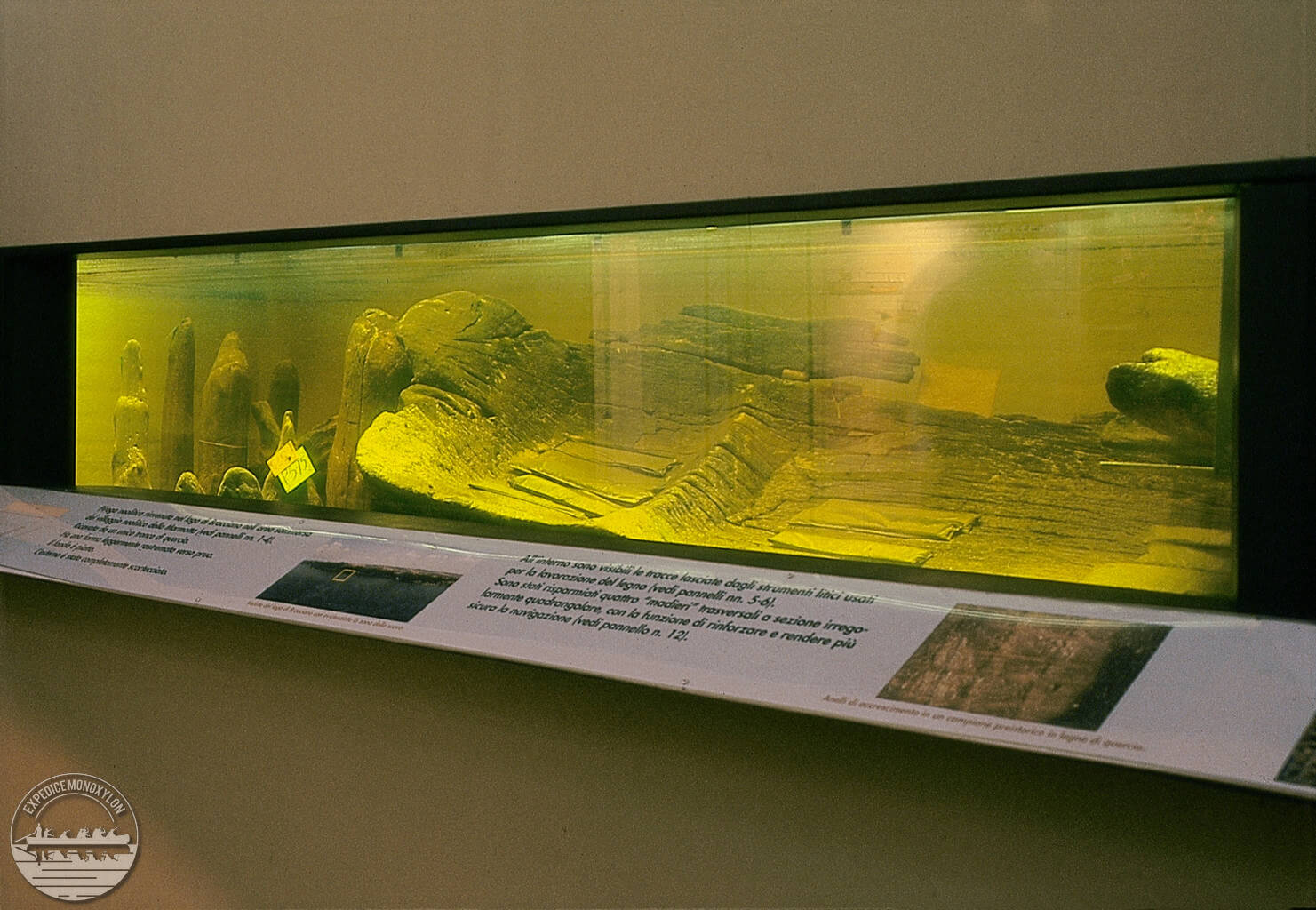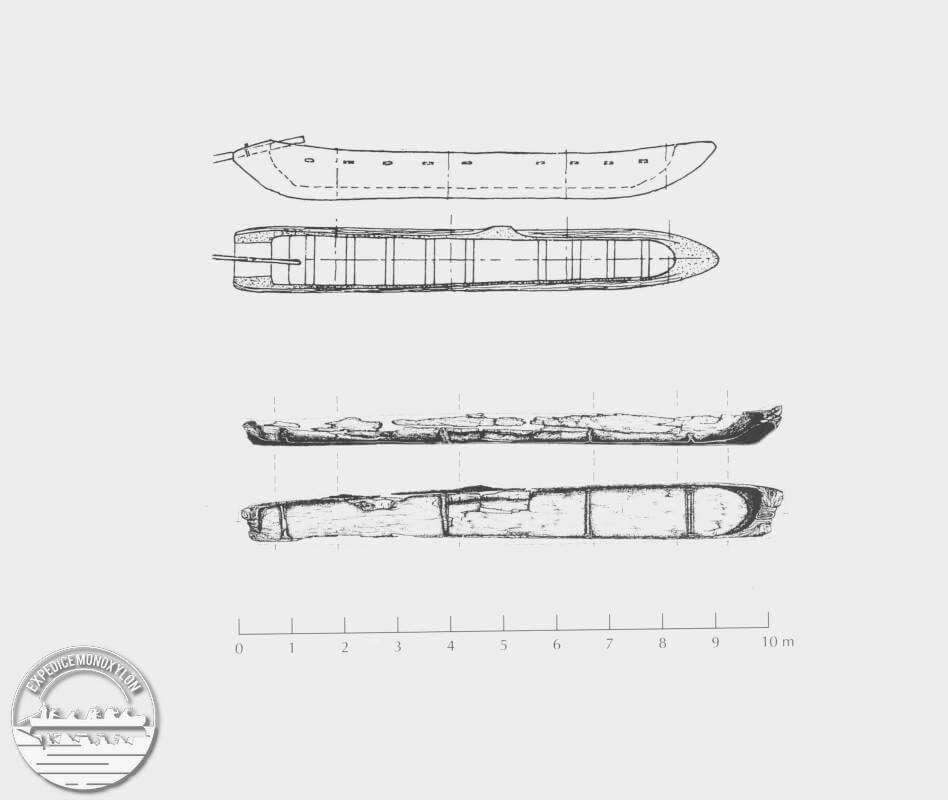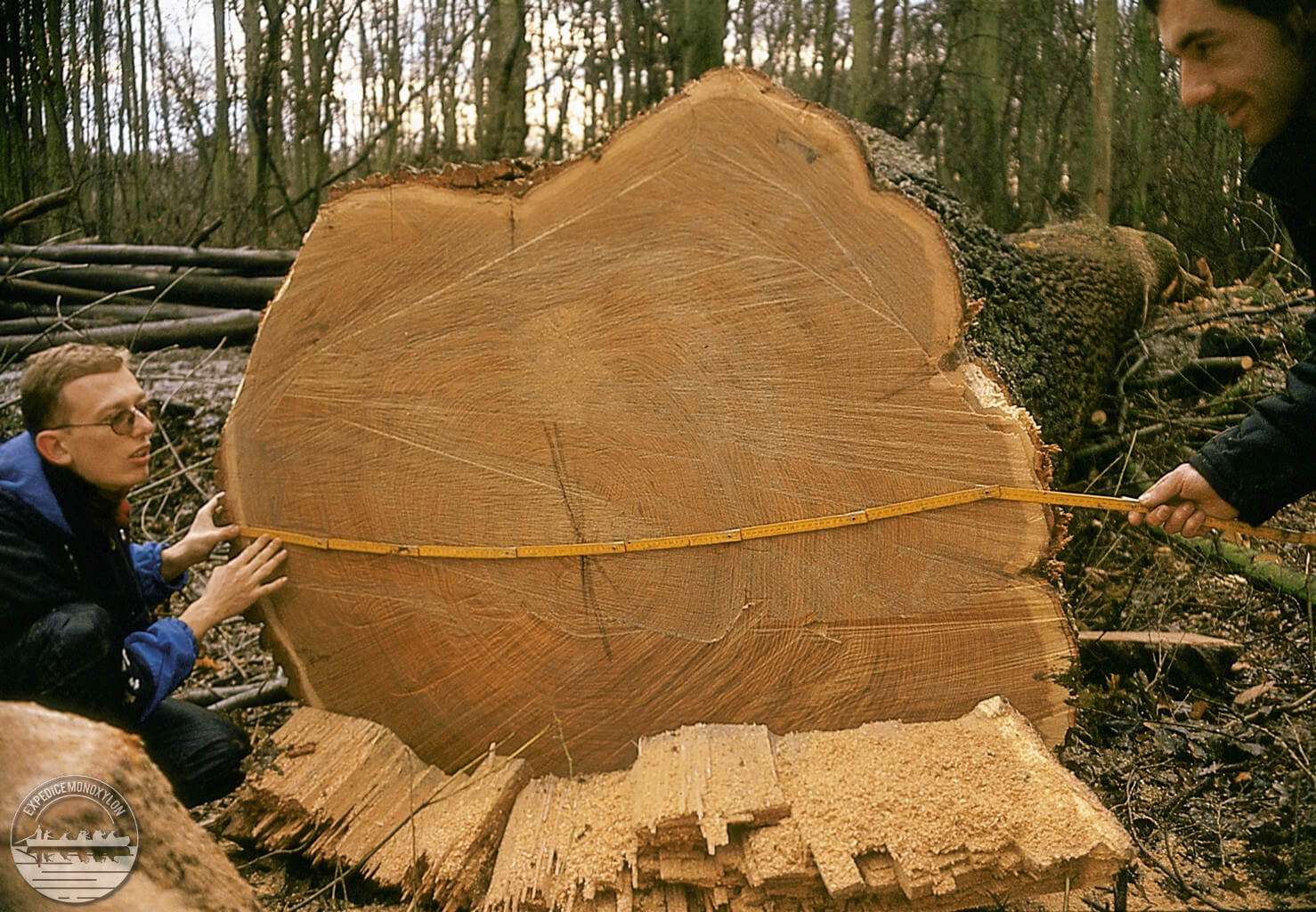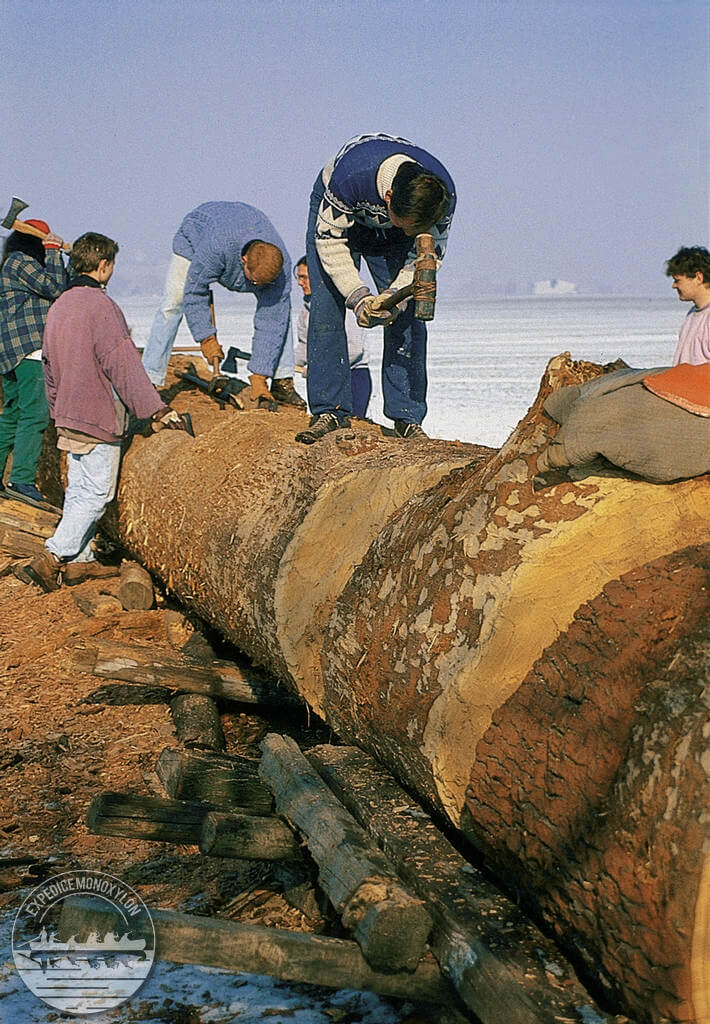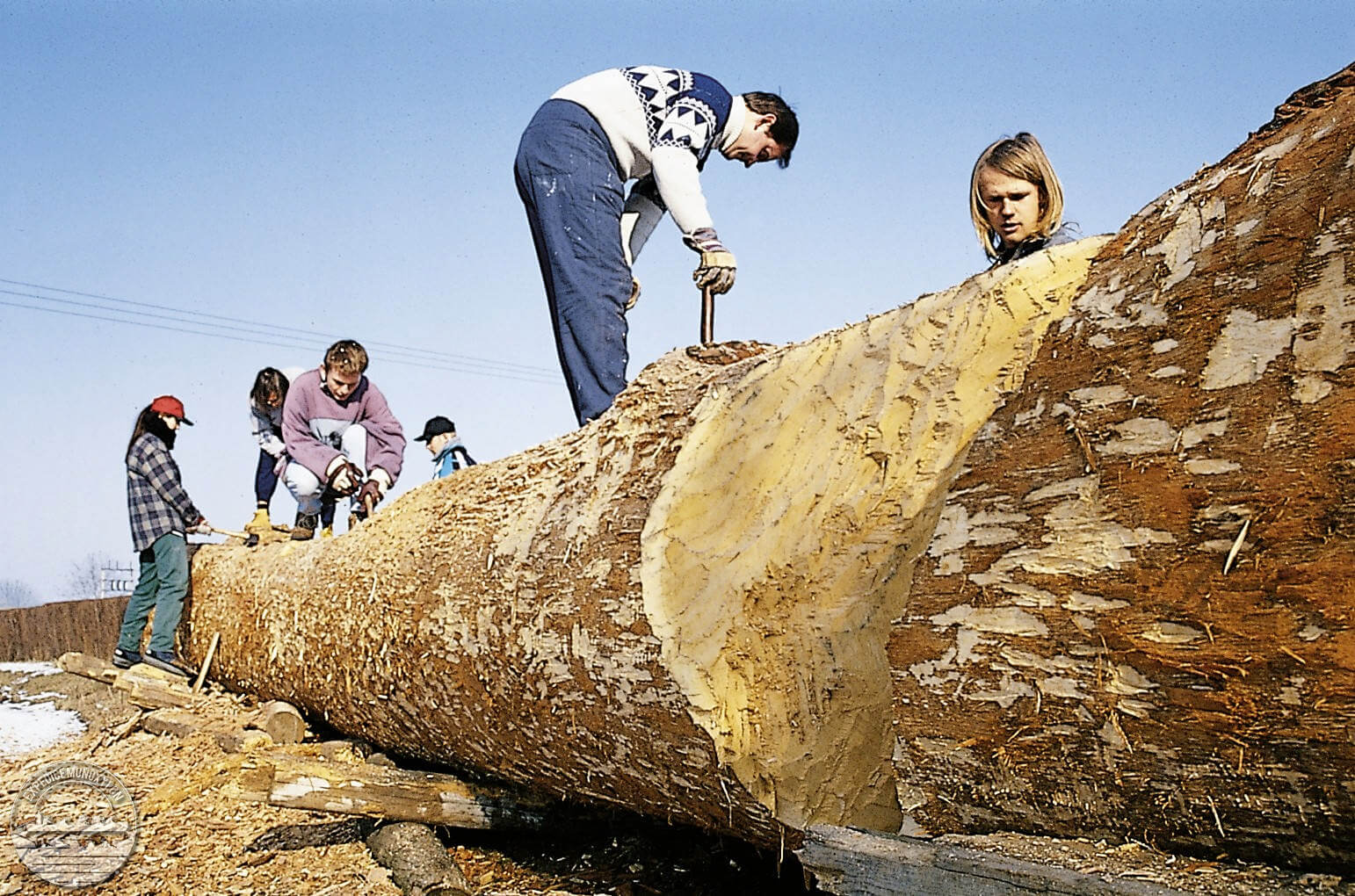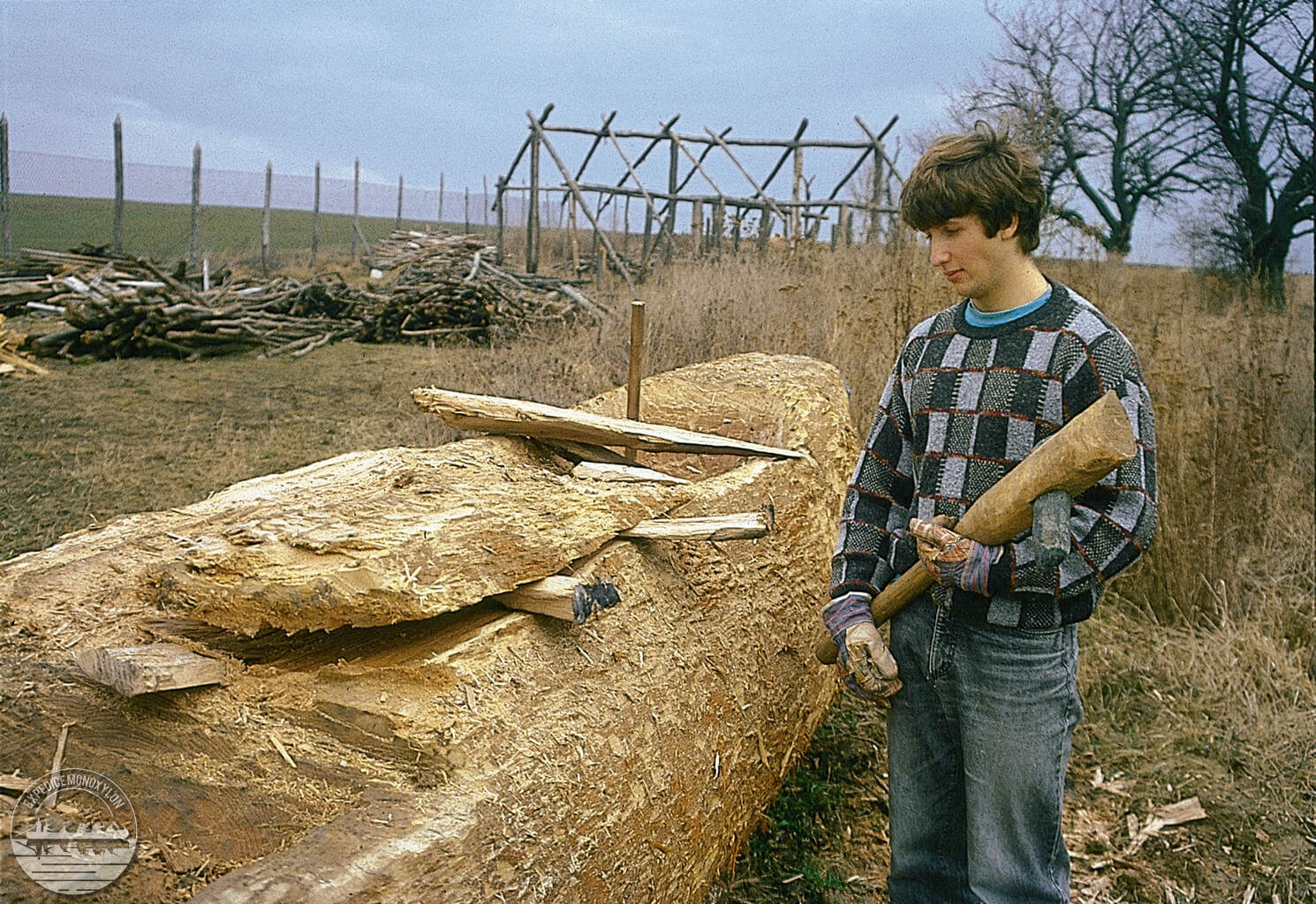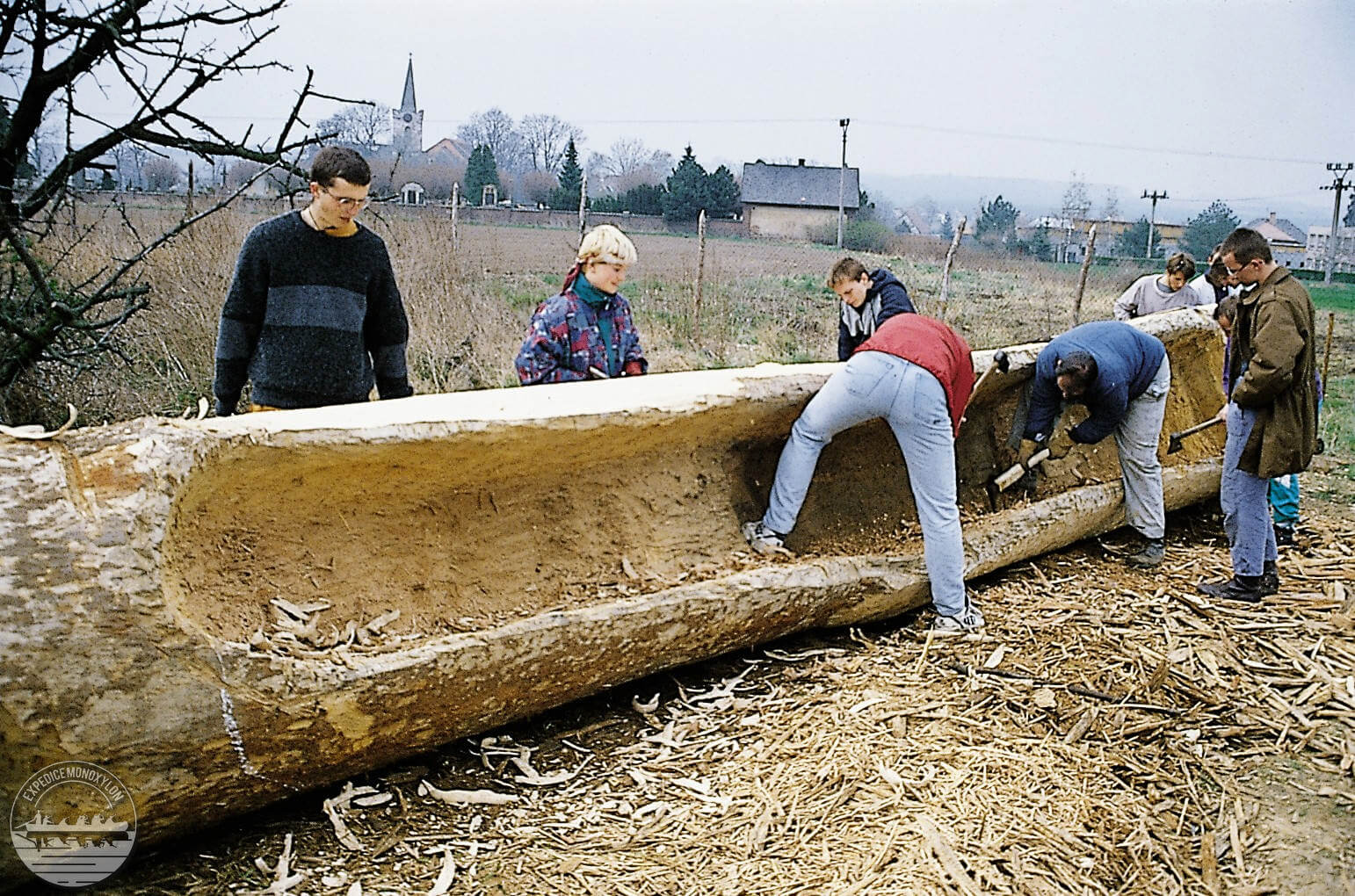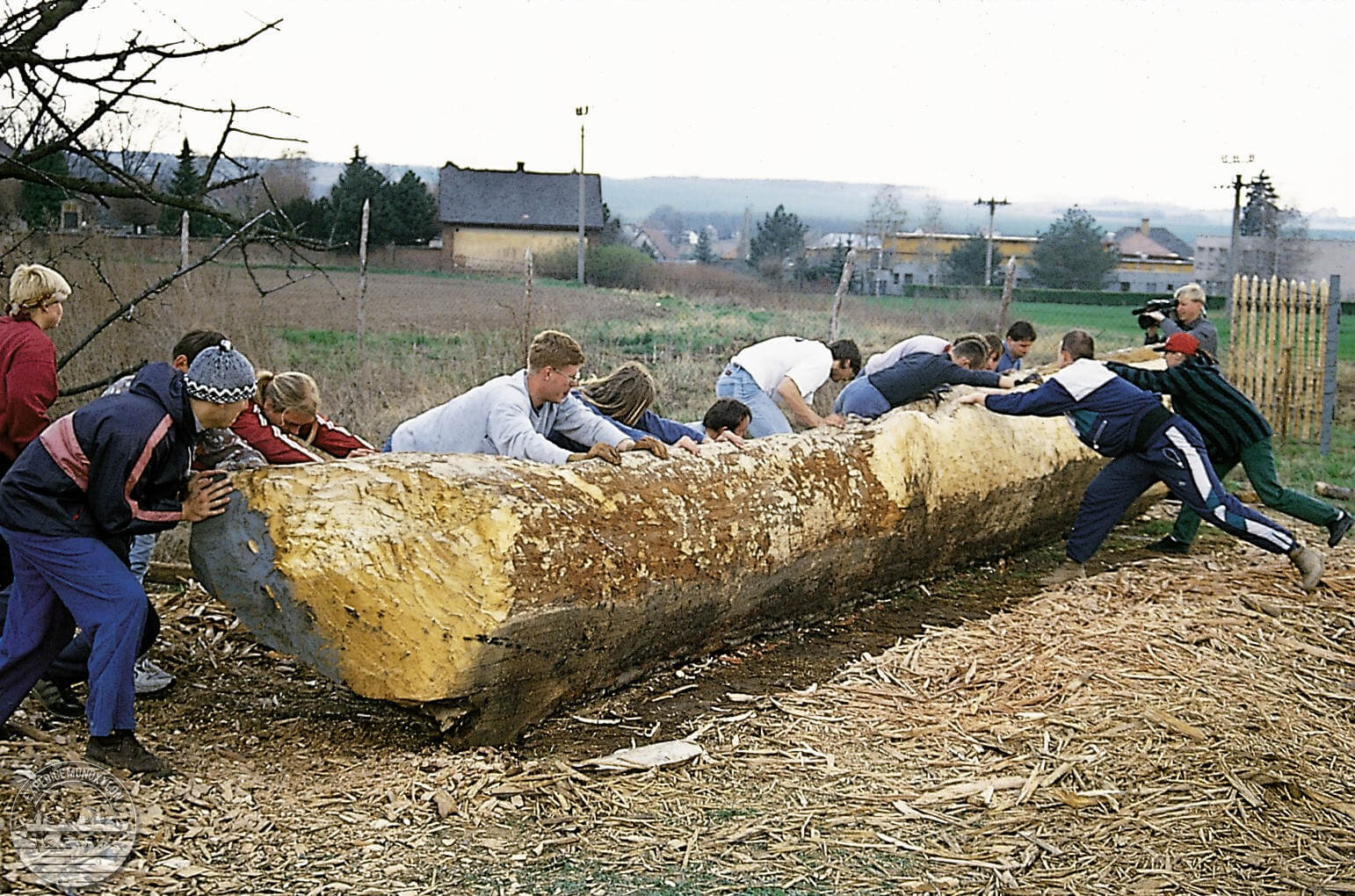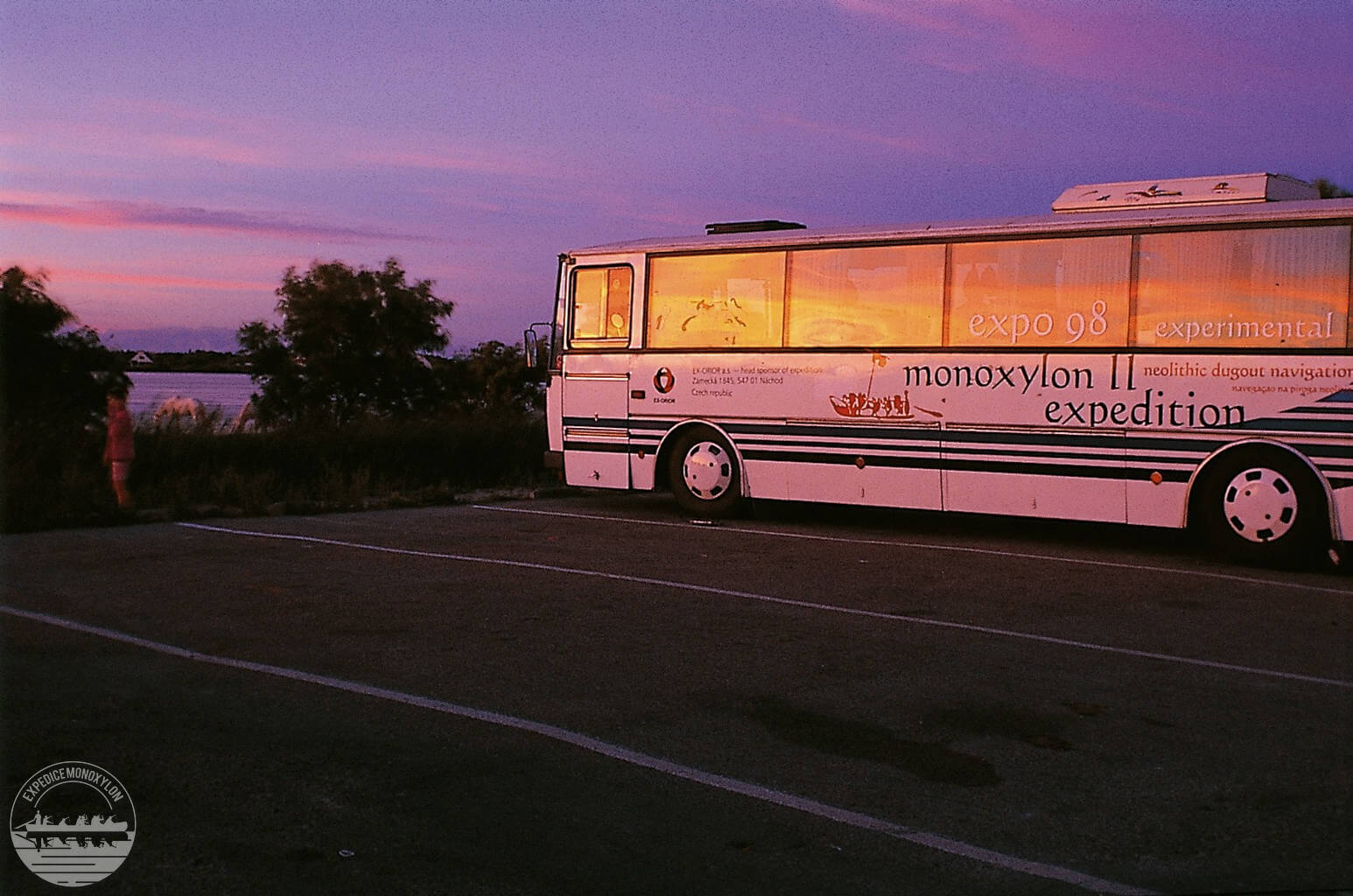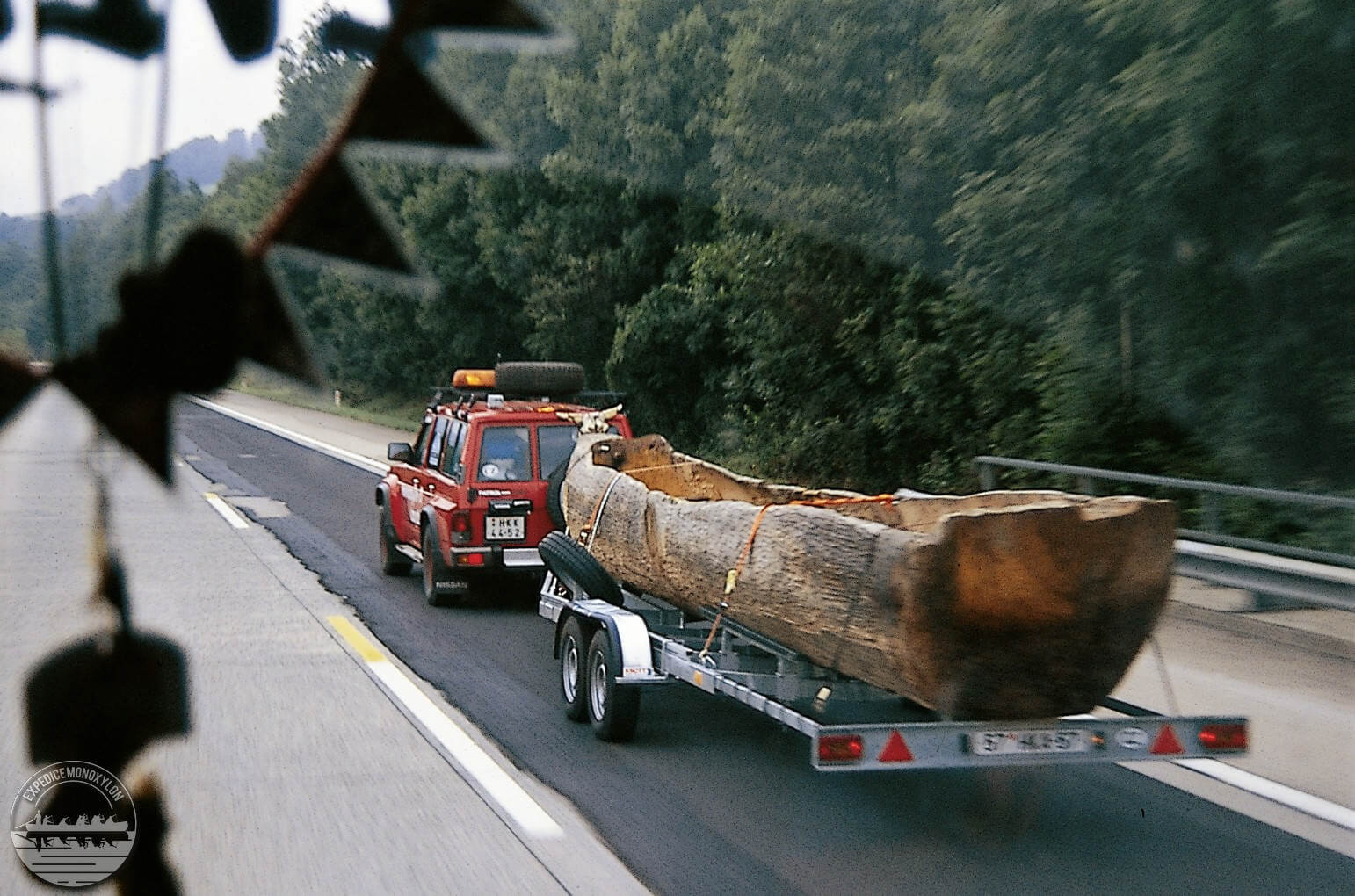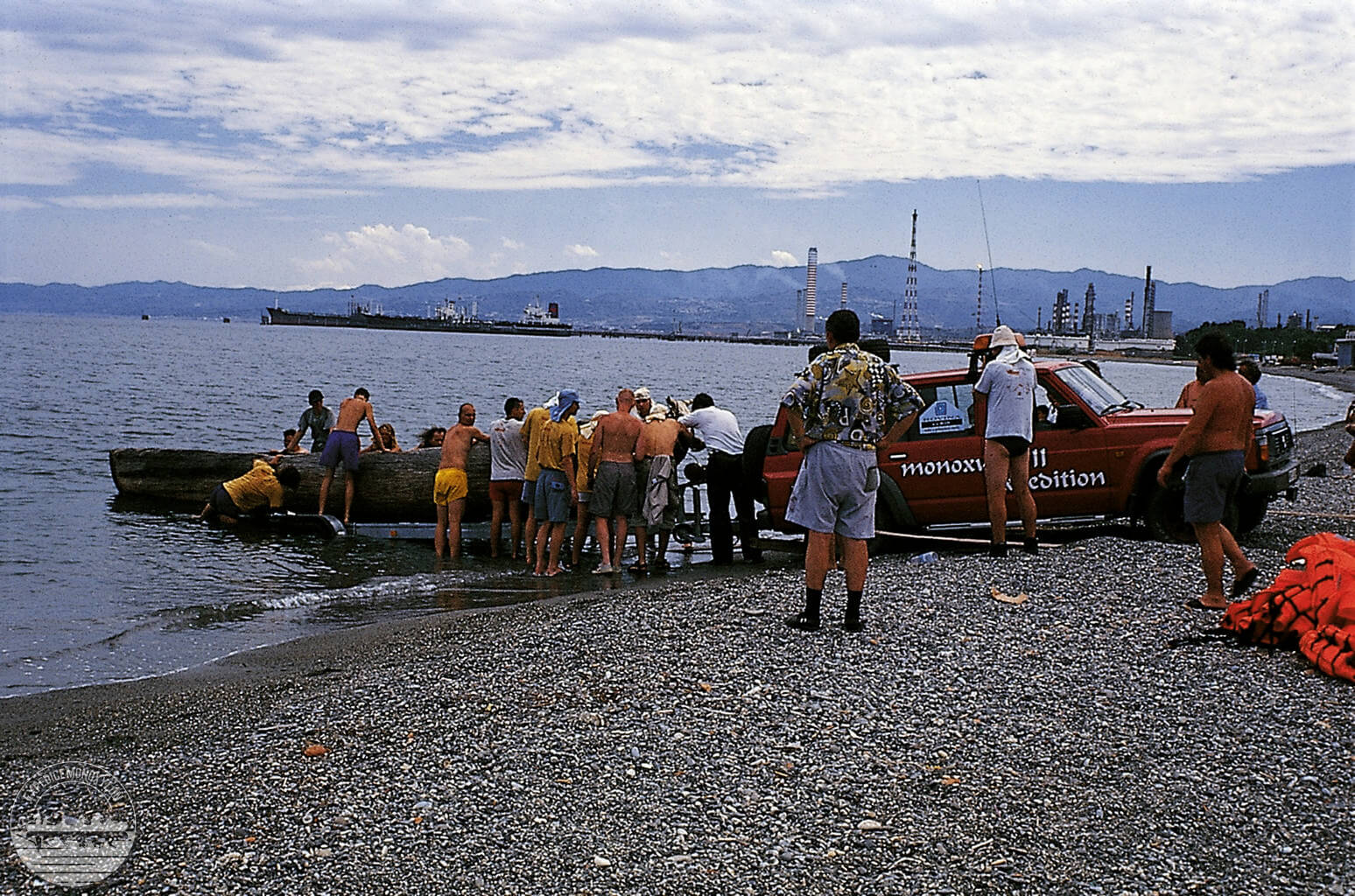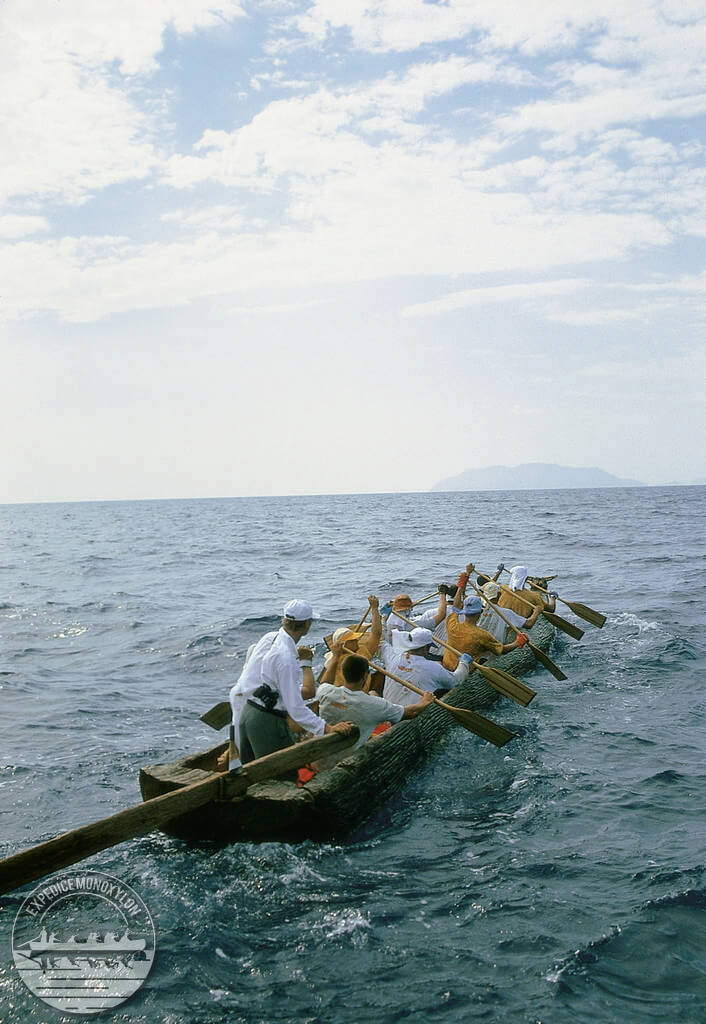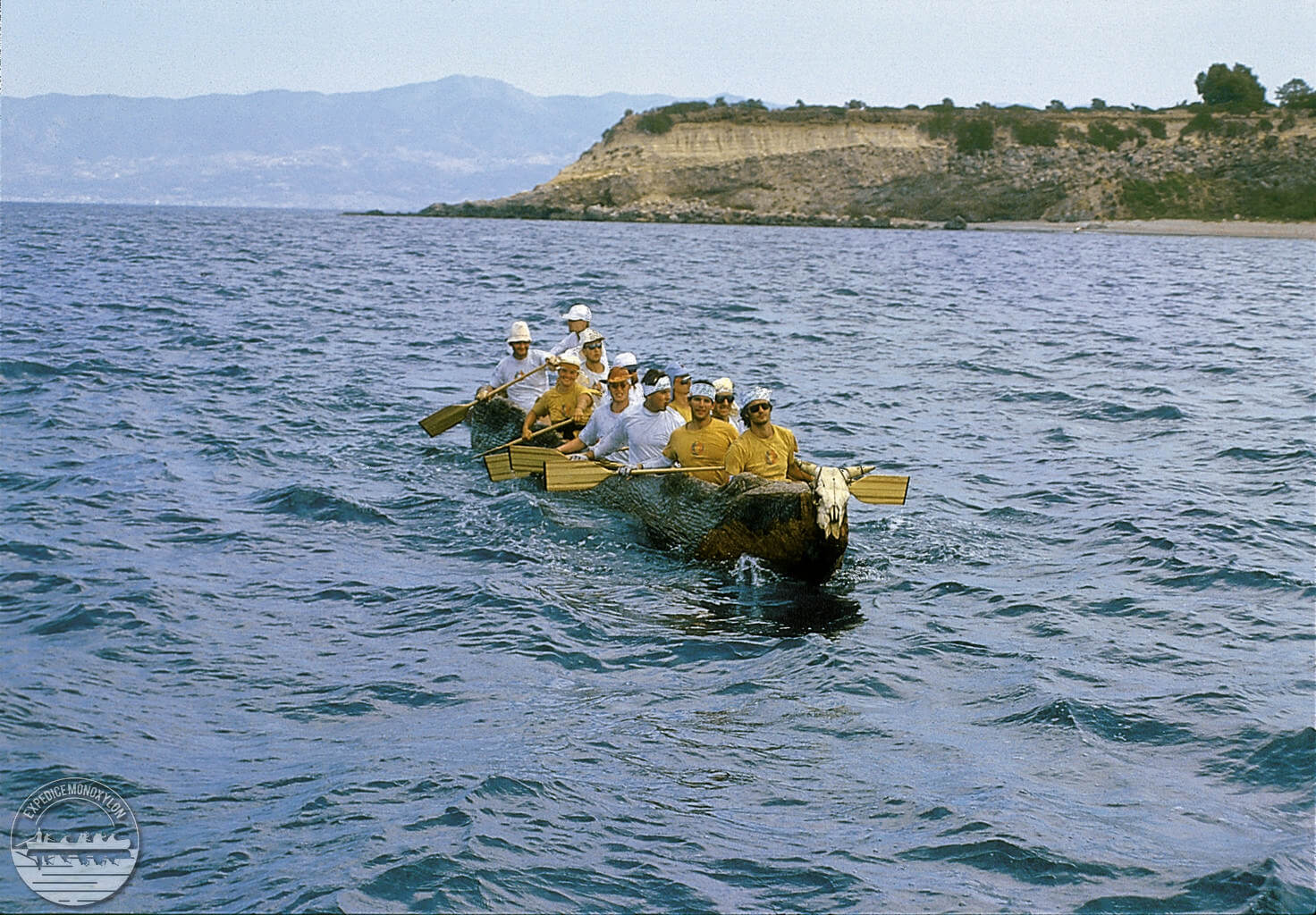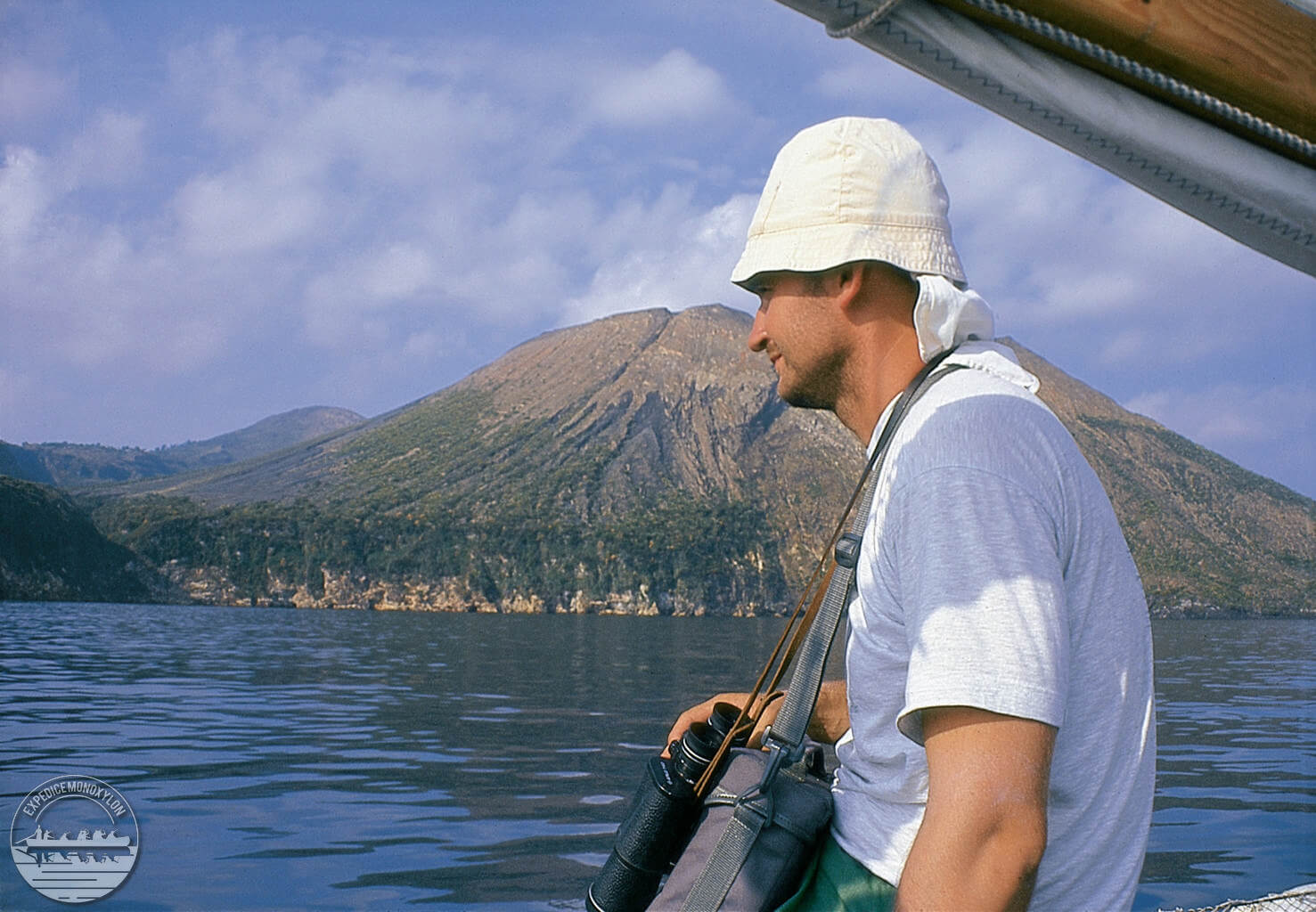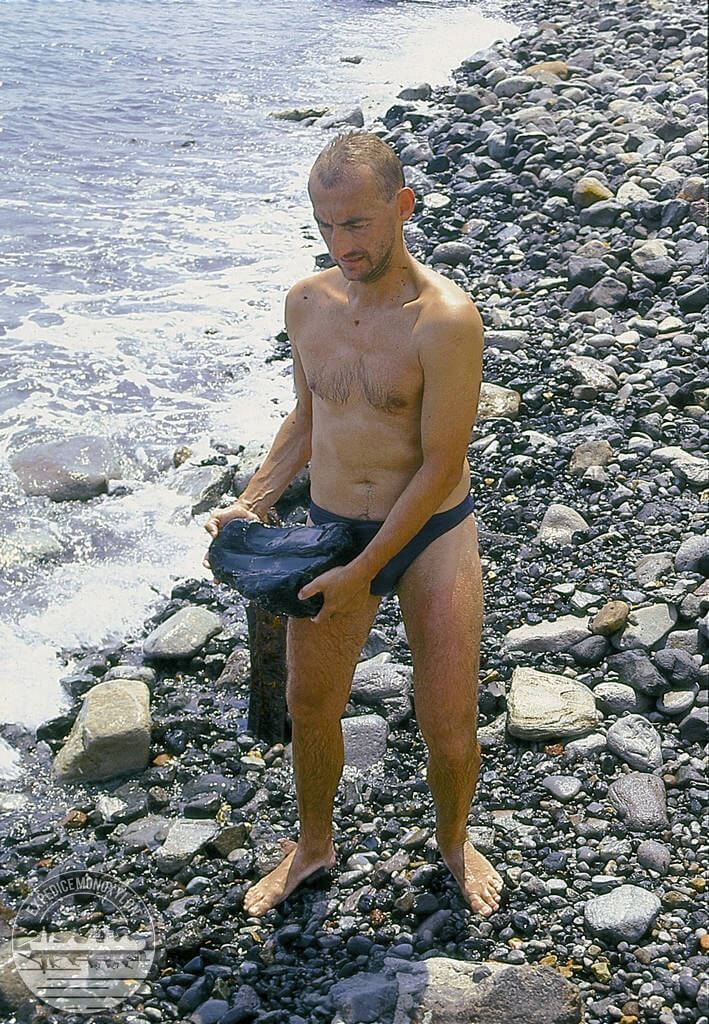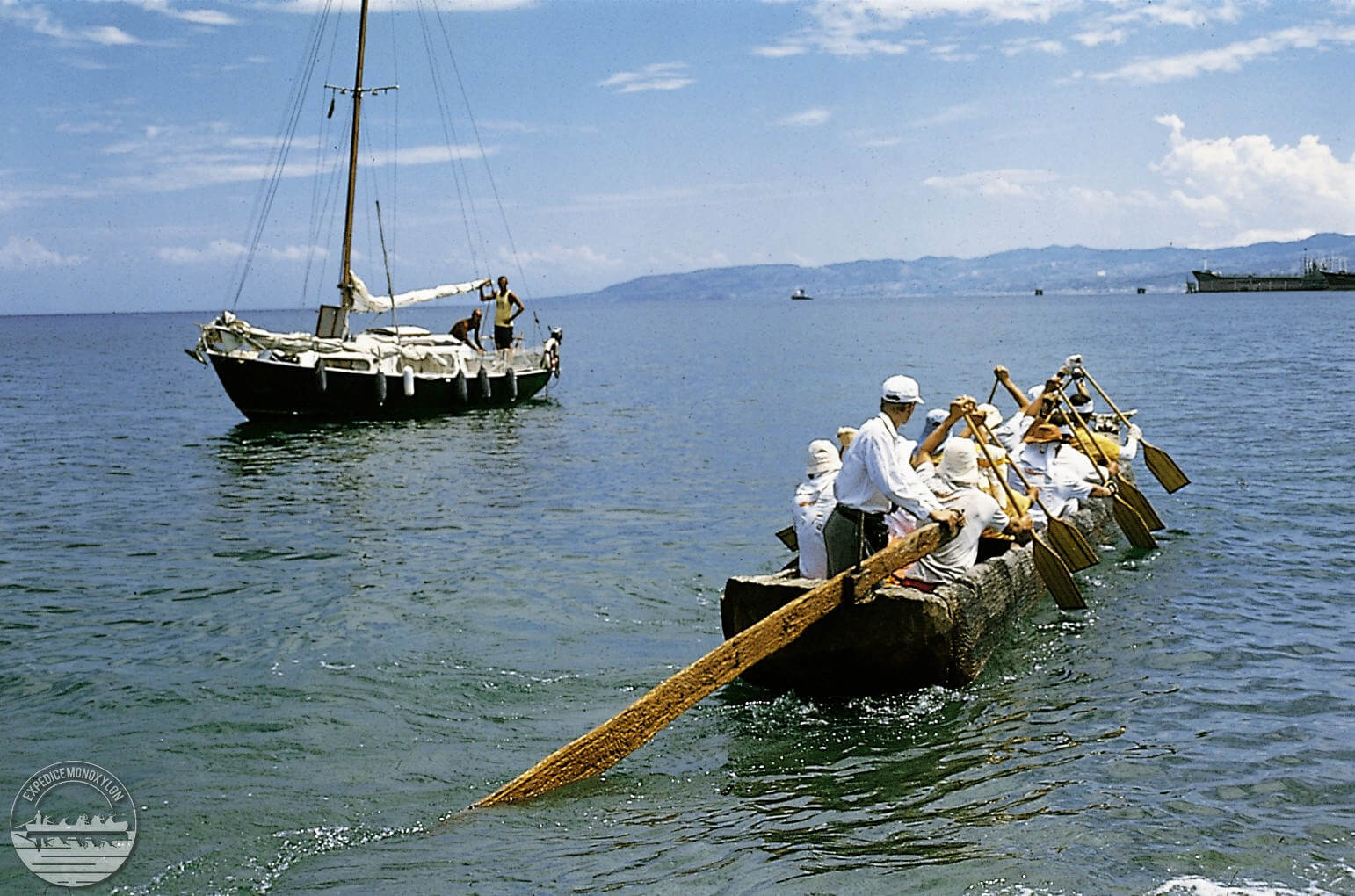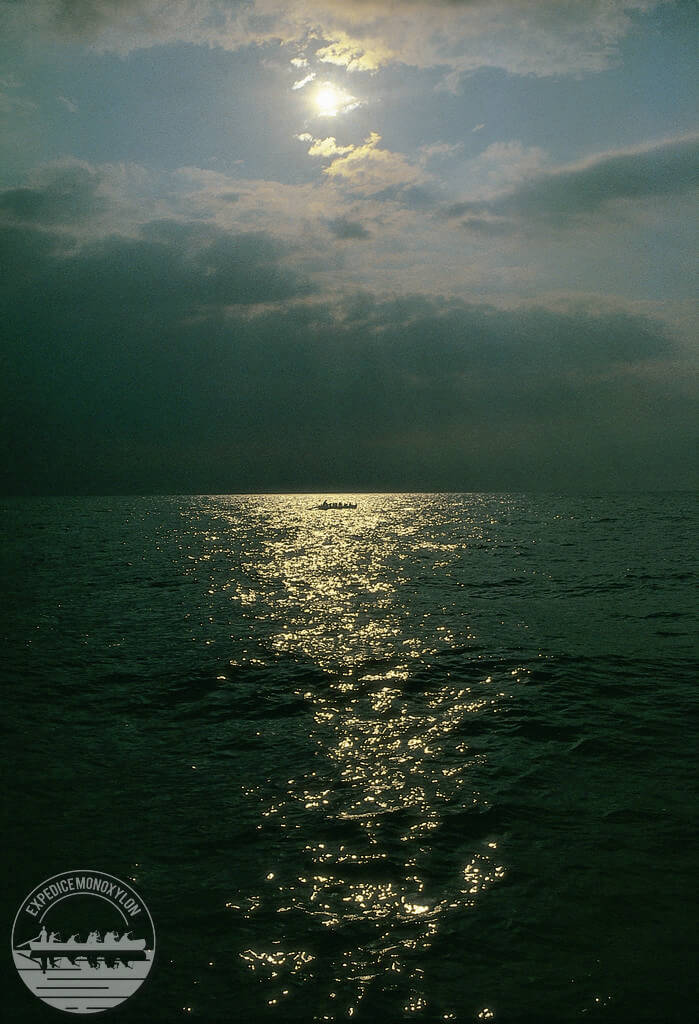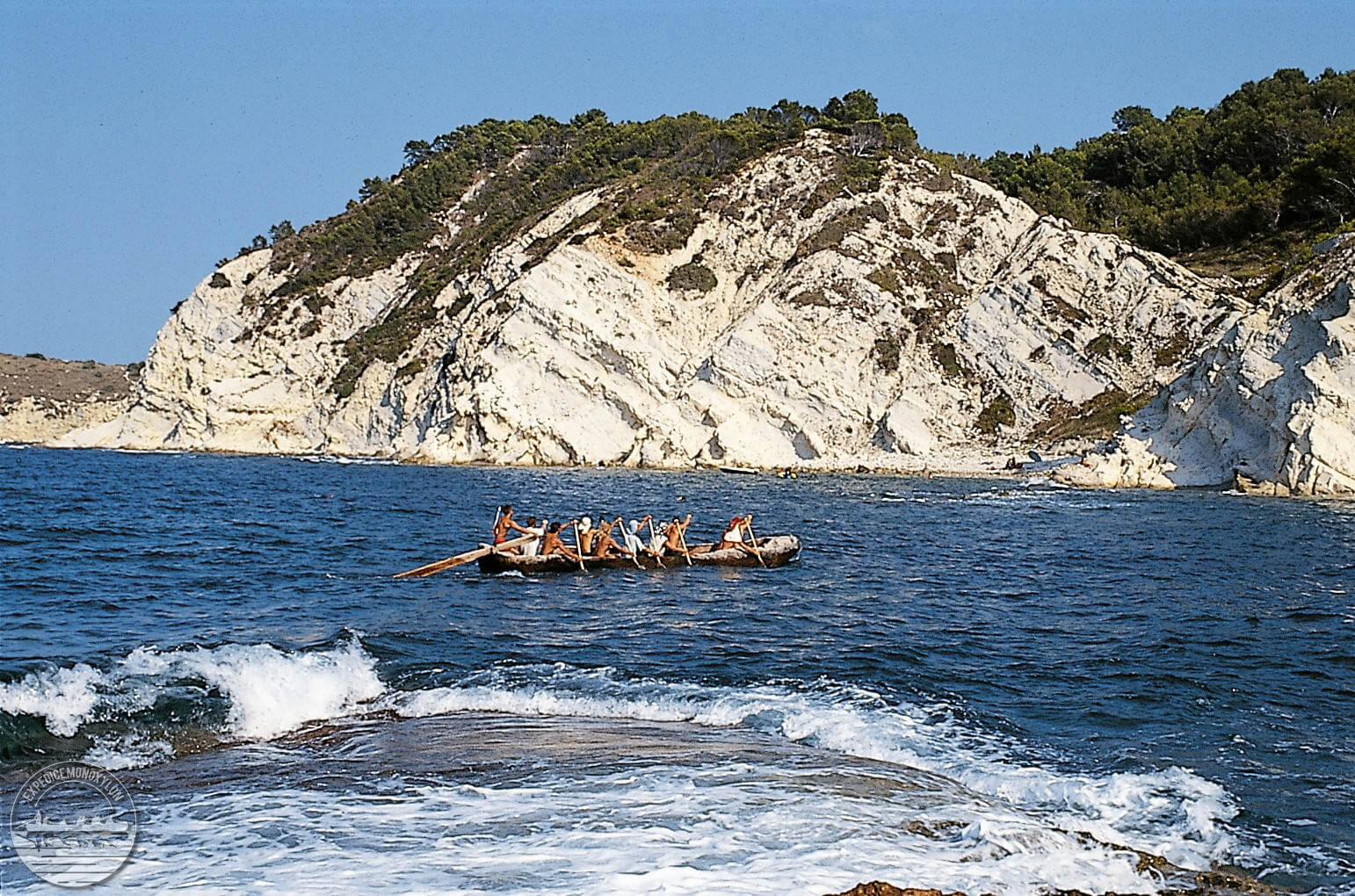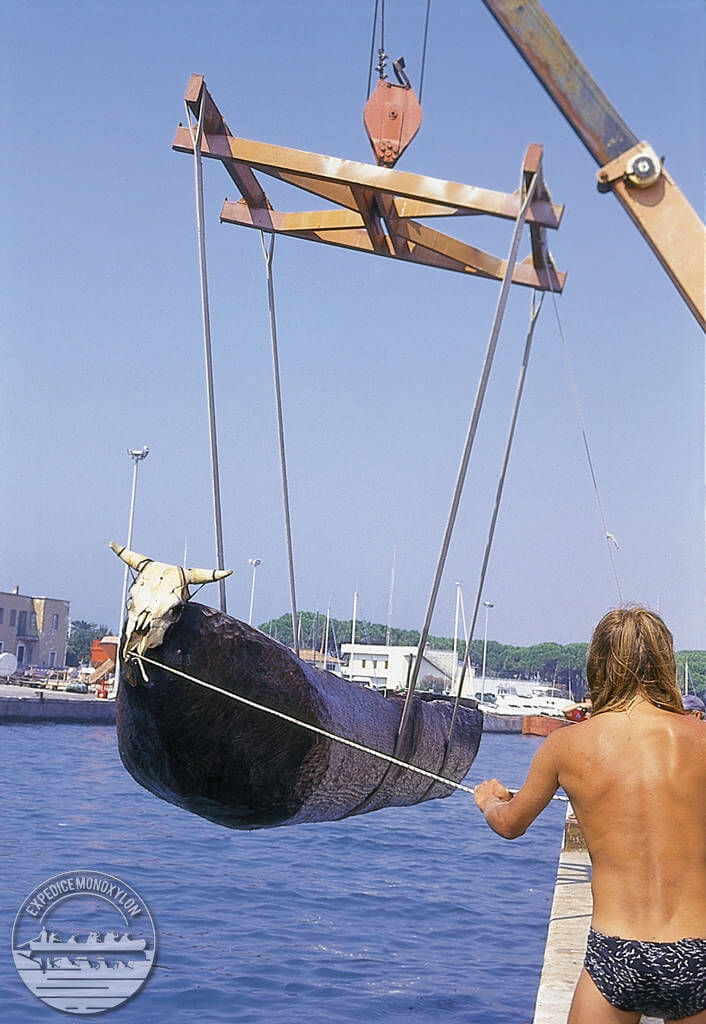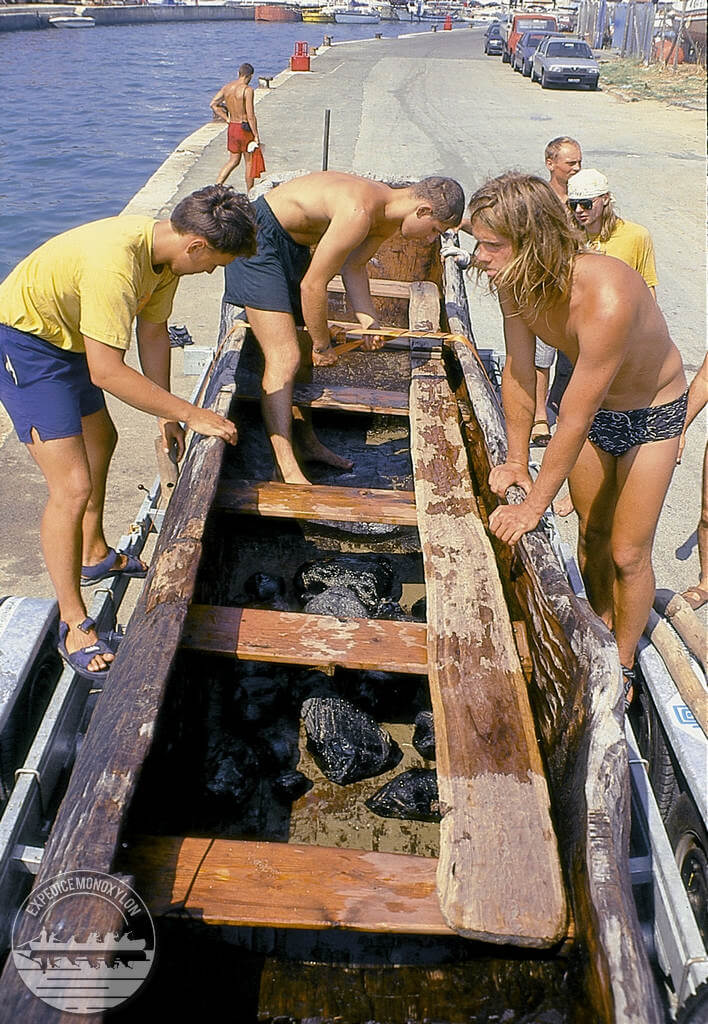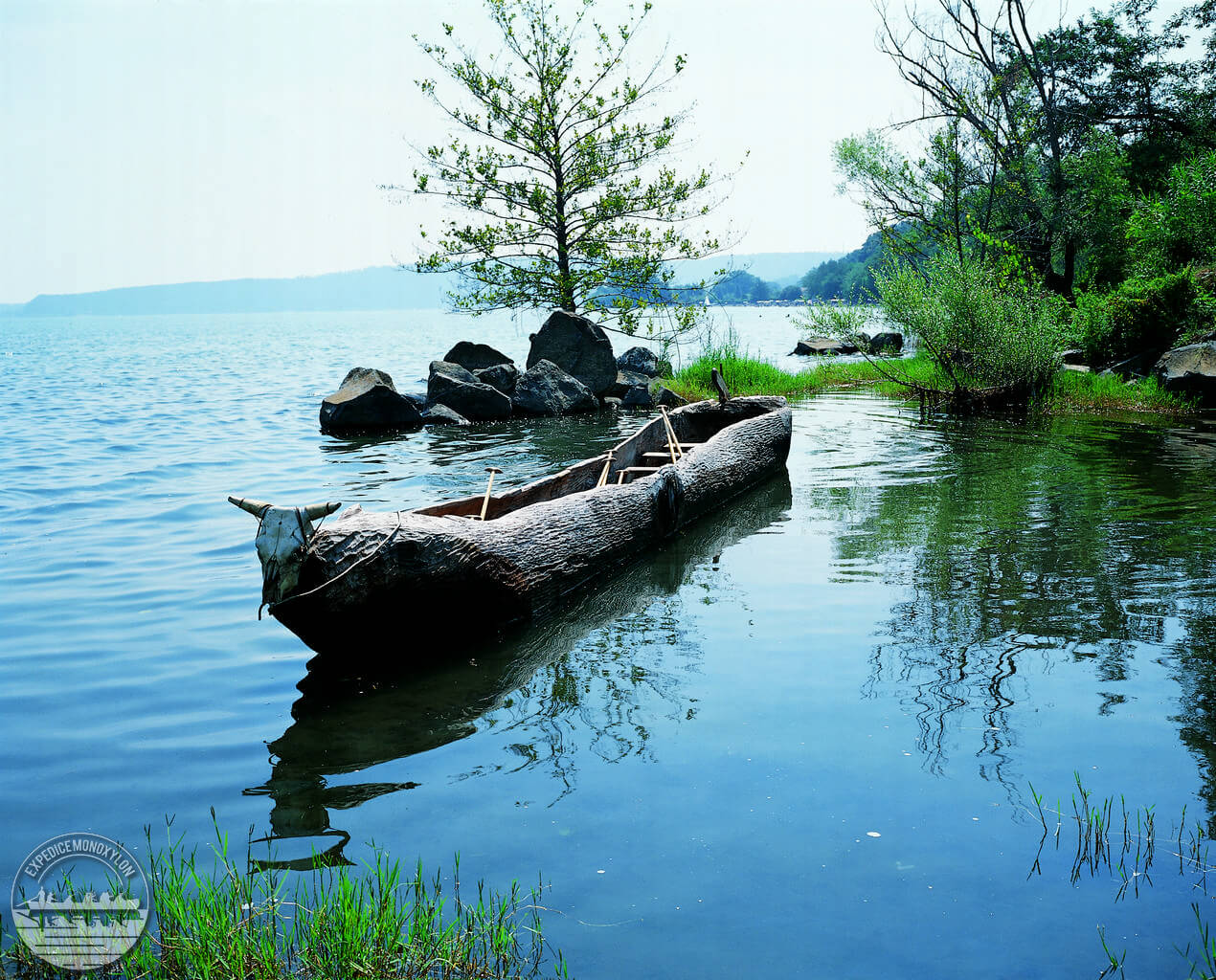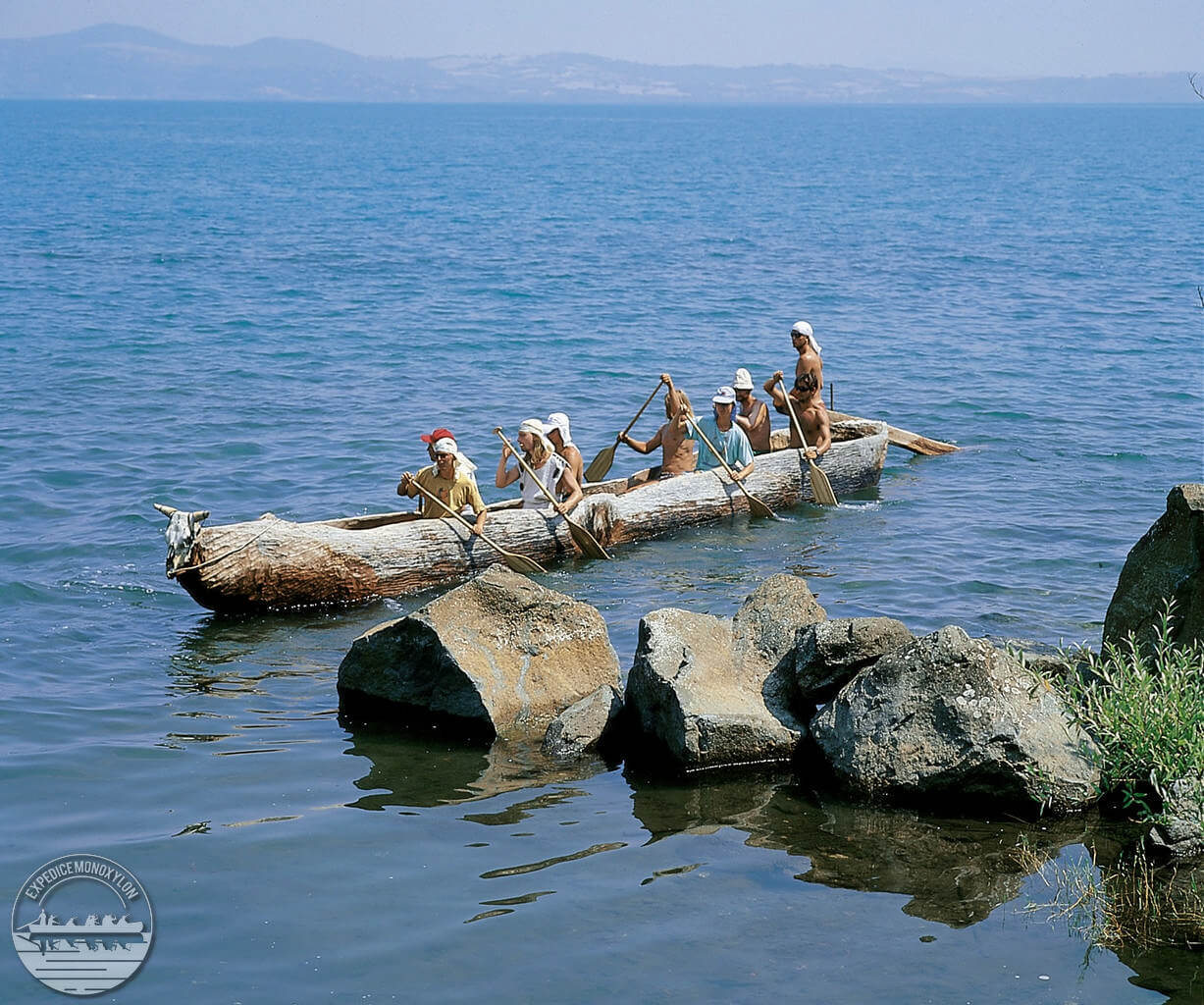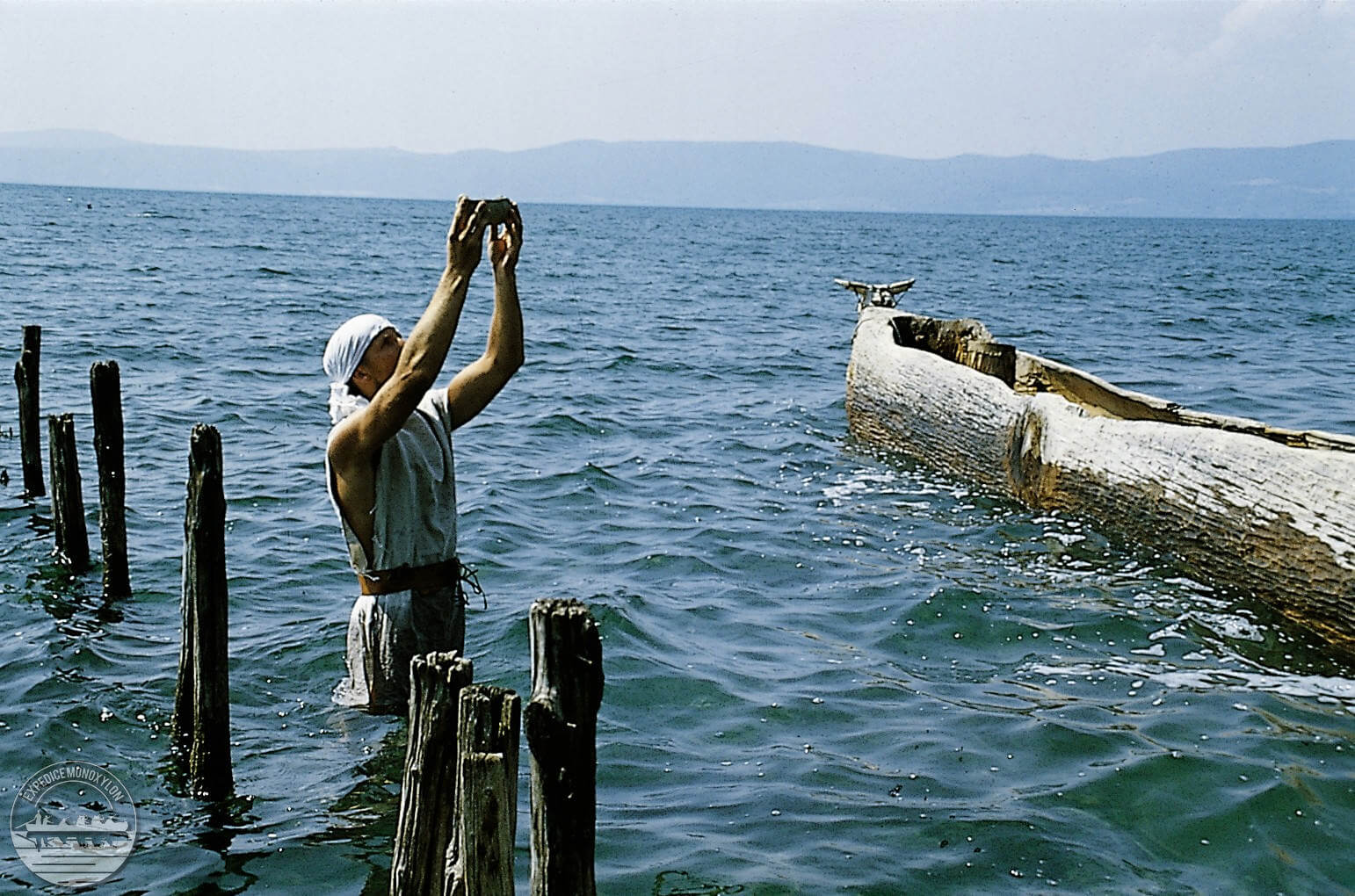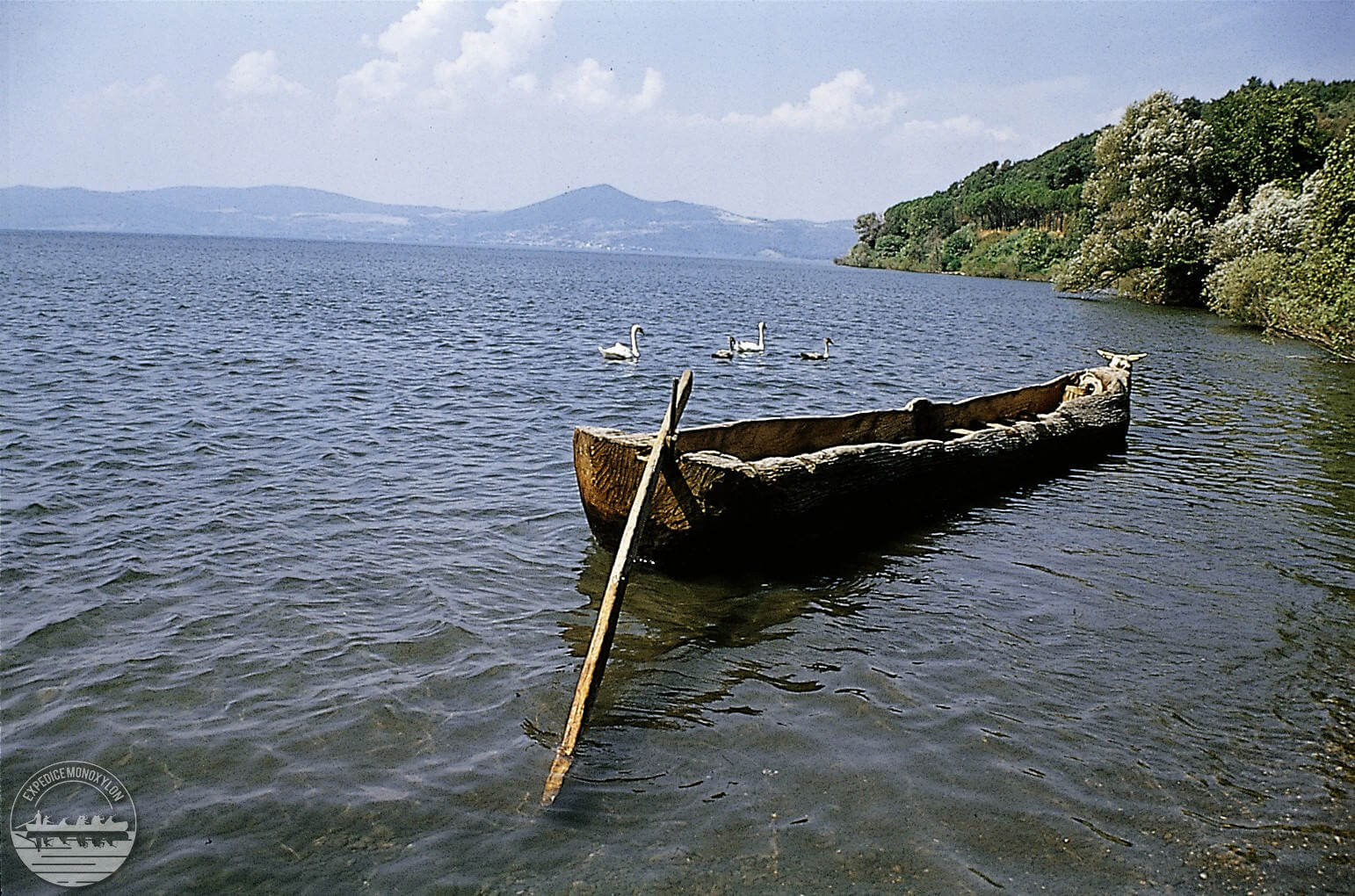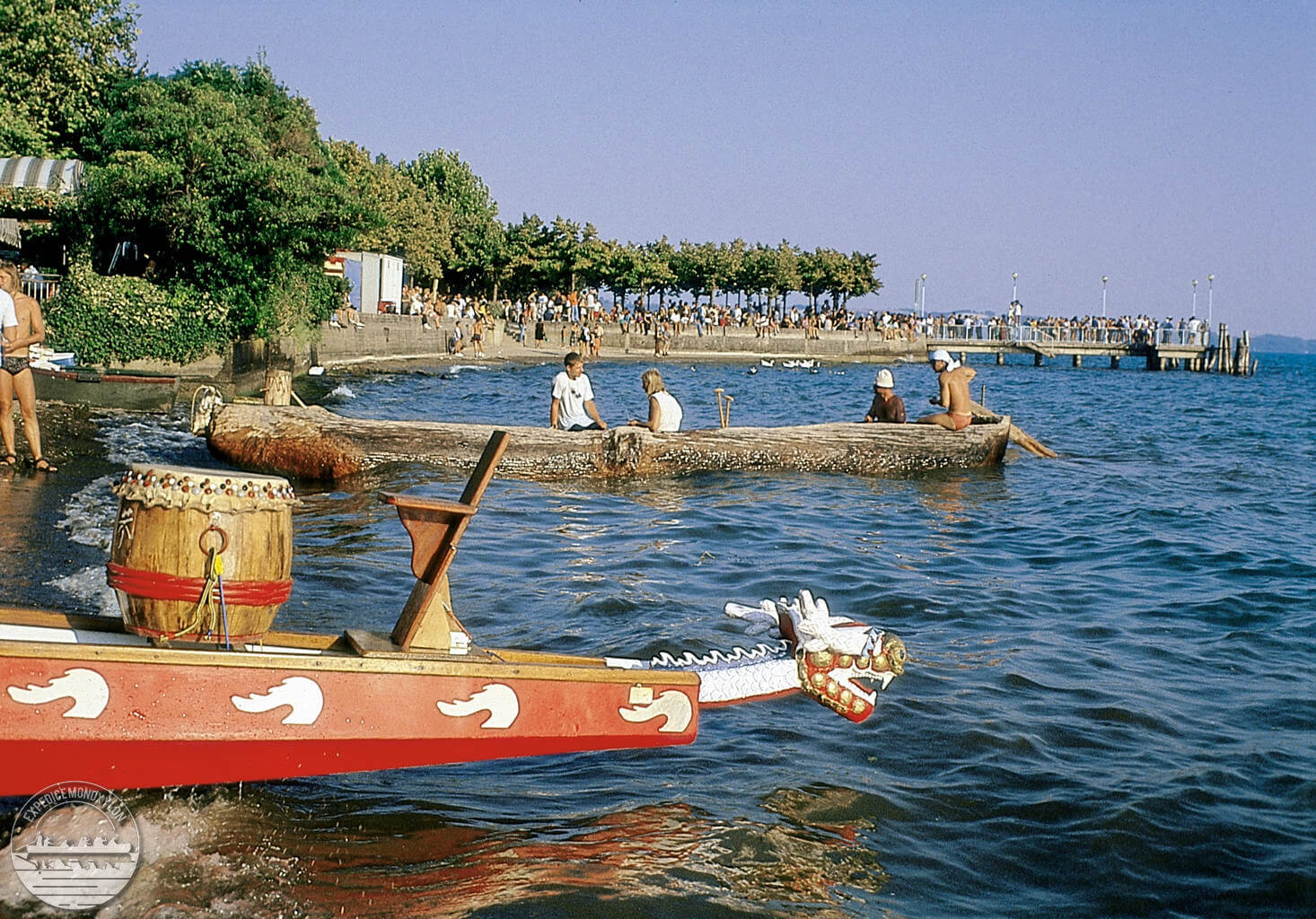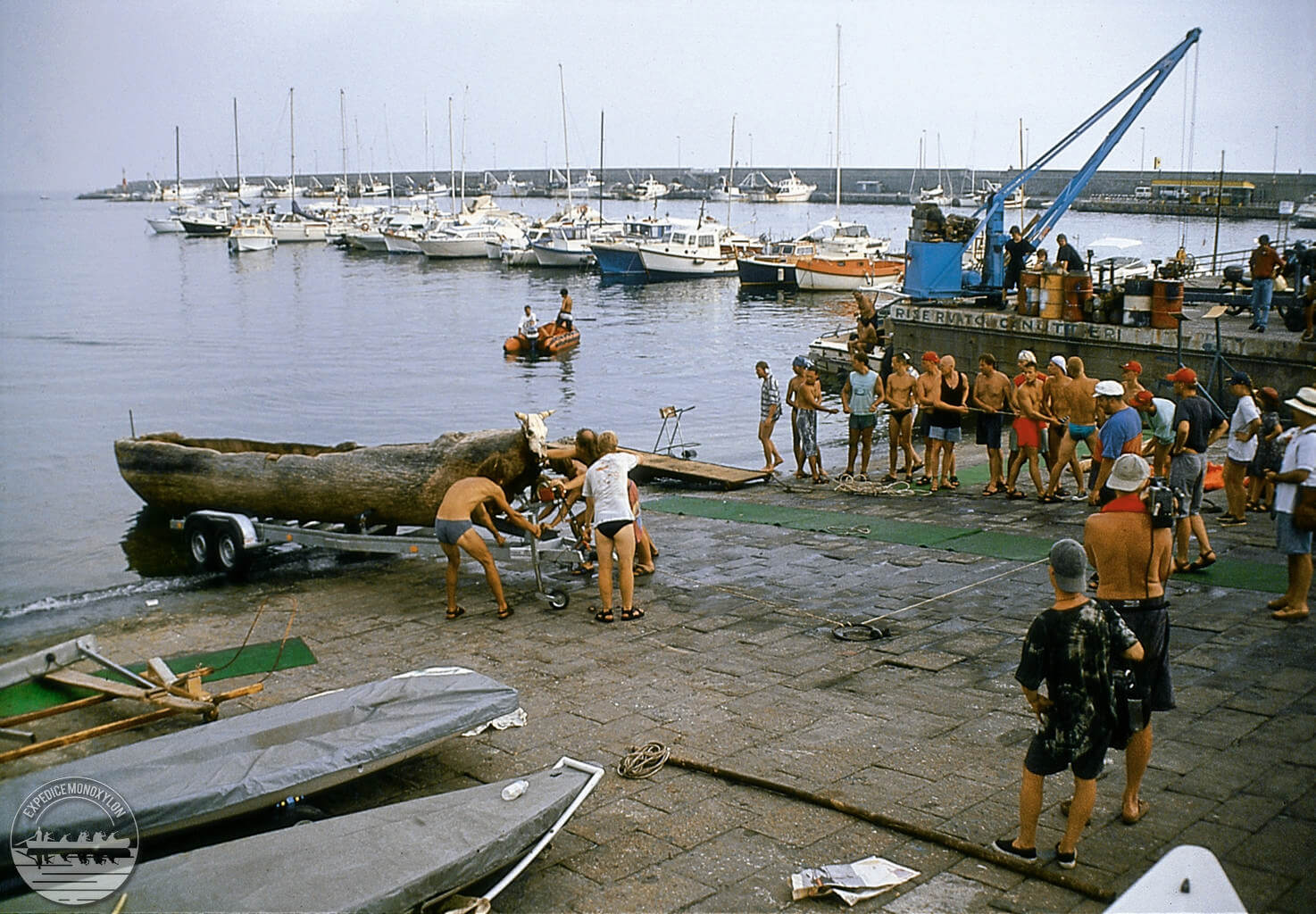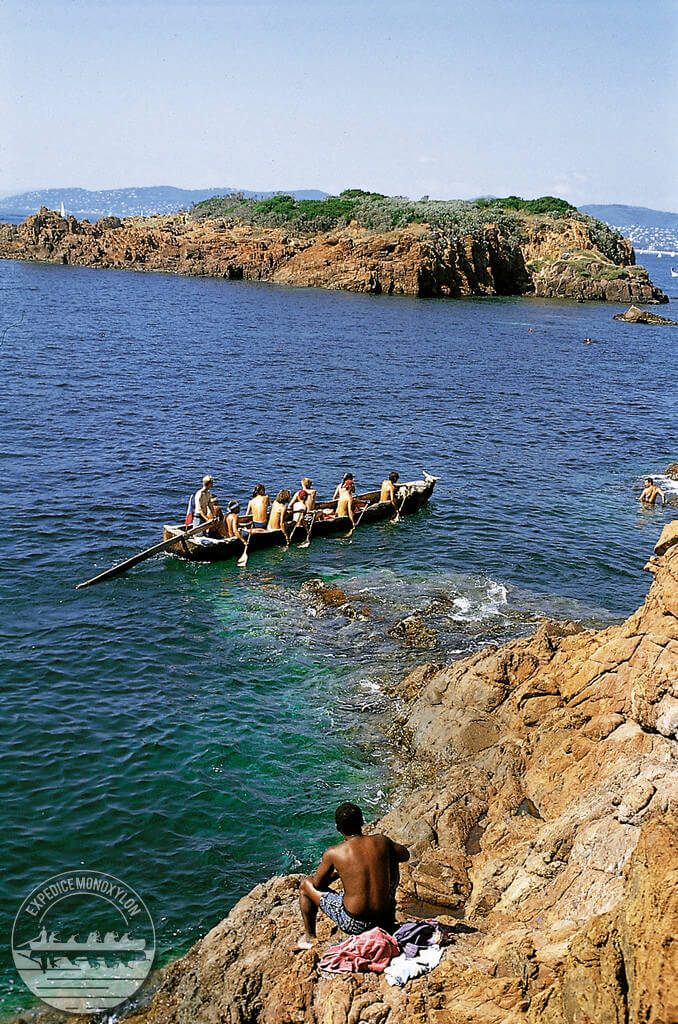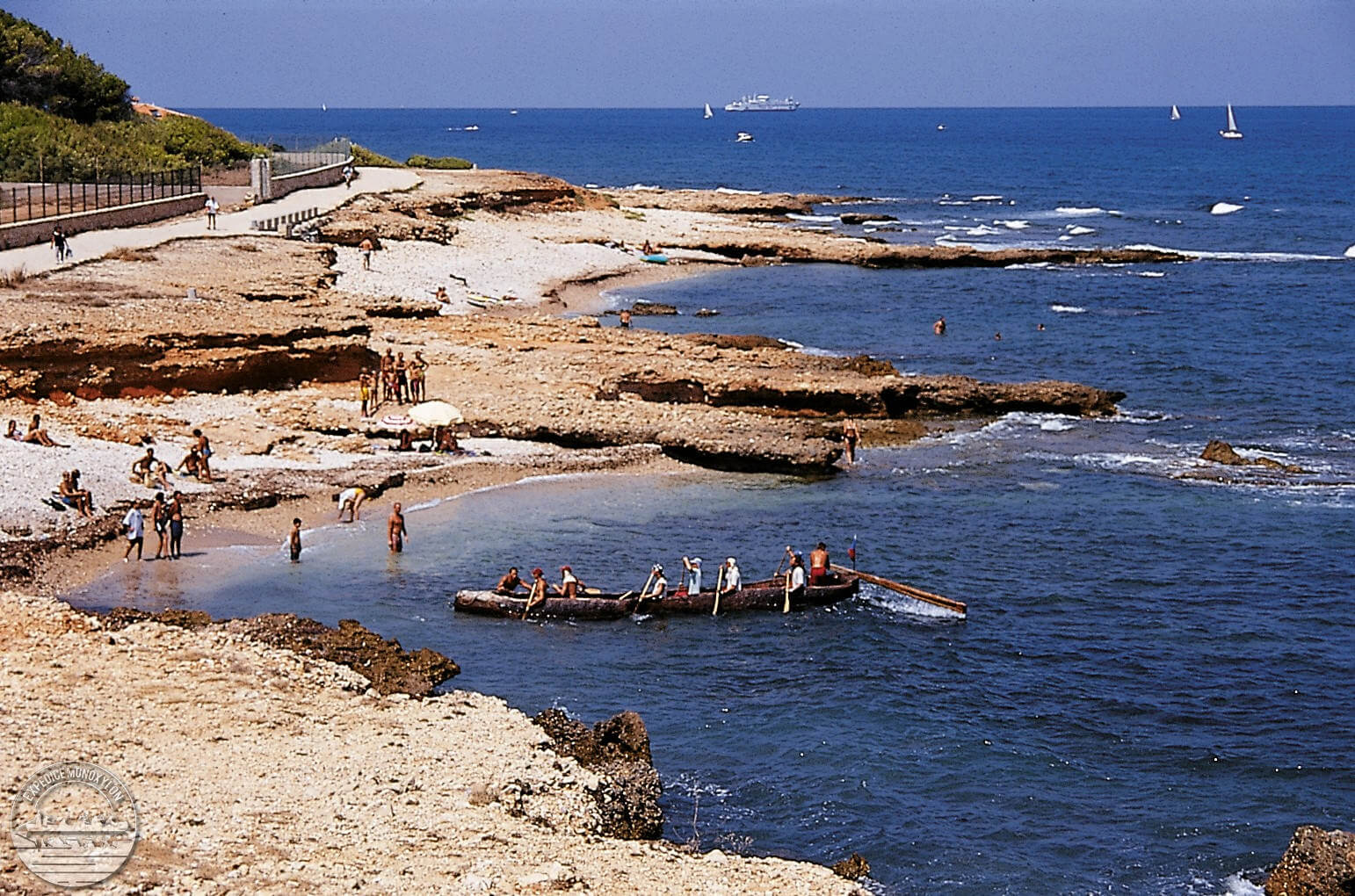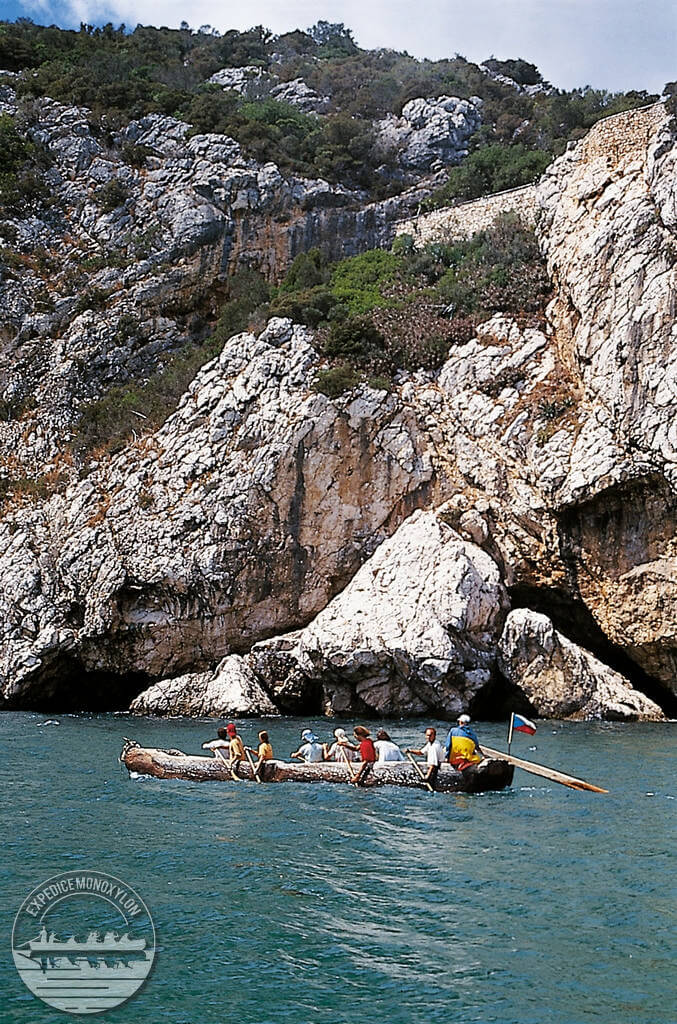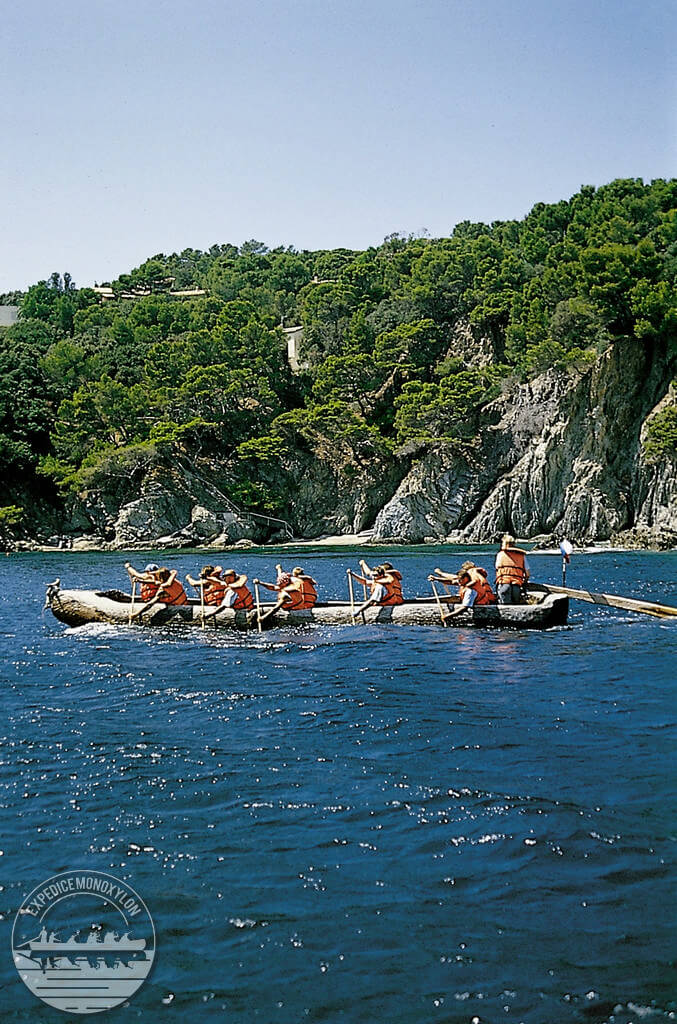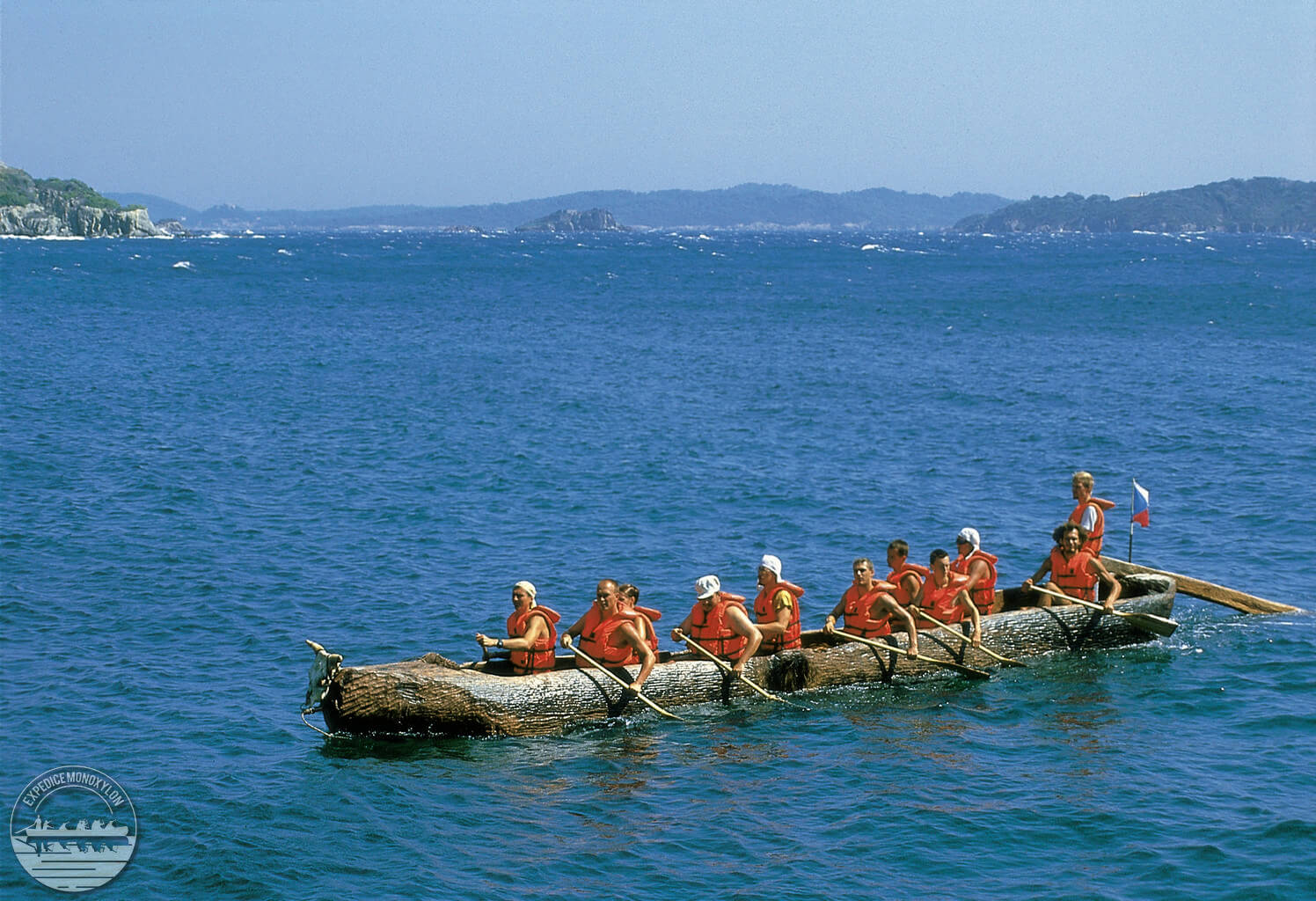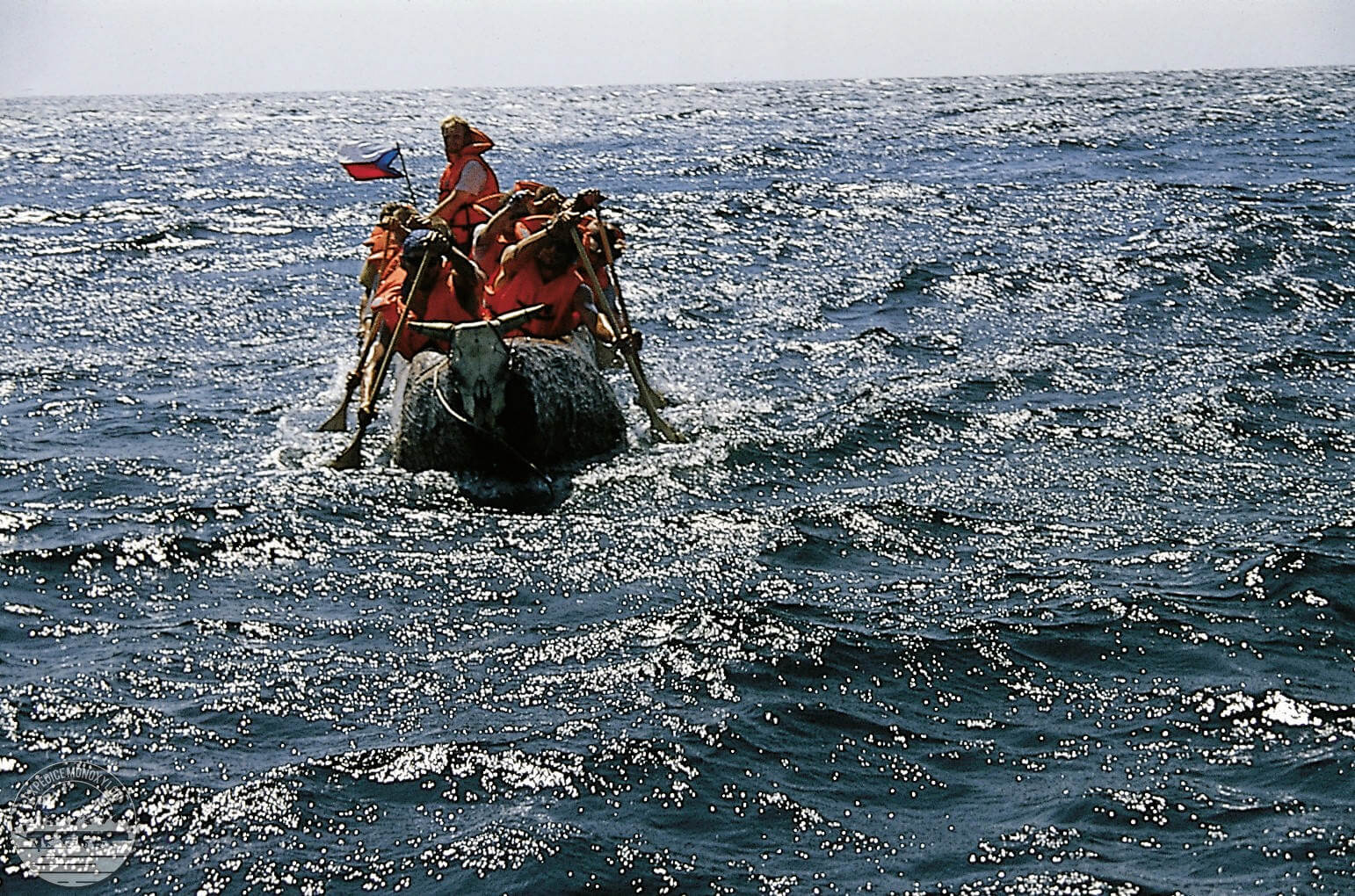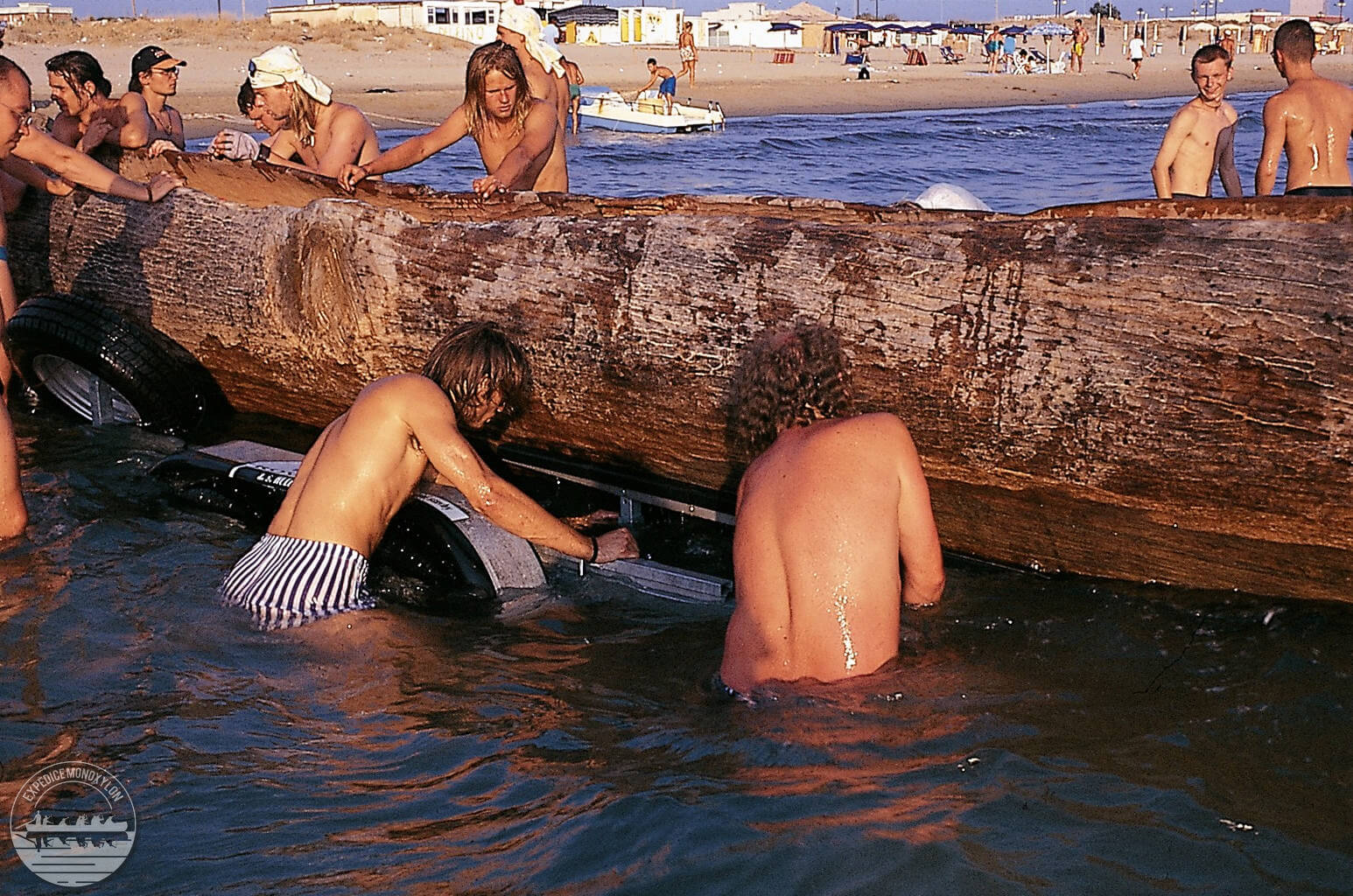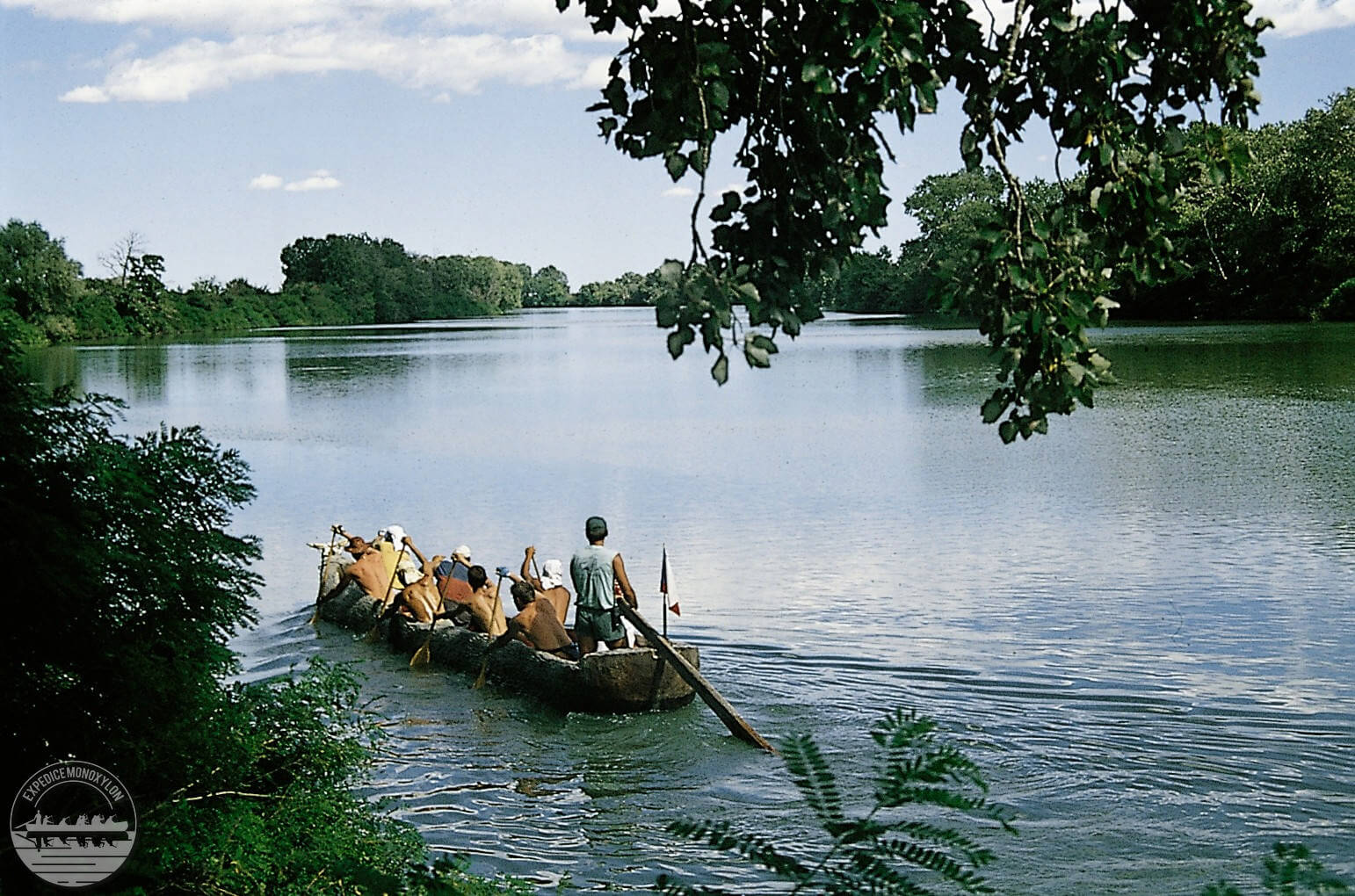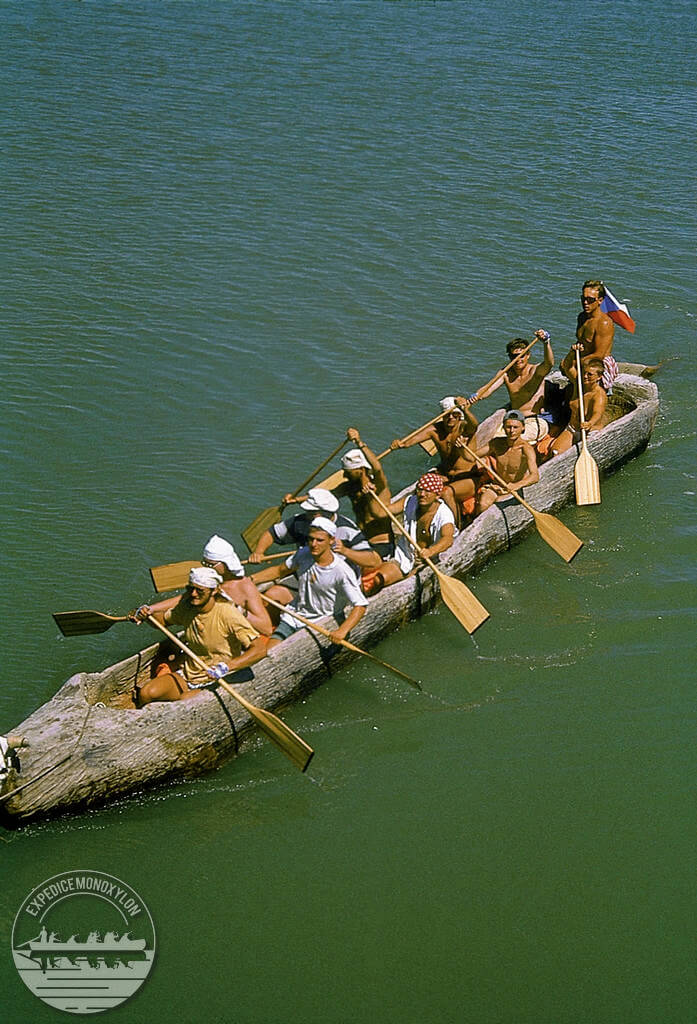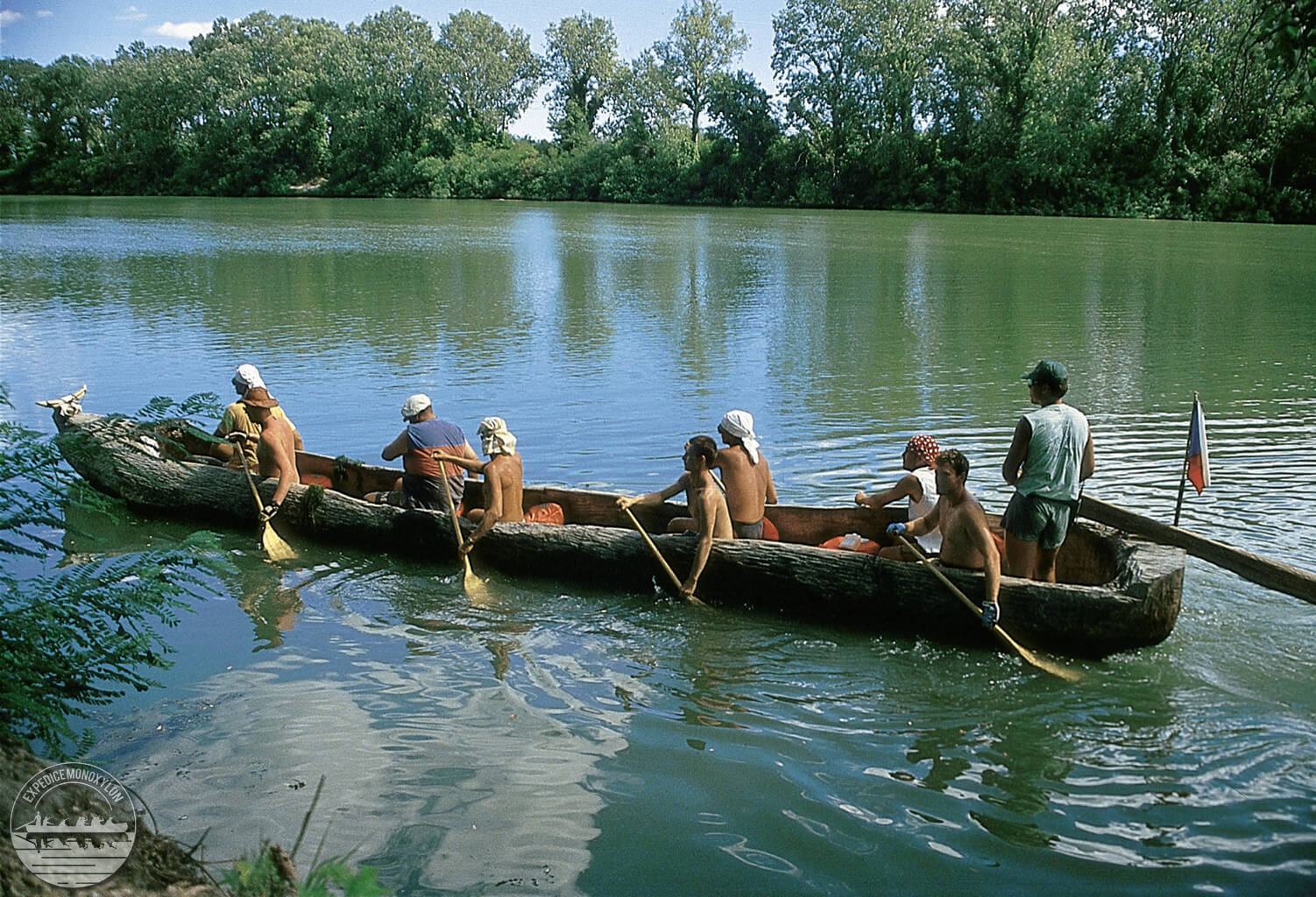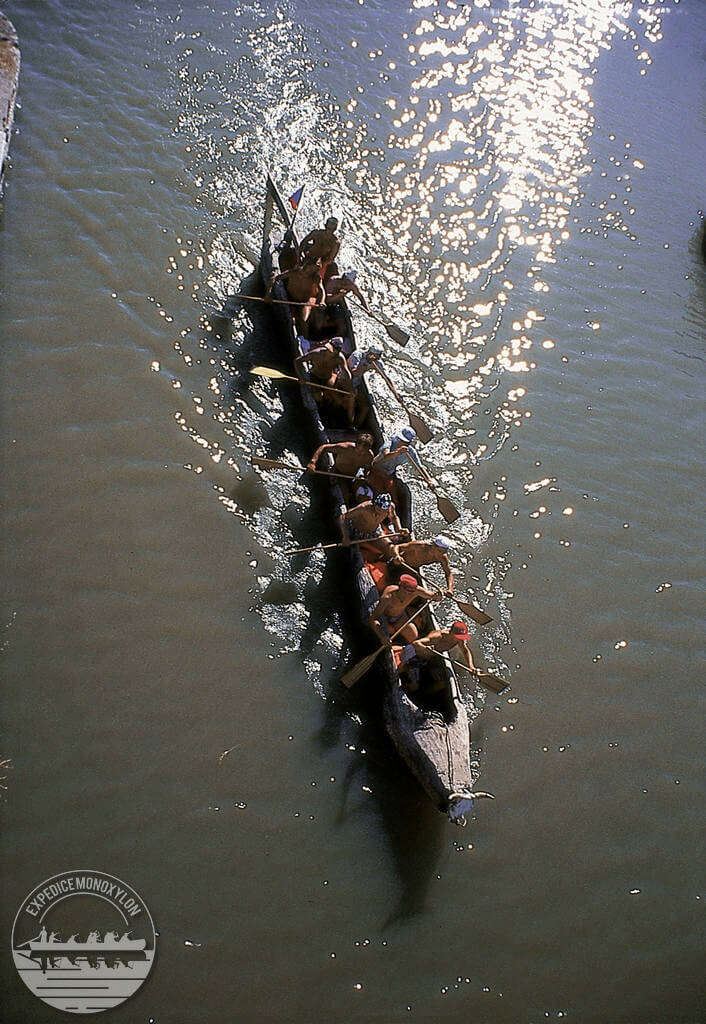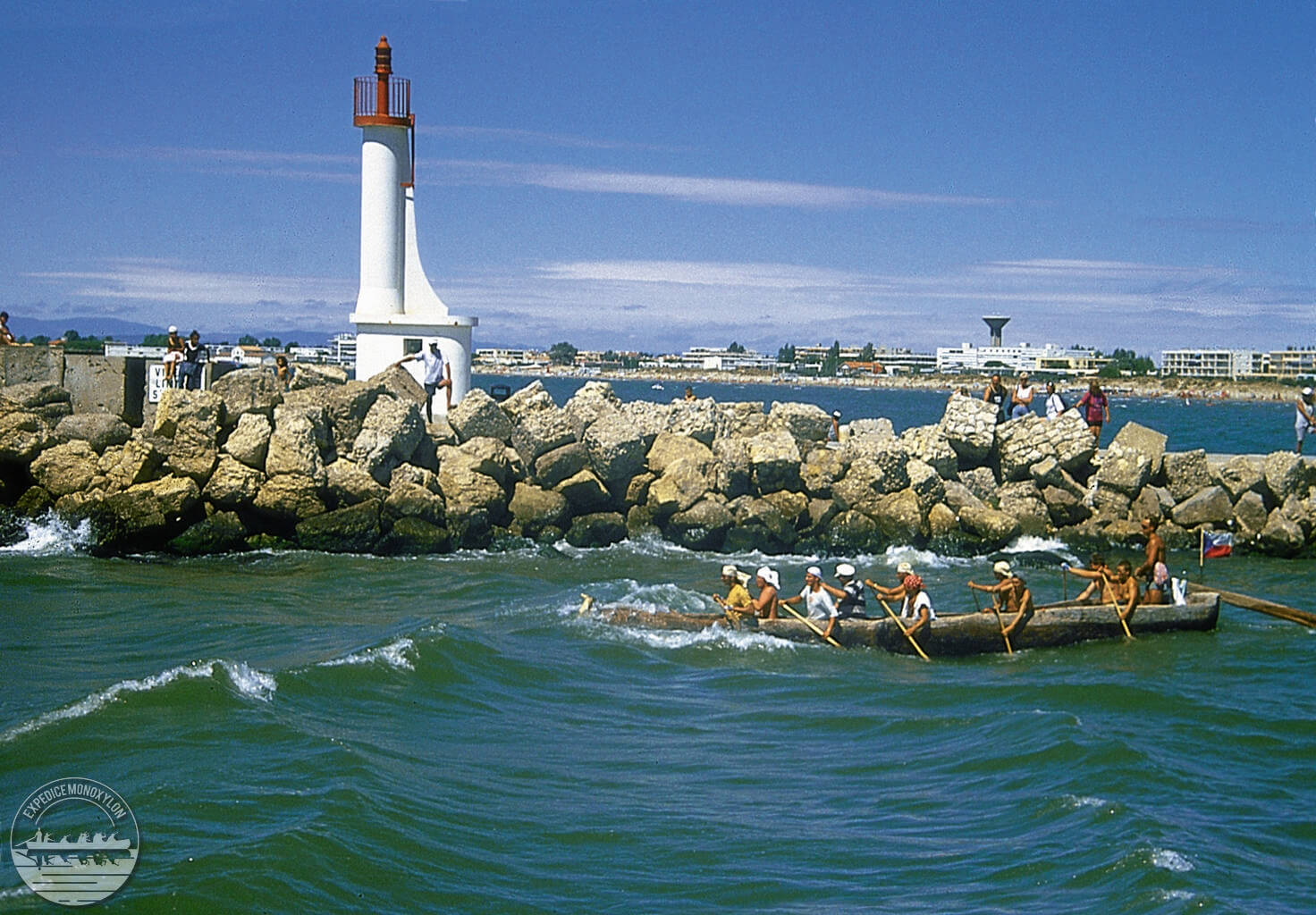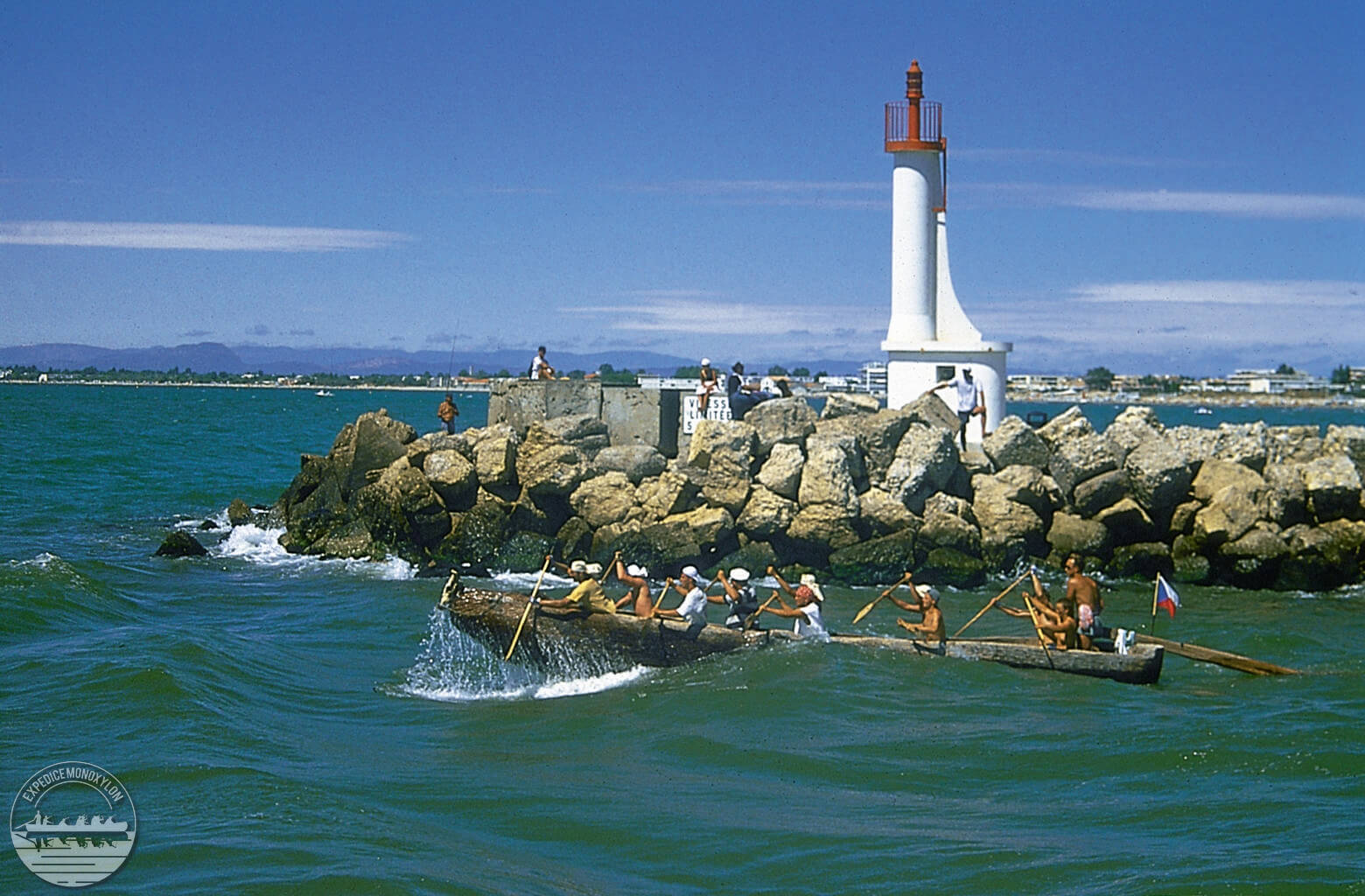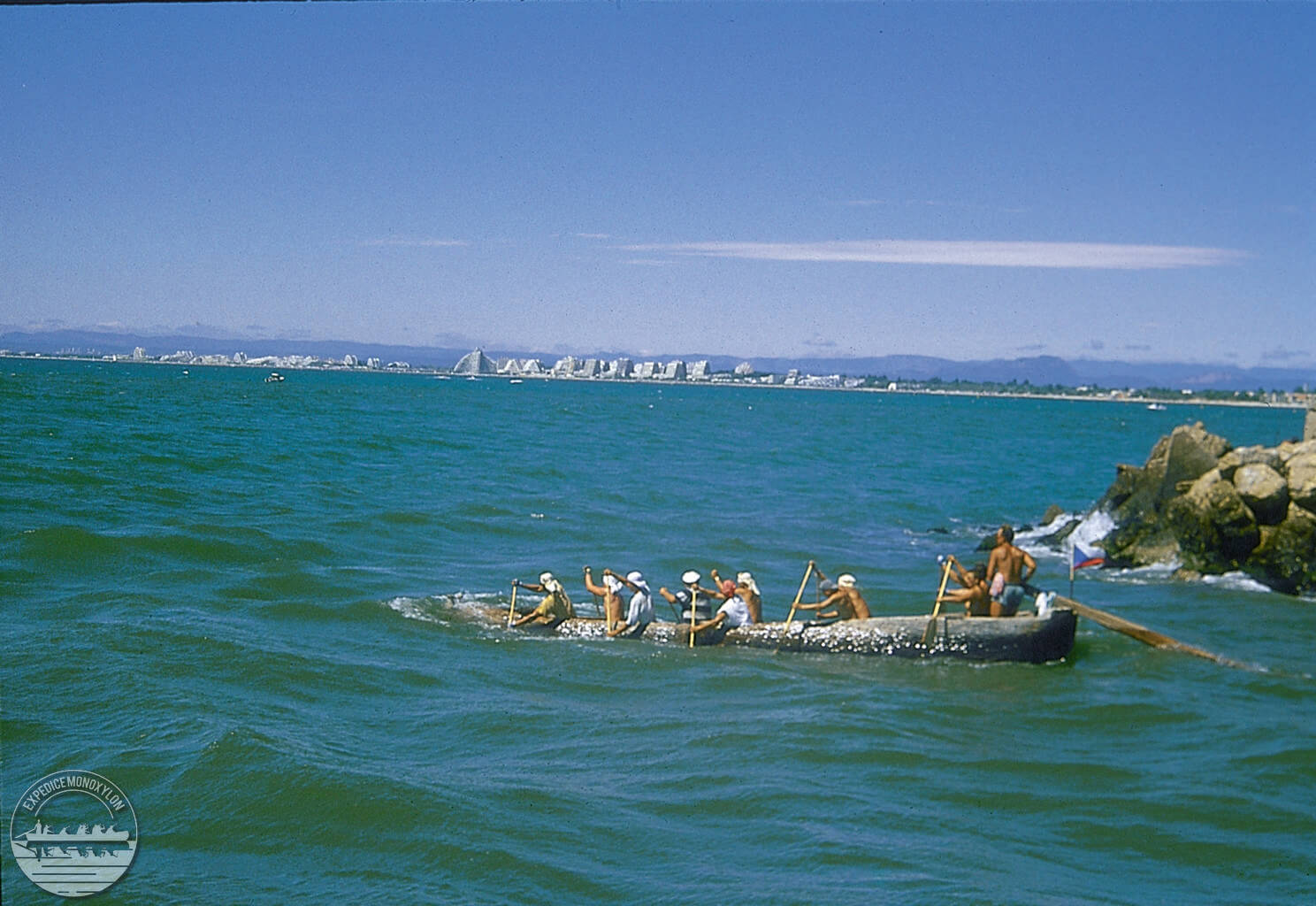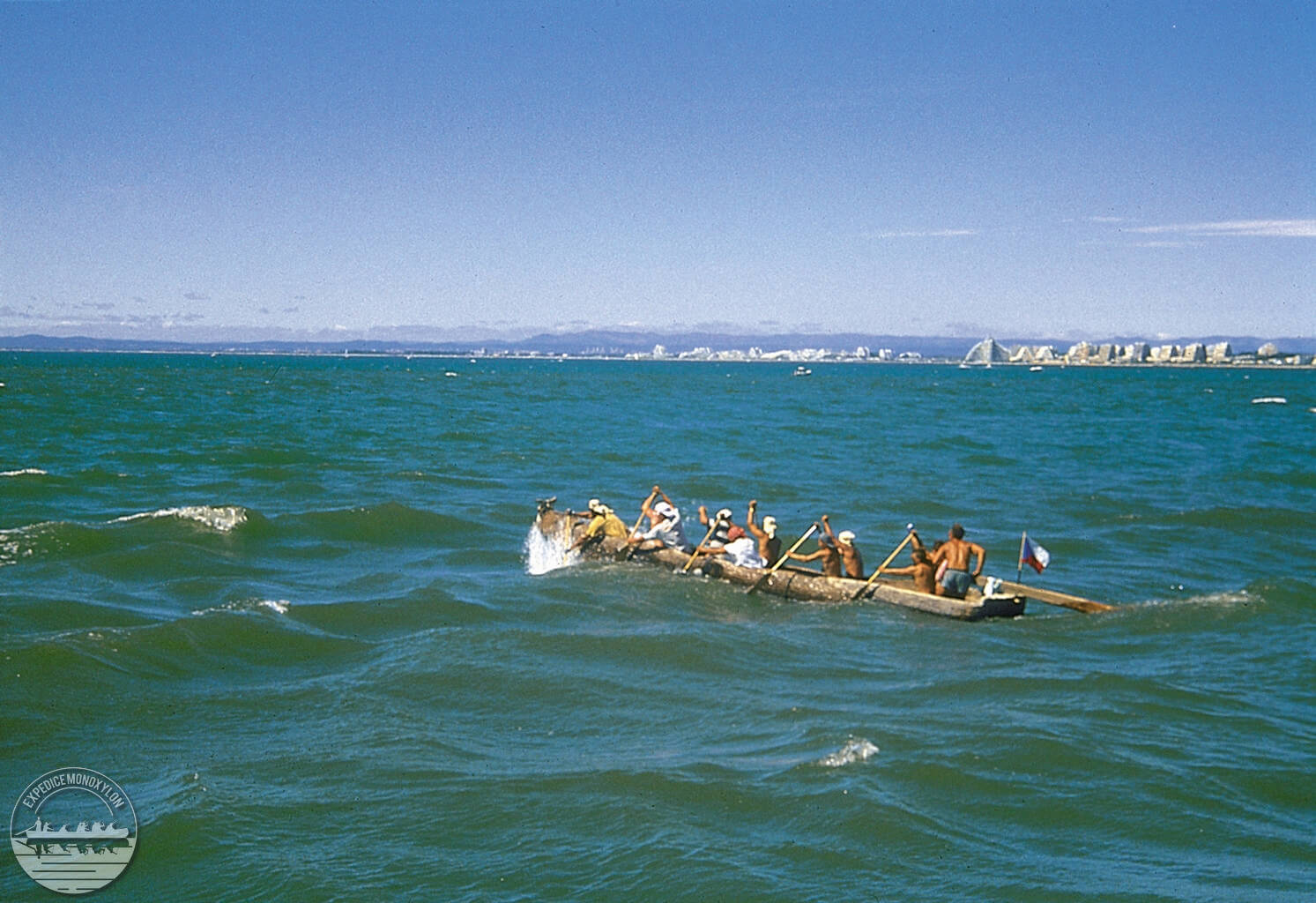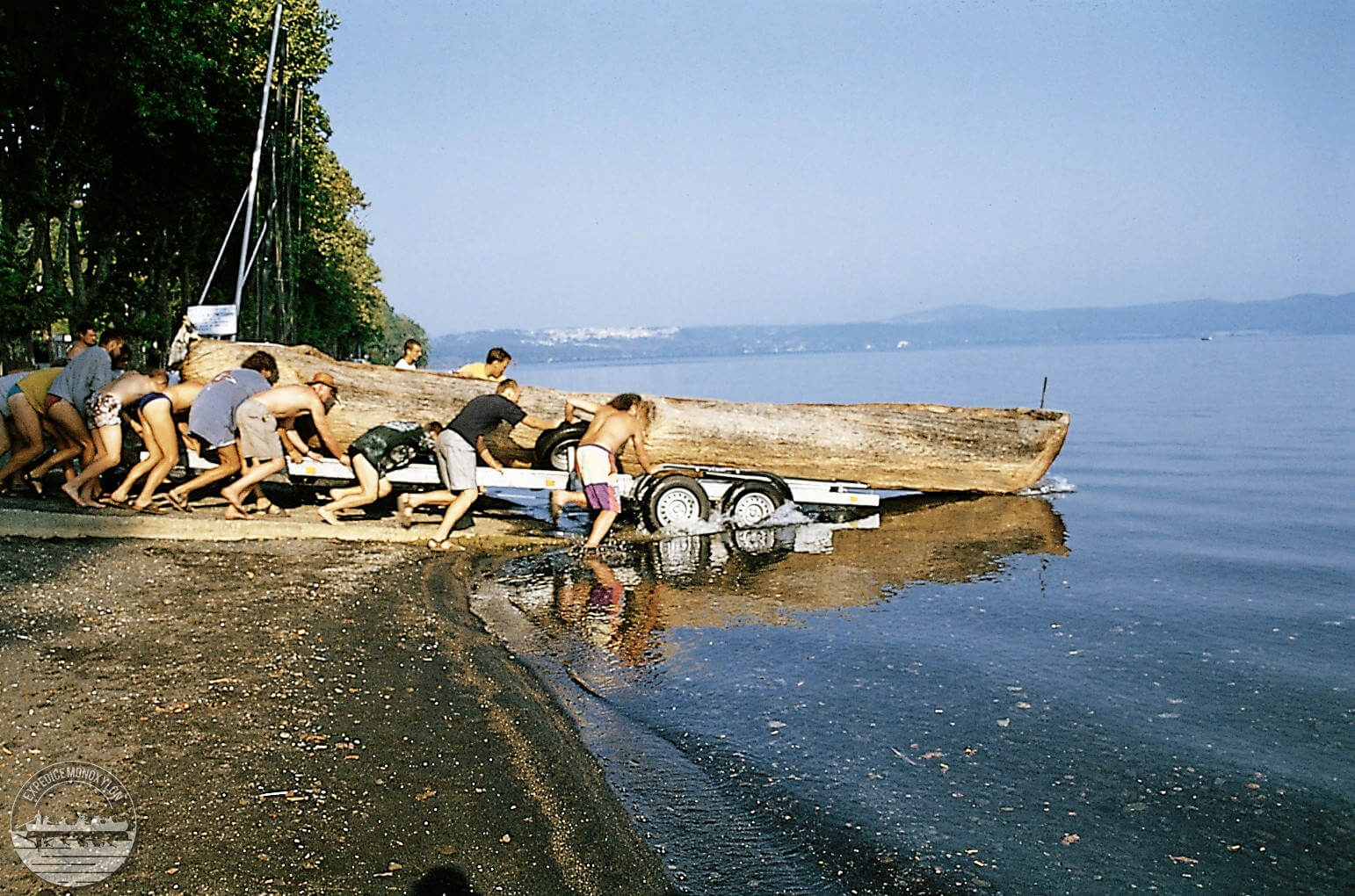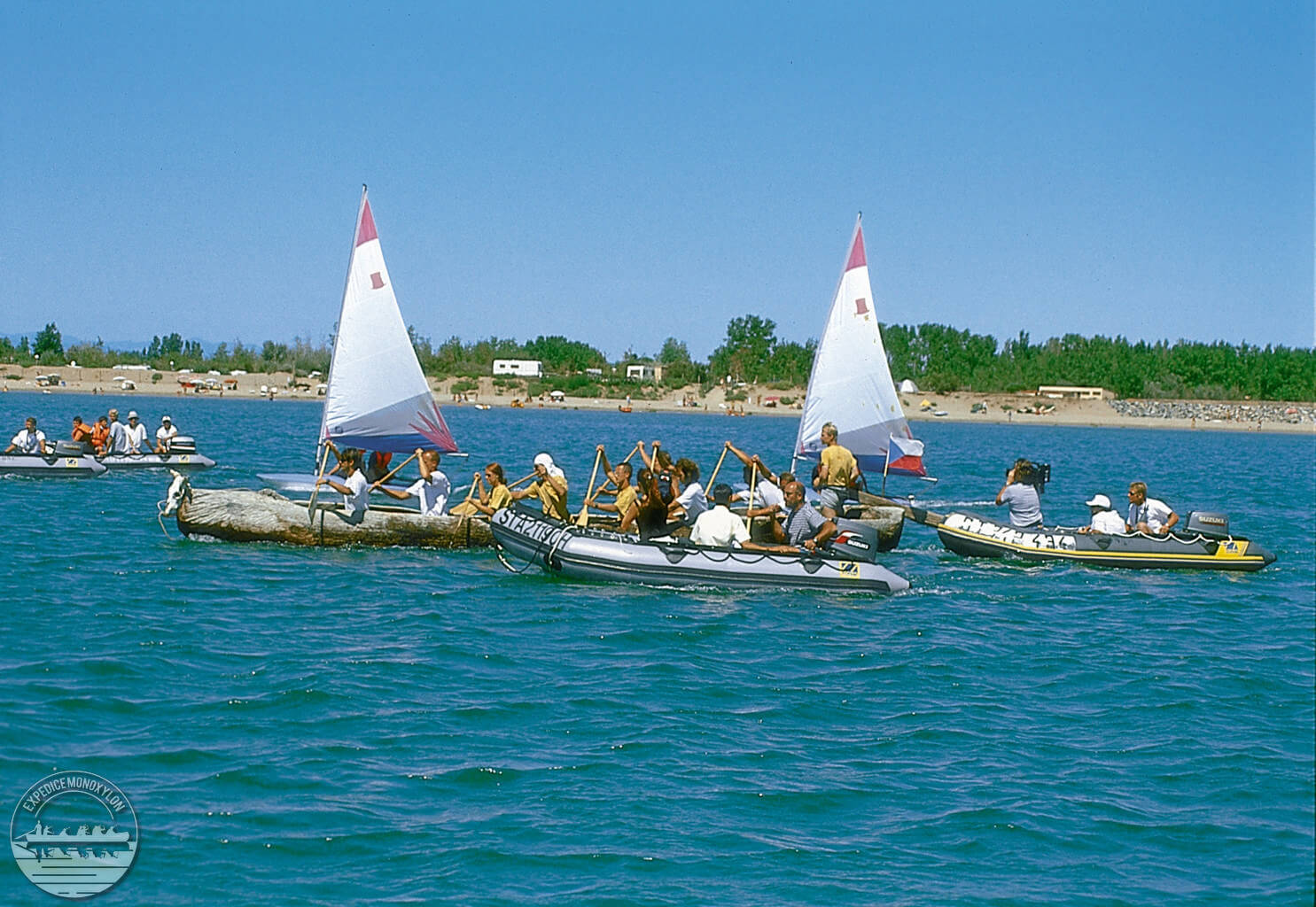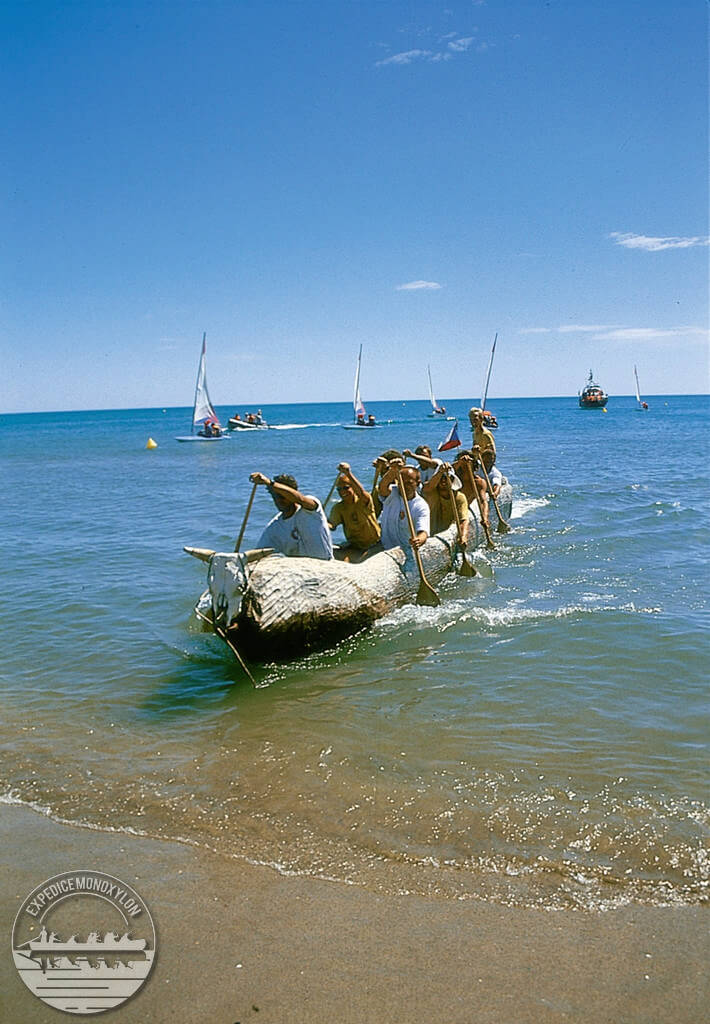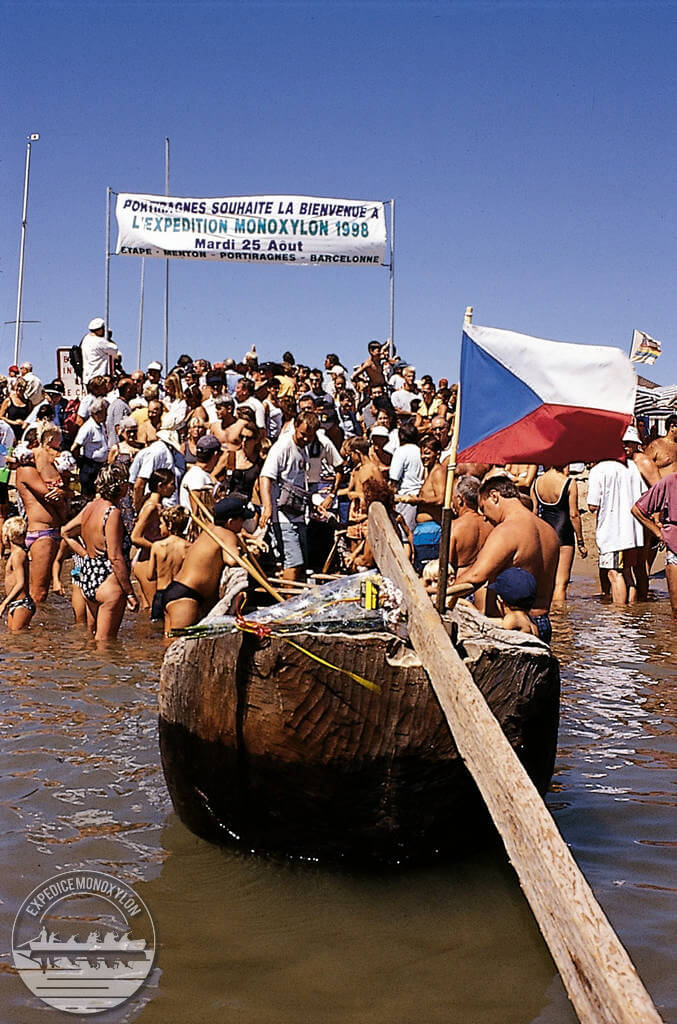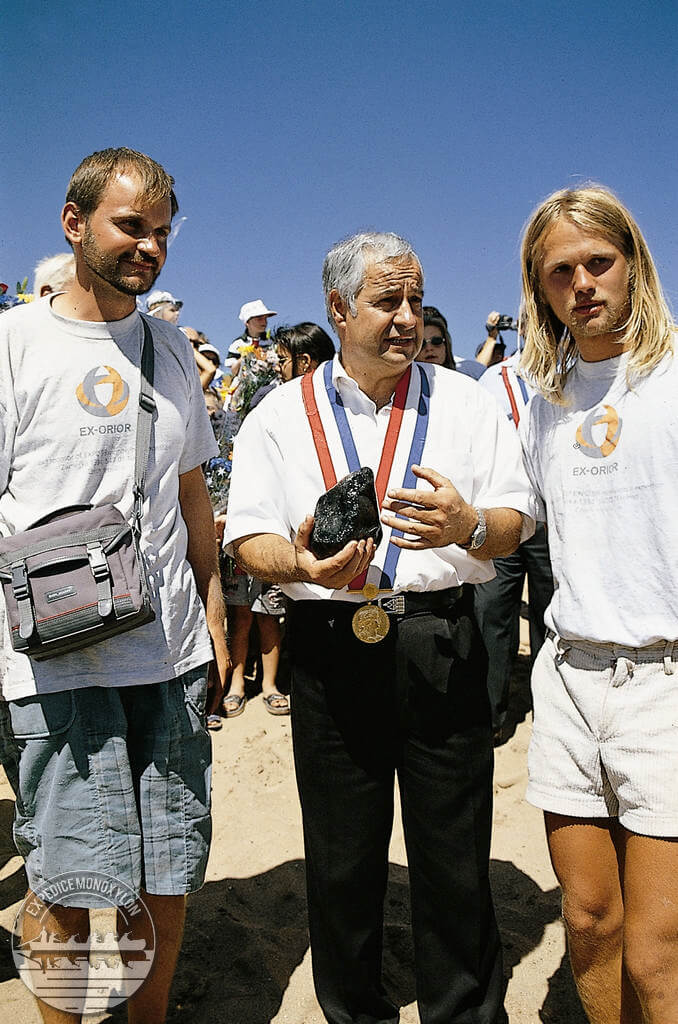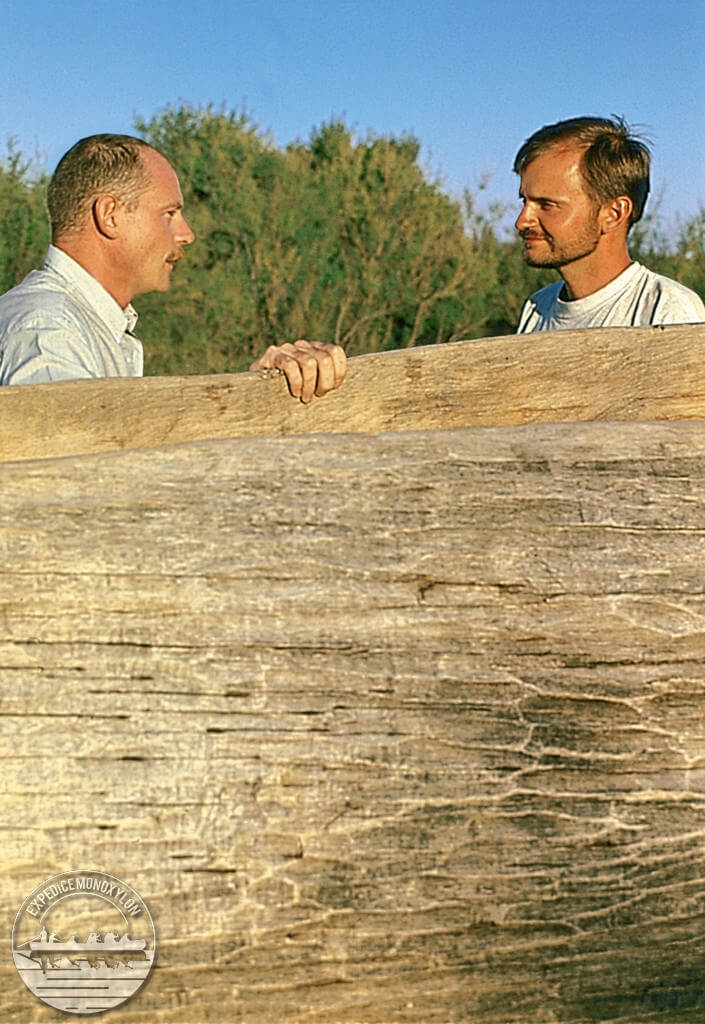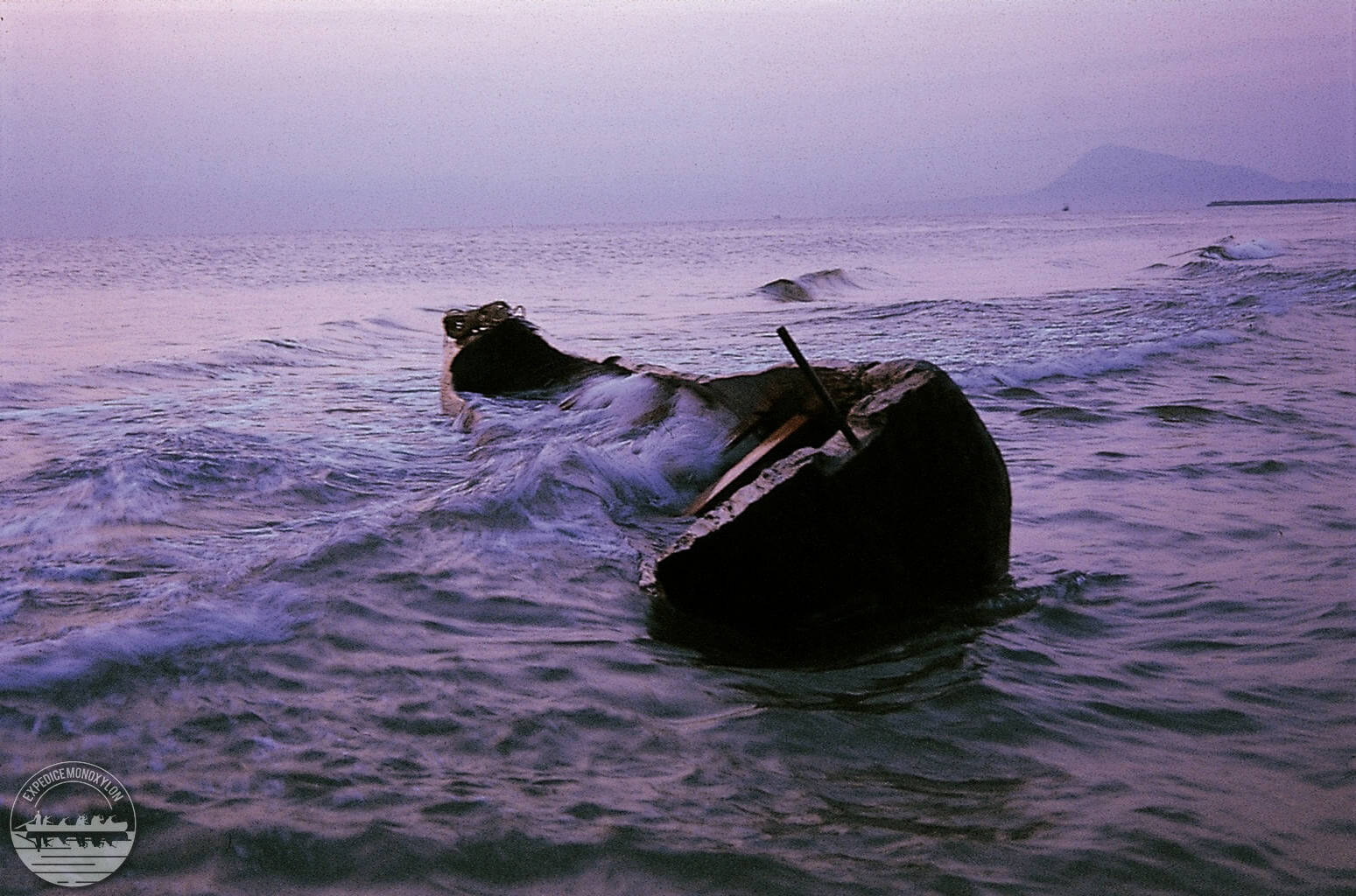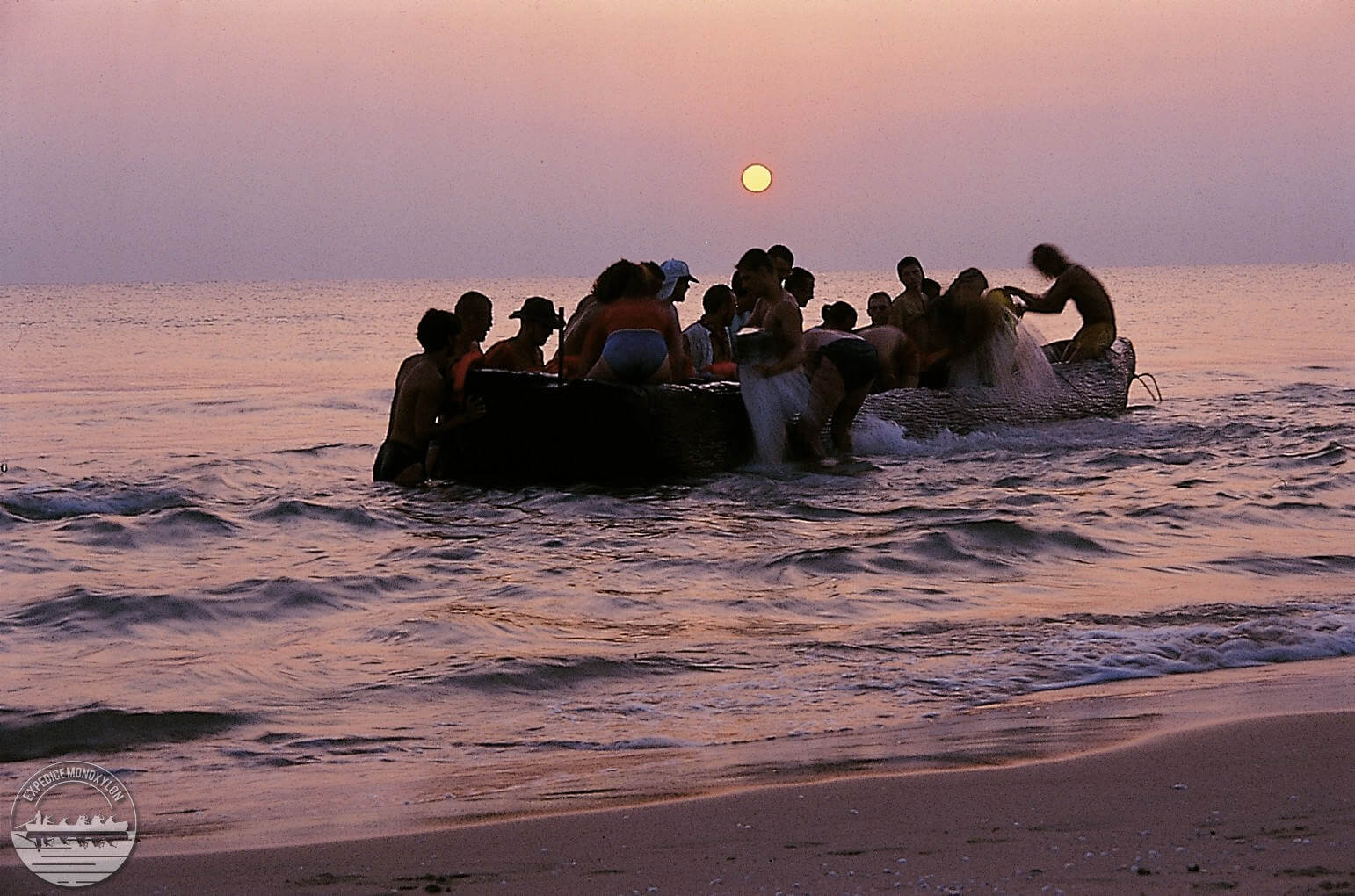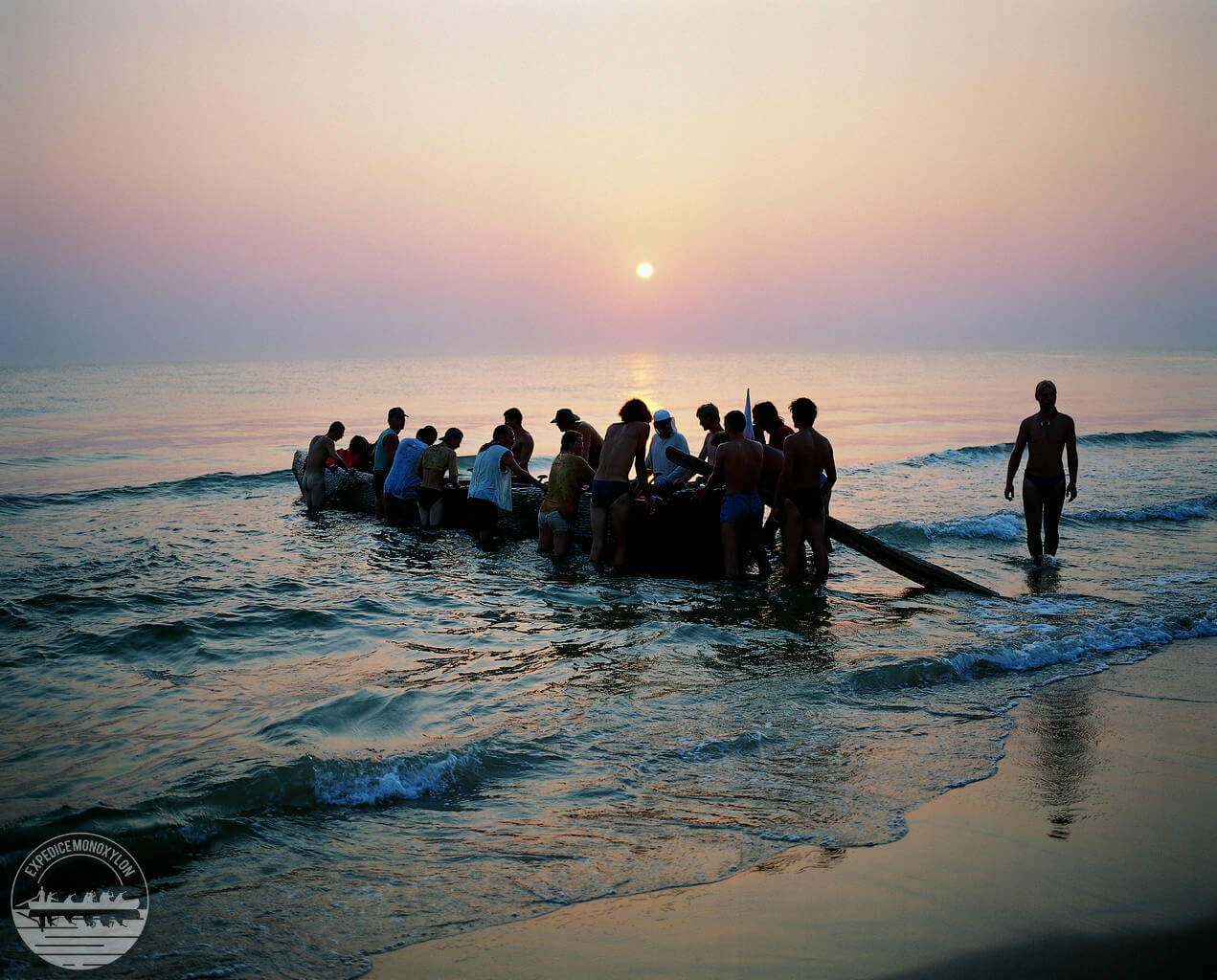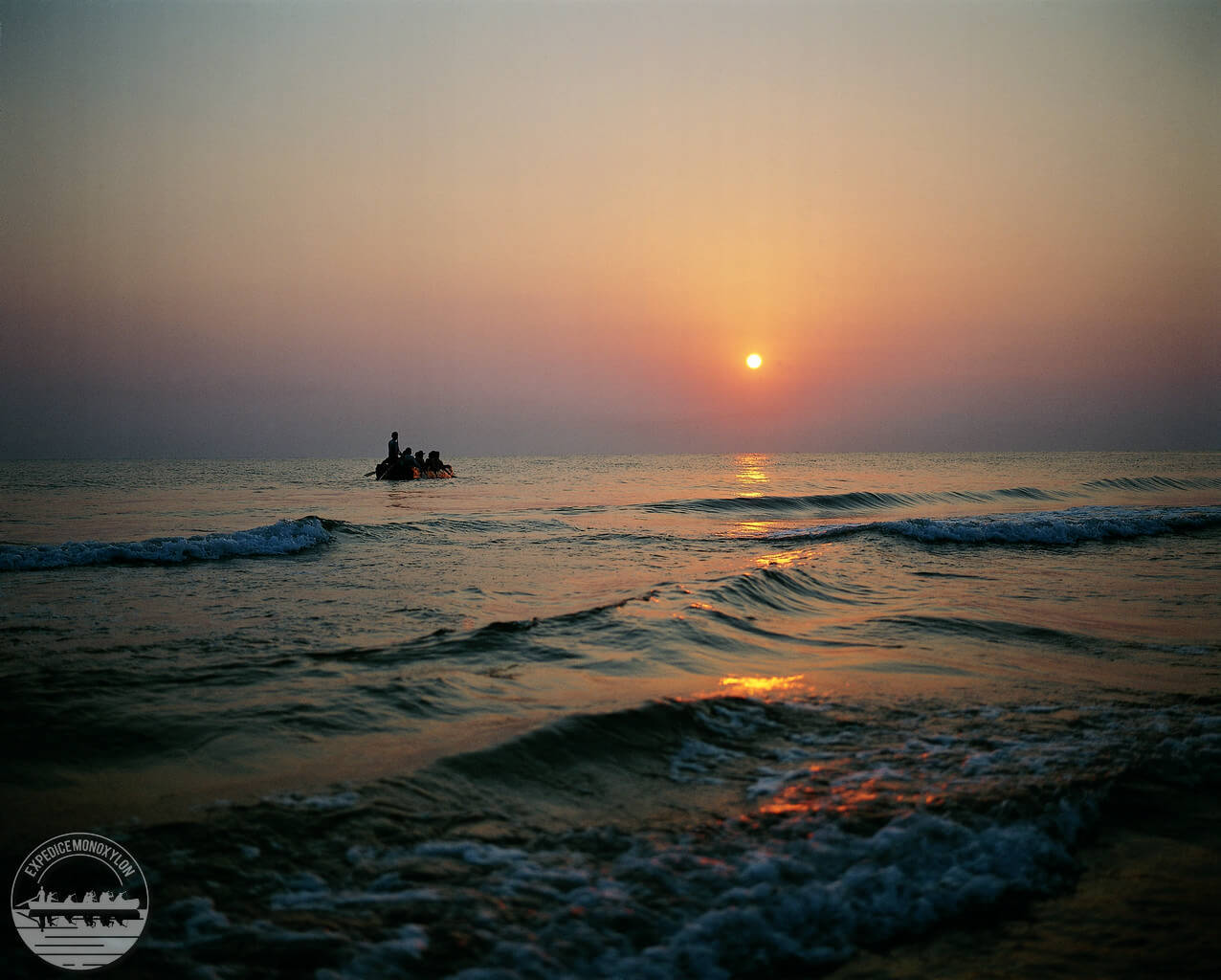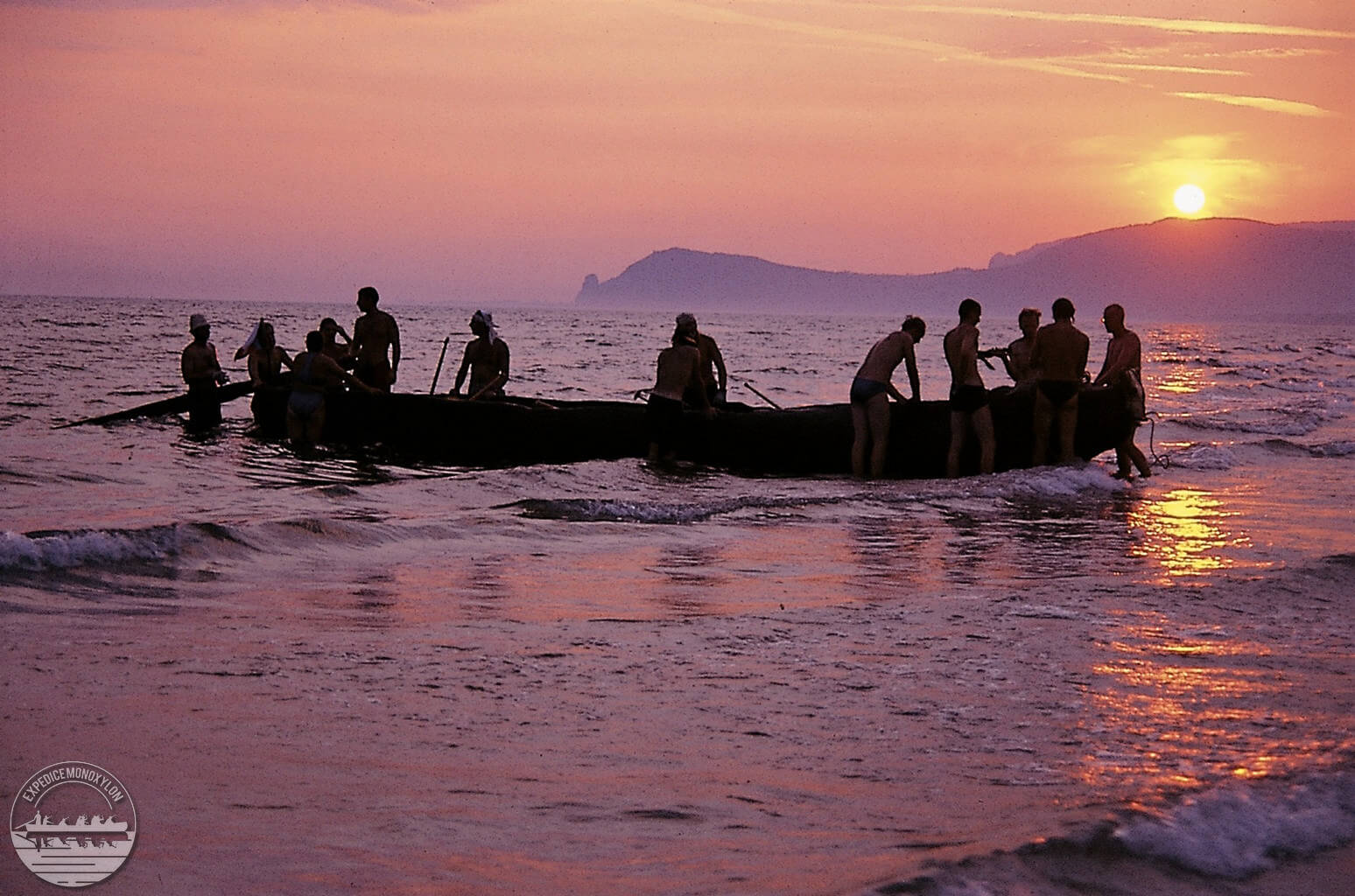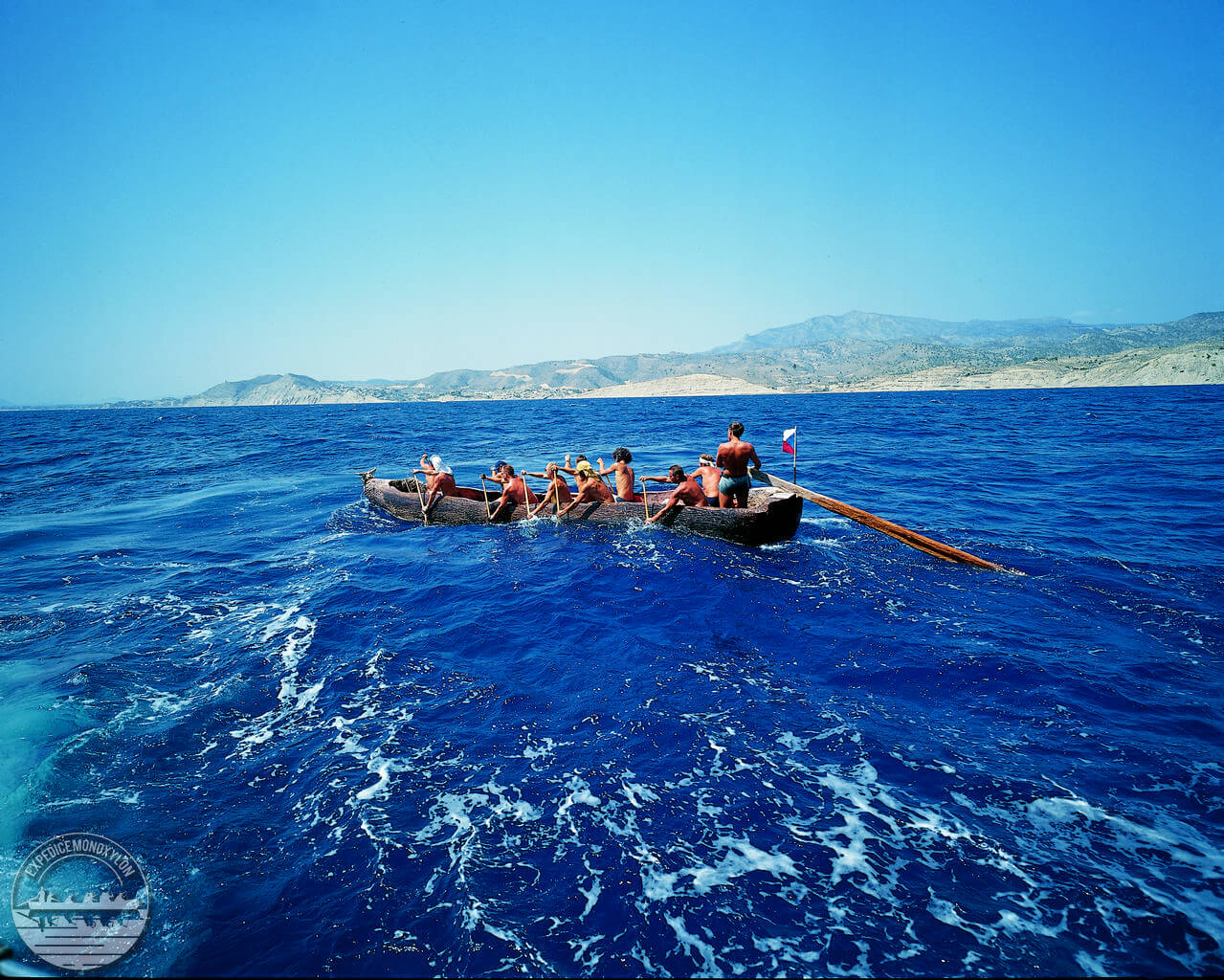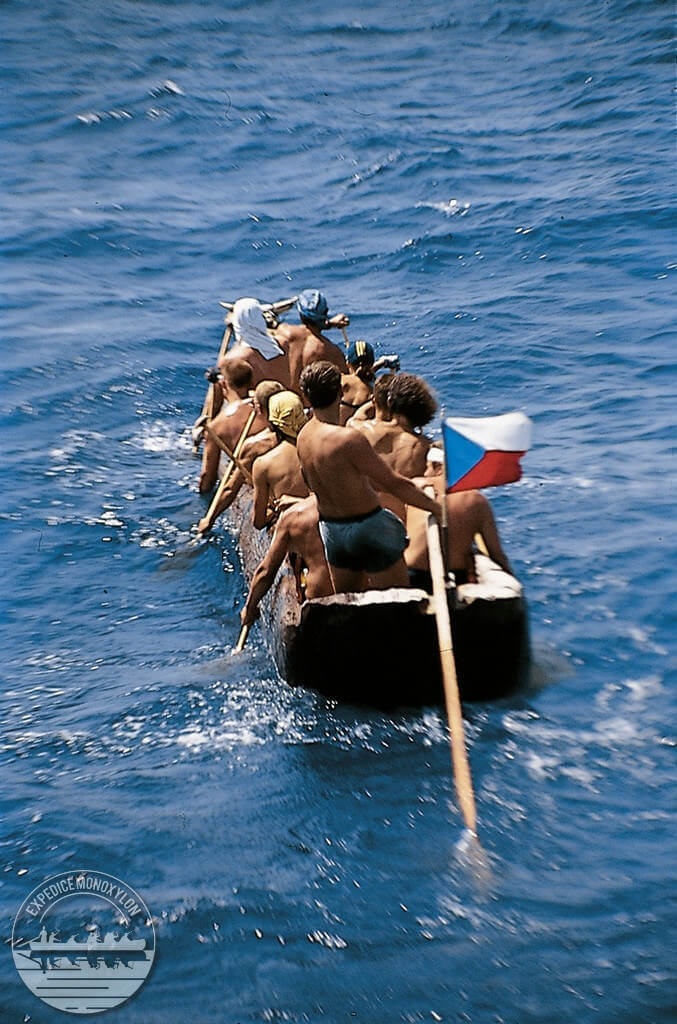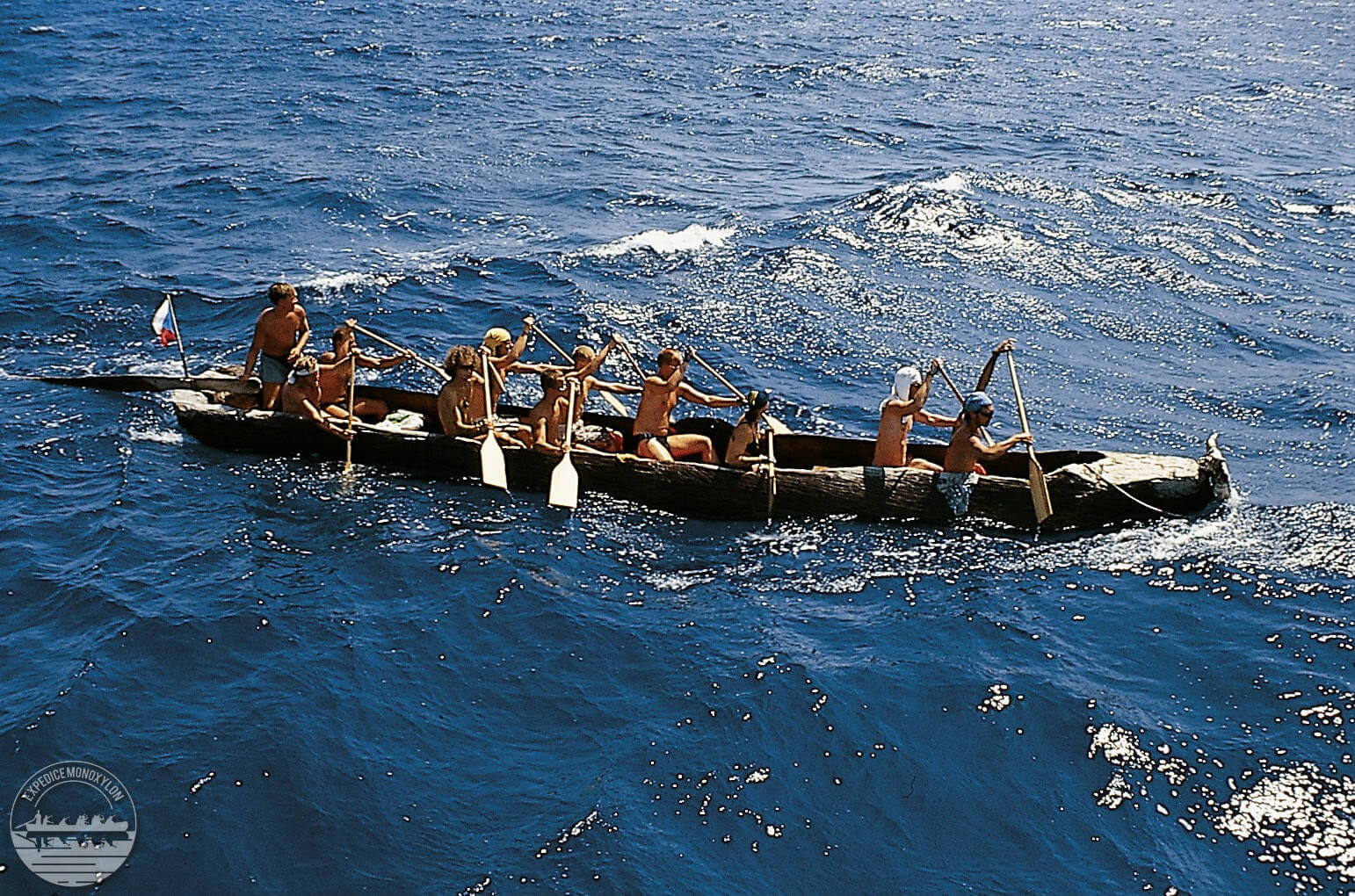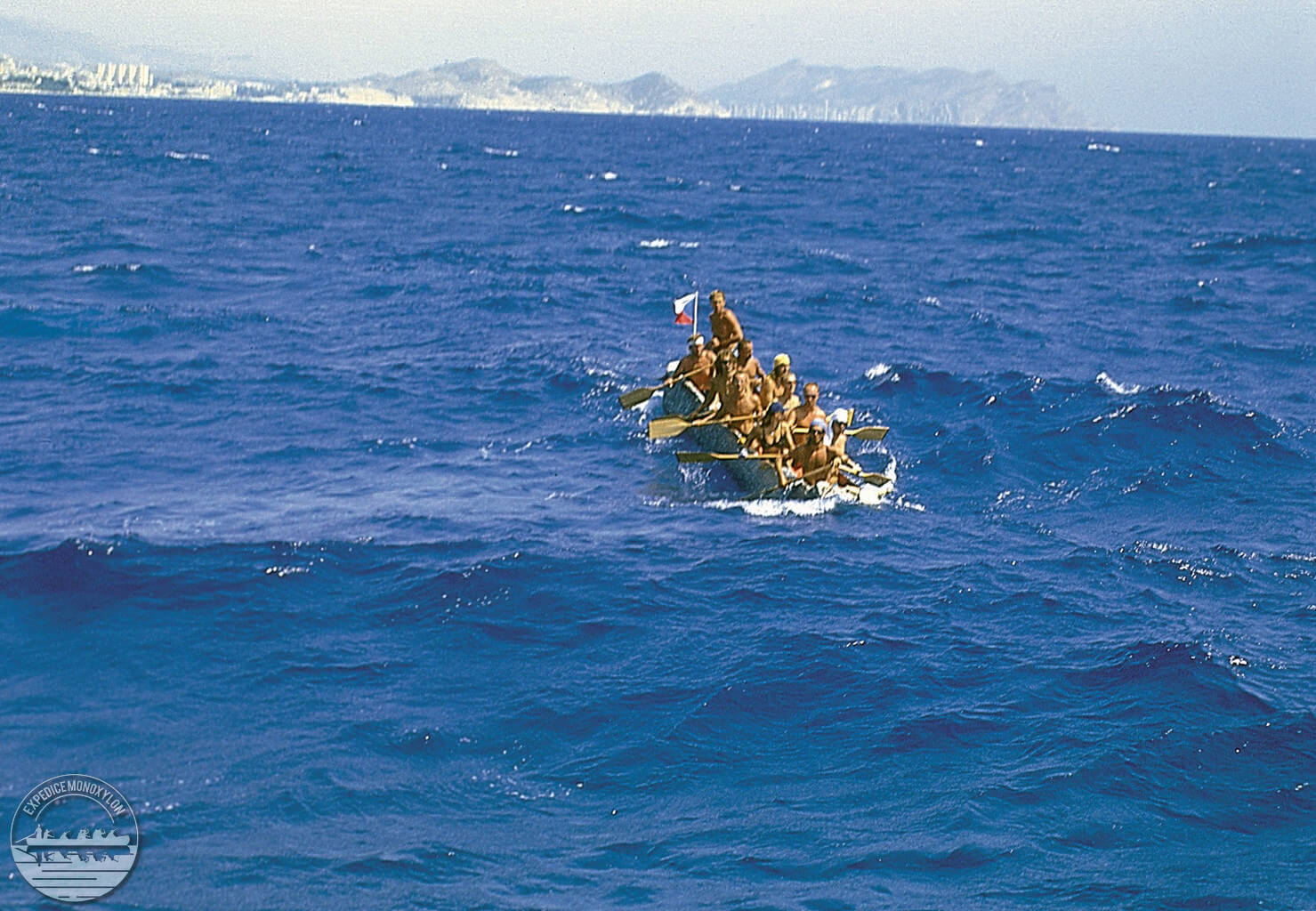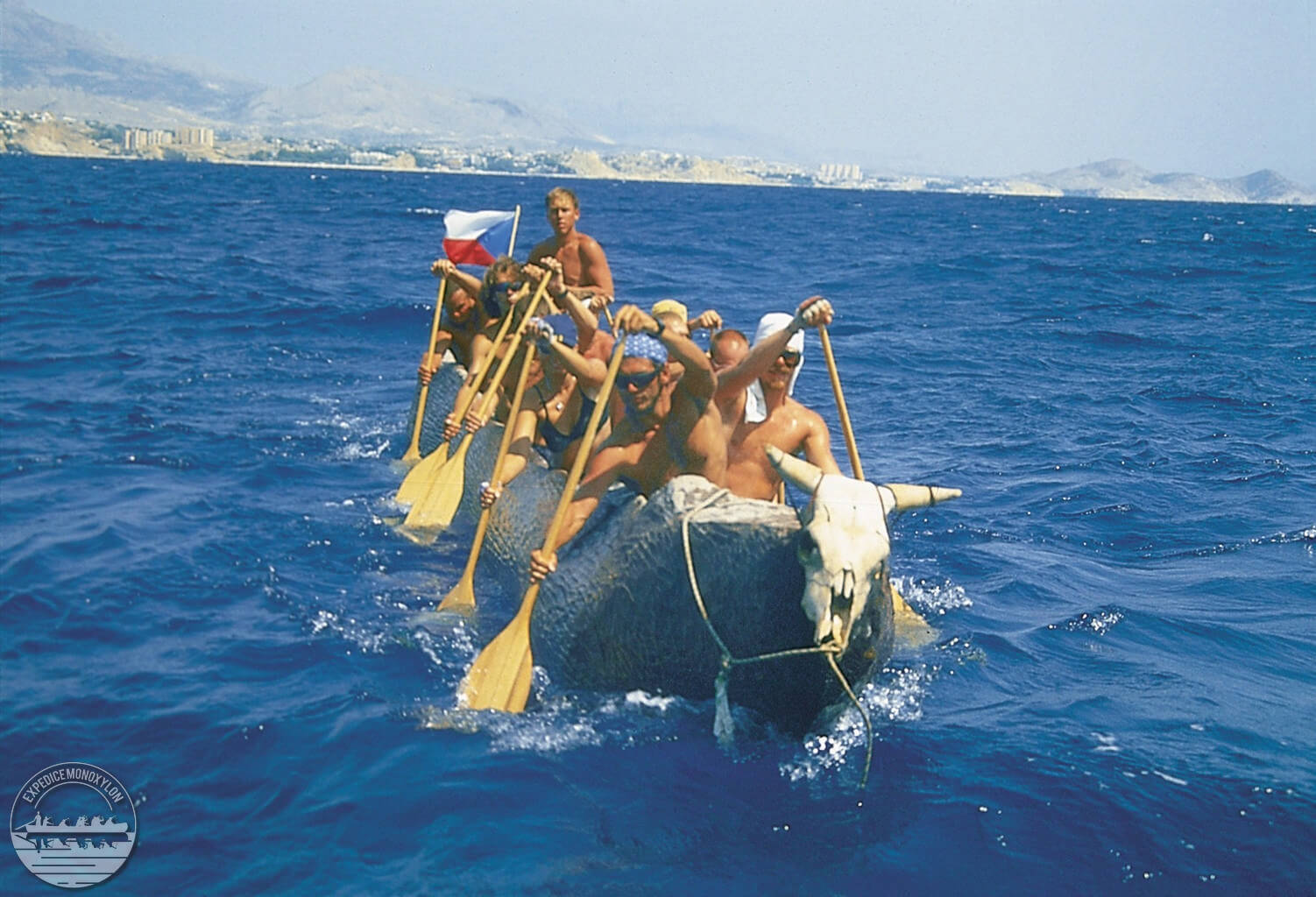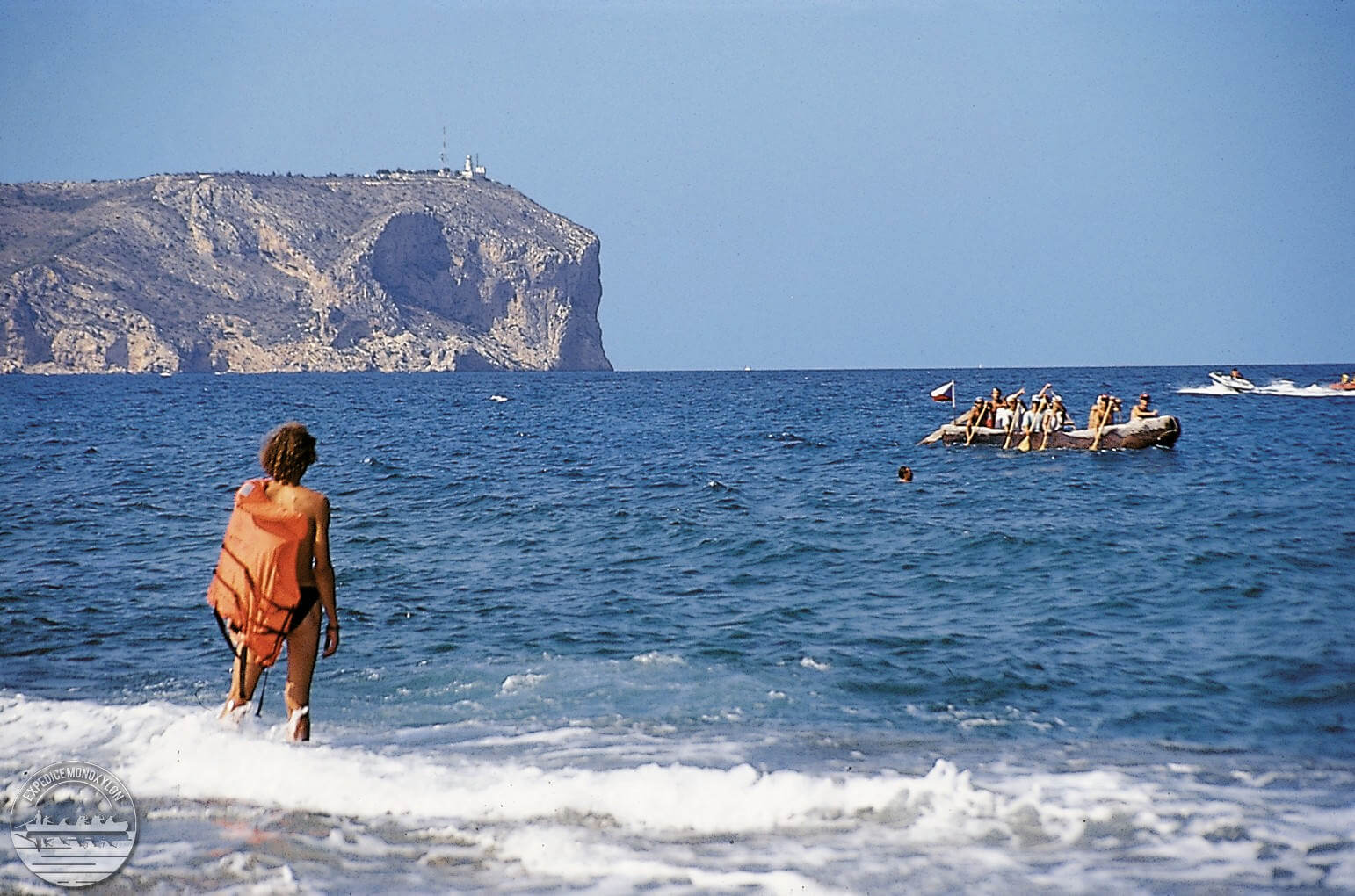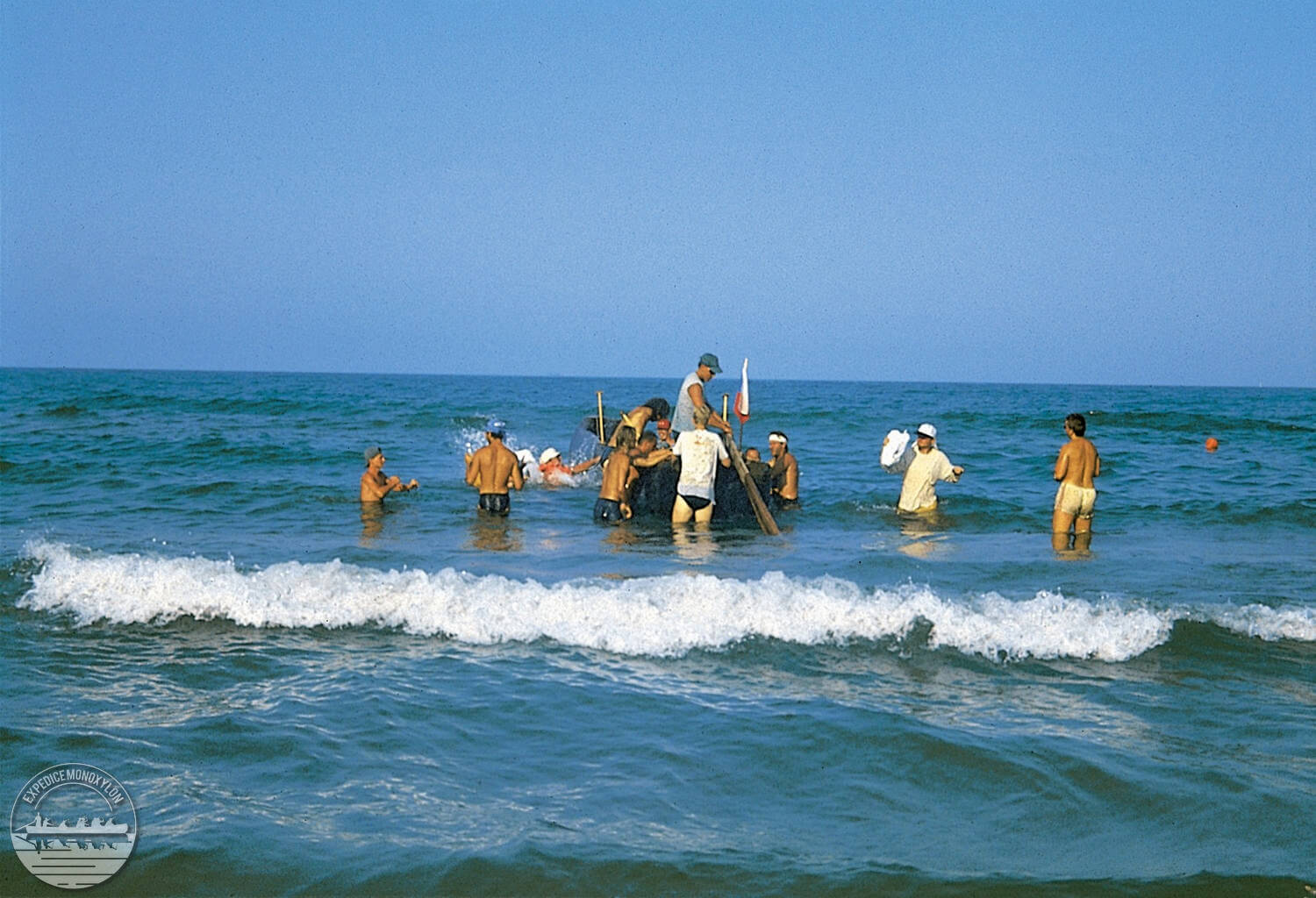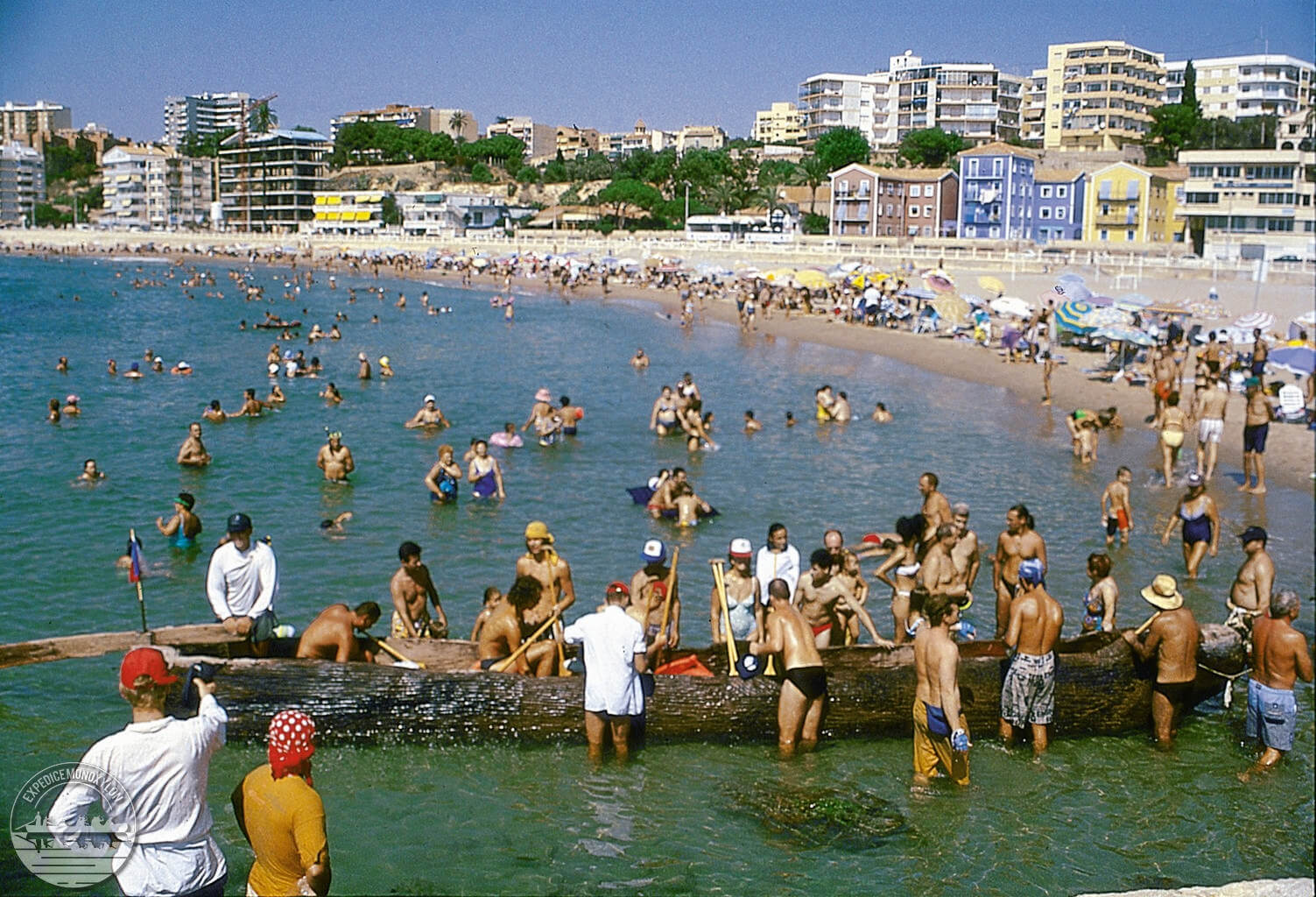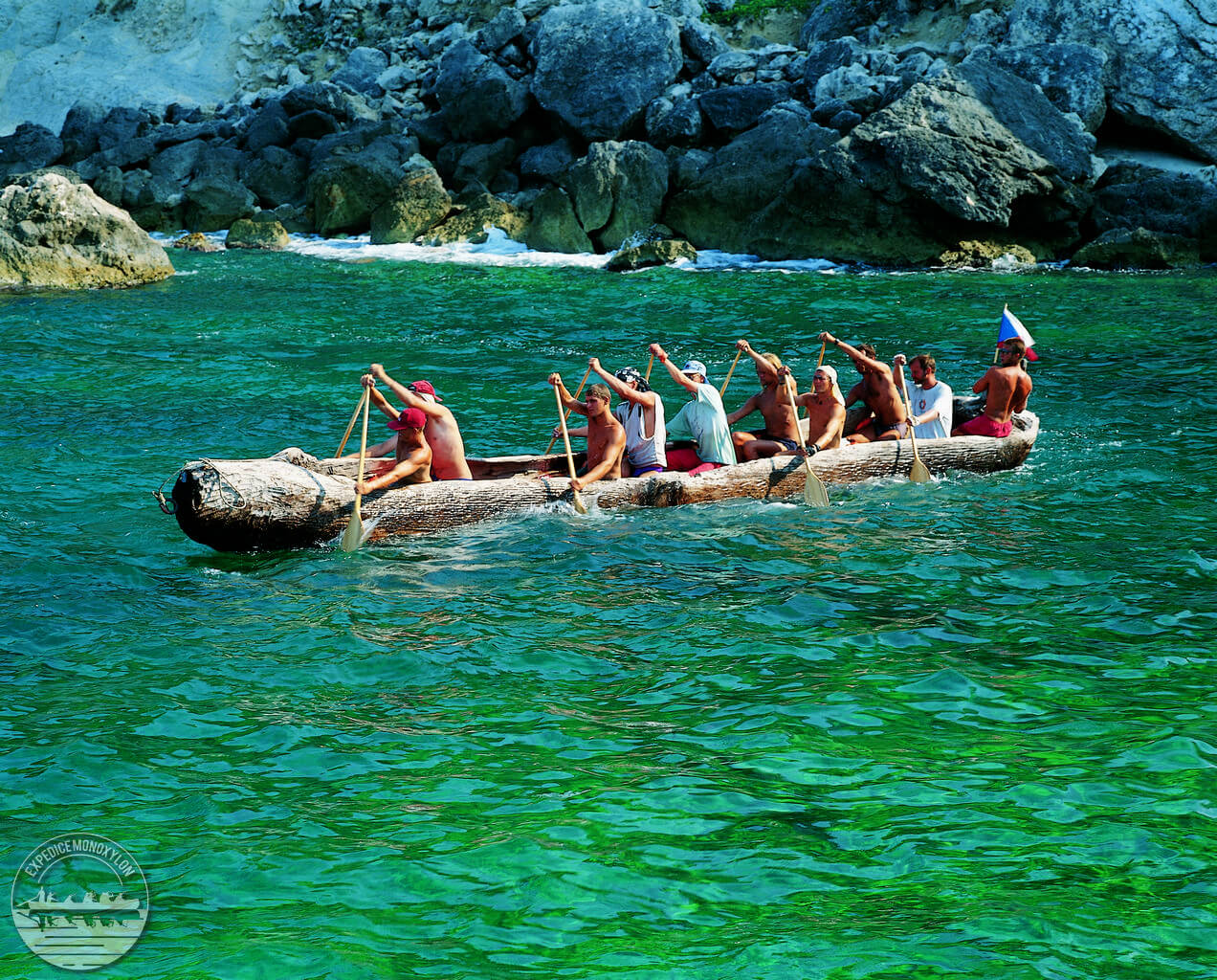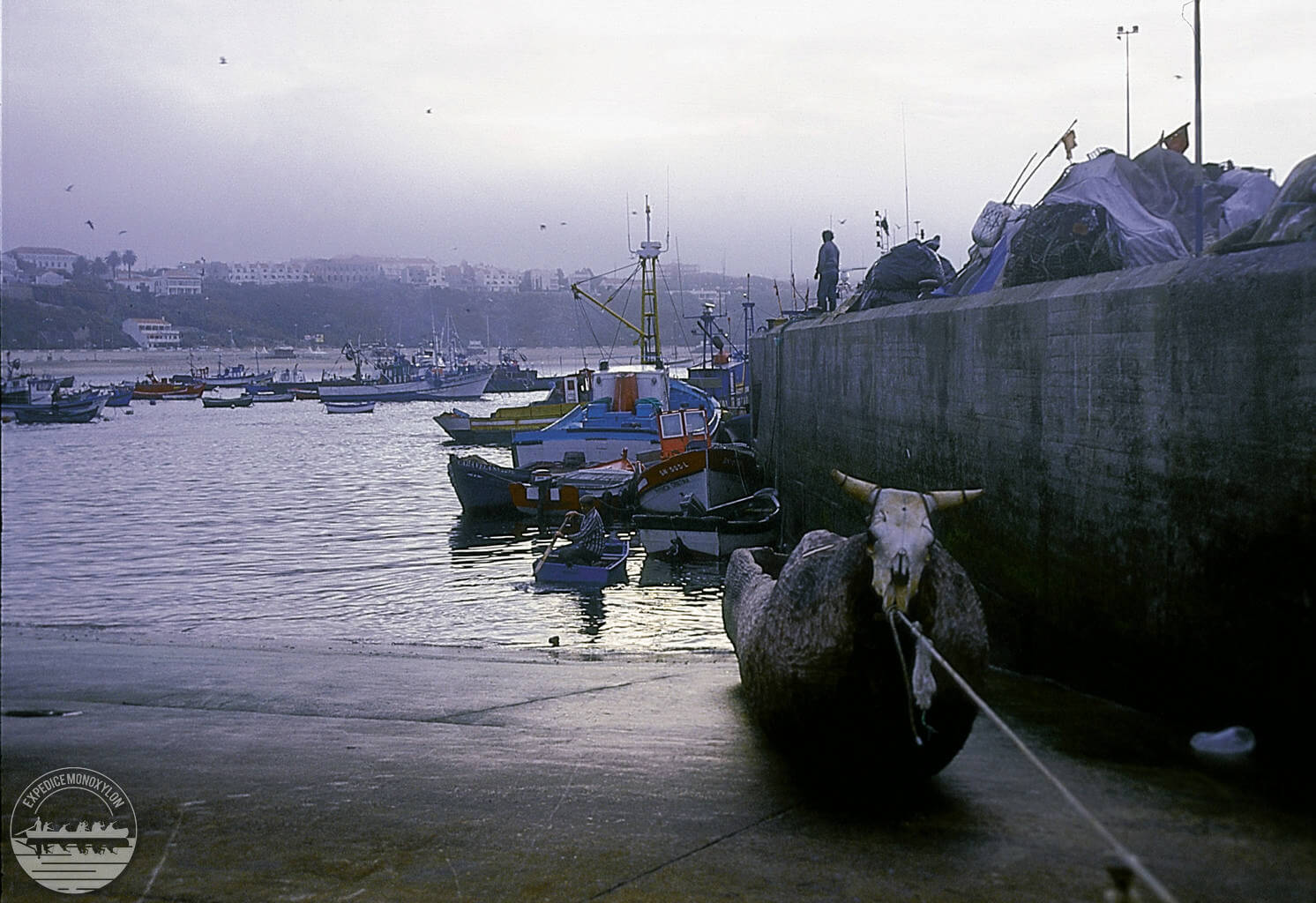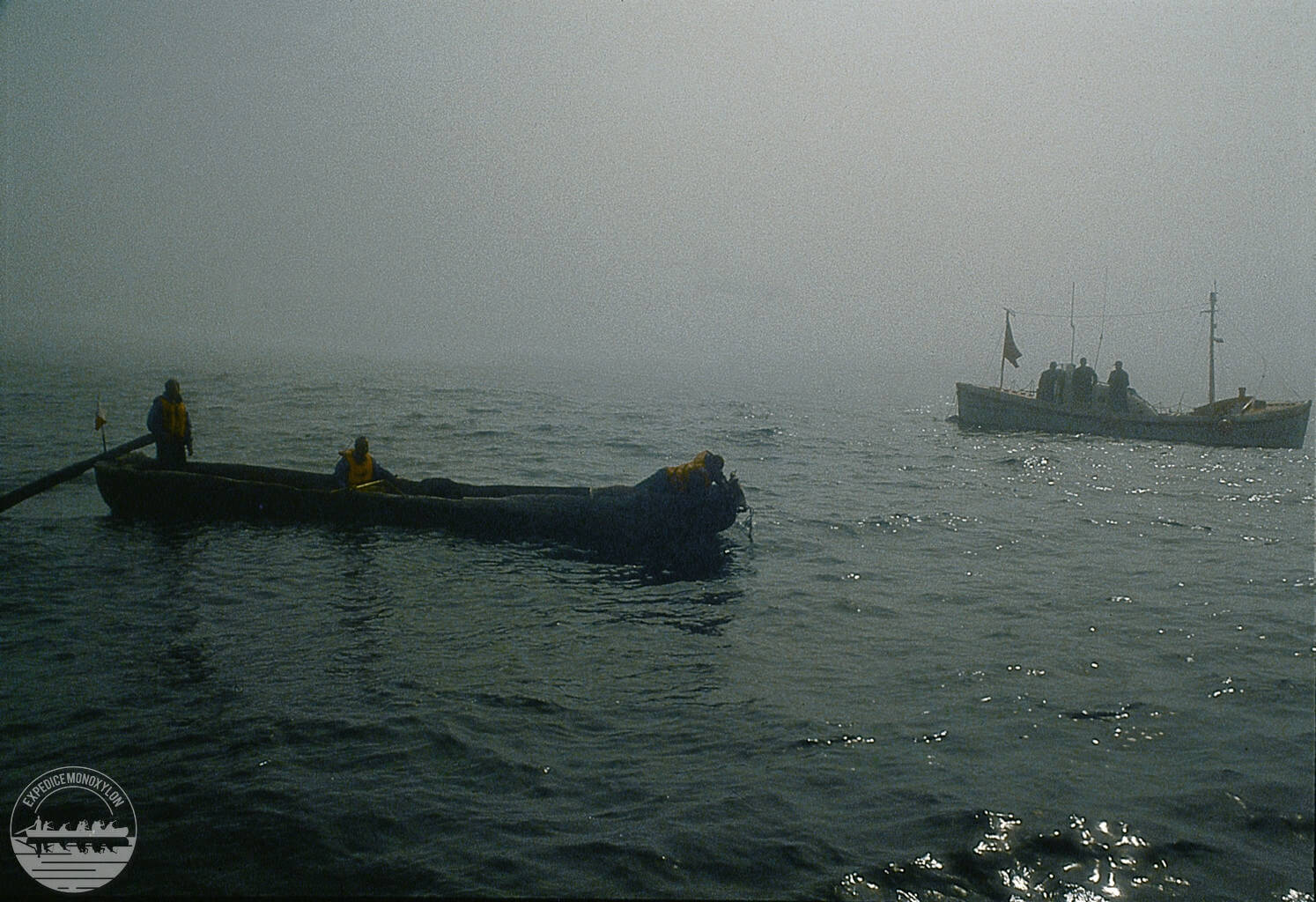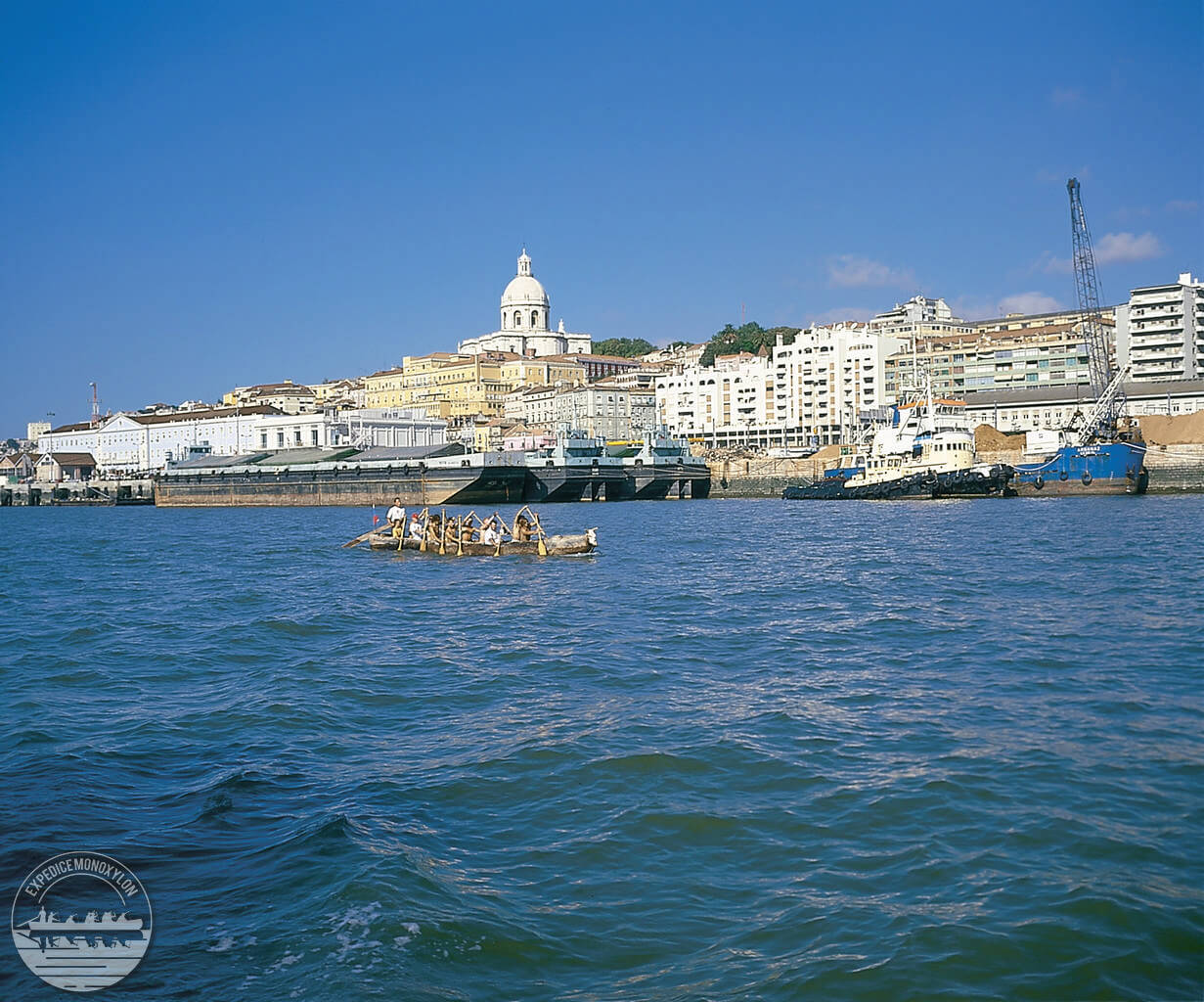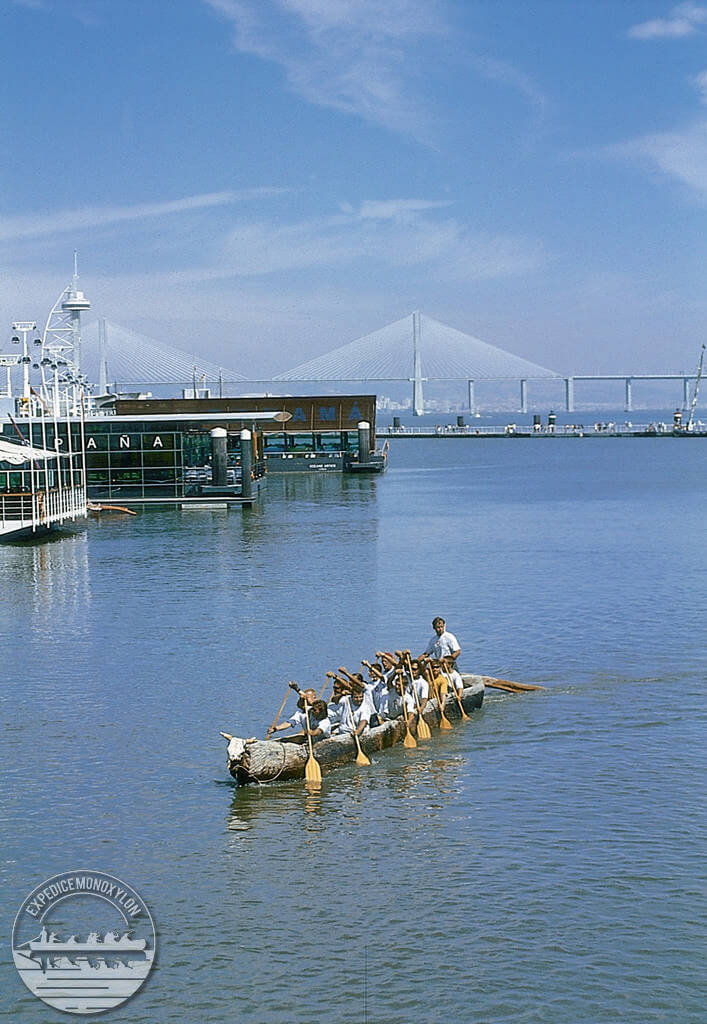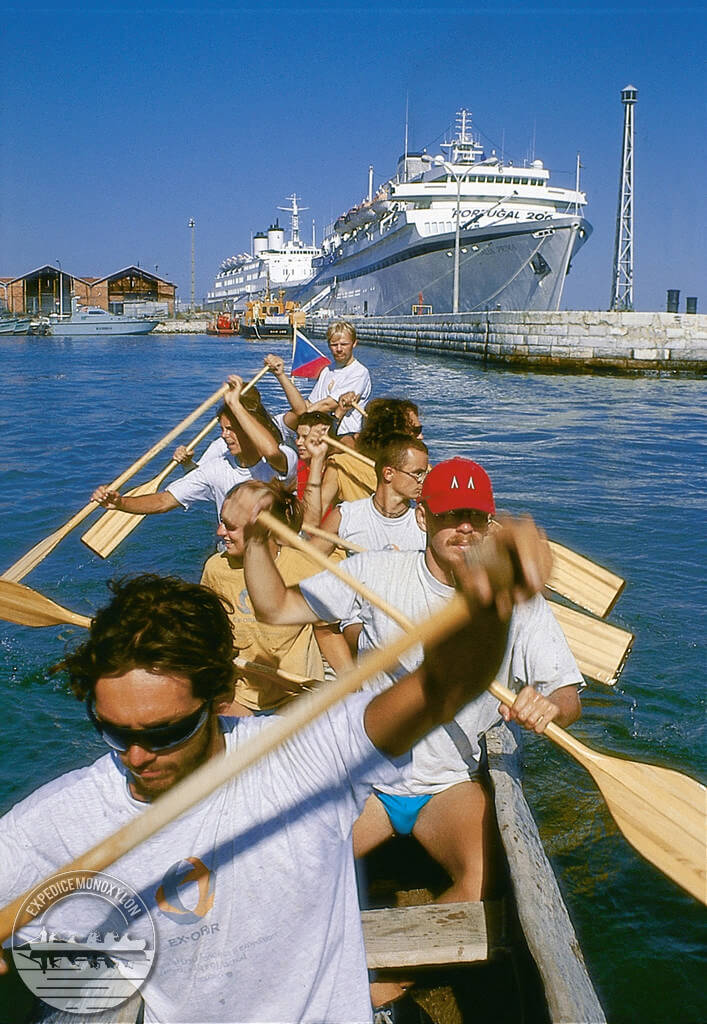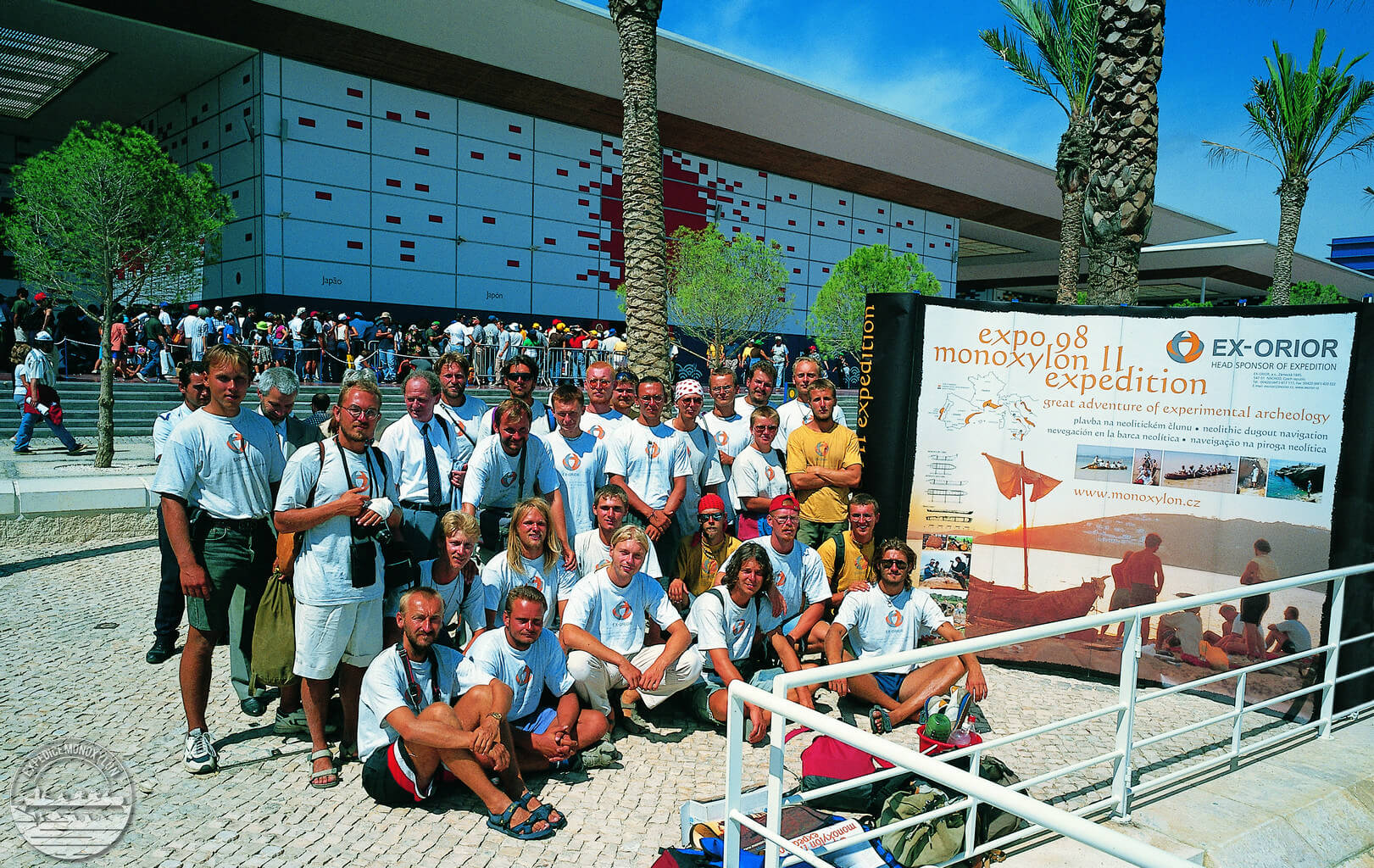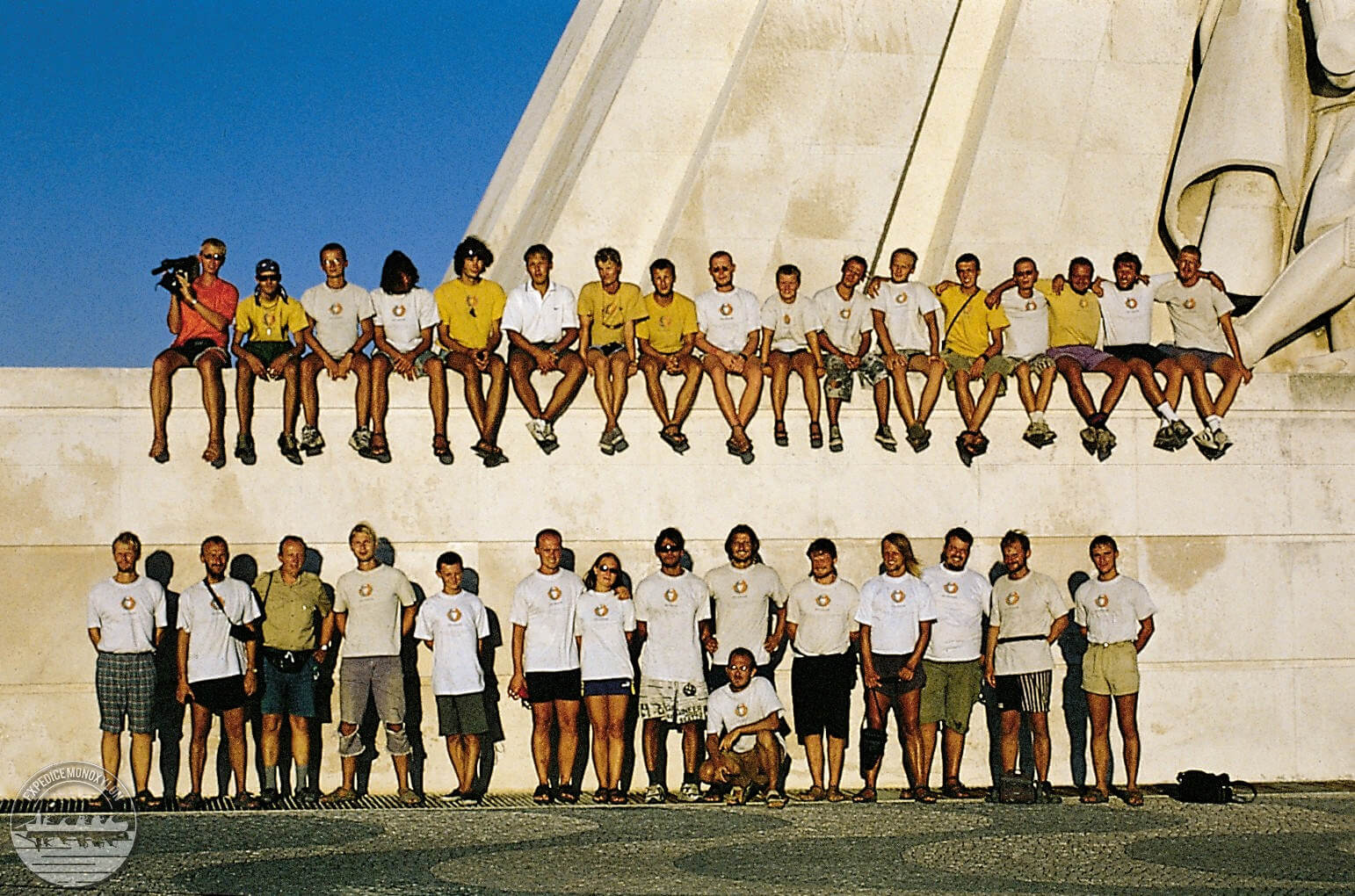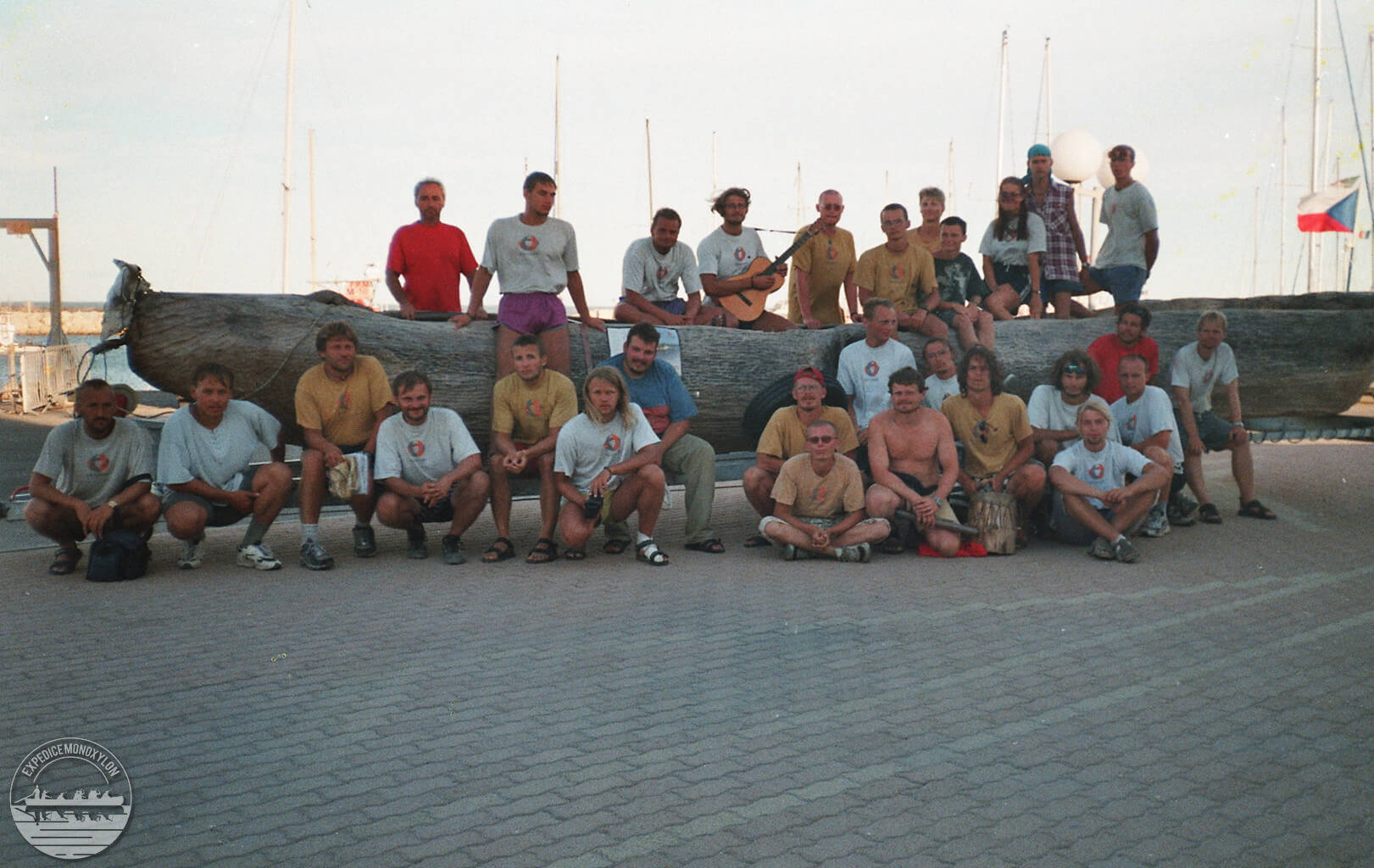The Monoxylon II expedition
The Monoxylon II expedition took place at the turn of August and September 1998.
The main objective was to try out a practical monoxylo cruise in the Mediterranean Sea along the coasts of Italy, France, Spain and Portugal in the areas where the Cardium – impresso culture was evidently settled in the Early Neolithic (Early Stone Age).
Furthermore, we wanted to experimentally test the possibilities of transporting obsidian from the Aeolian Islands to the western Mediterranean and naturally follow up on our previous expedition Monoxylon I.
Last but not least, it was a challenge for us to at least symbolically represent our country at the international exhibition EXPO98 with the theme “Oceans, Heritage for the Future” in Lisbon, because the Czech Republic did not officially participate in this world event.
route
In particular, due to the limited time available for our expedition, it was not realistic to sail continuously along the entire Mediterranean coastline between Sicily, Italy and Lisbon, Portugal, which is approximately 3500 km long.
The route of the Monoxylon II expedition was therefore divided into several sections, which were chosen to follow the areas of archaeological sites and finds significant in relation to the ideas of the expedition. Another criterion was the experimental verification of Monoxylon’s navigational abilities at different types of coastlines, which differ in their ruggedness, the shape of the continental shelf, the strength of the sea streams, etc.
During the month at sea we paddled 762 km as part of the Monoxylon II expedition.
boat
This specific model for the new monoxyl for this expedition was the discovery of a Neolithic boat at the archaeological site of La Marmotta in Lake Bracciano, Italy, which is now on display at the Museo Nazionale Preistorico Etnografico Luigi Pigorini in Rome.
The new oak monoxyl differed from its predecessor only in details. In terms of proportions and construction it tried to be as close to it as possible. However, due to the hidden rot in a part of the oak trunk, the length of our ship had to be shortened by 1 meter compared to the model. For these reasons, we can call the Monoxylon for the Monoxylon II expedition a replica rather than an exact reconstruction of the boat “La Marmotta 1” from Lake Bracciano.
In the production of the new monoxyl, machining techniques using stone-cut tools were again experimentally verified. A replica of a large stone-ground axe and an original Neolithic fang were used. Another technology tested was the chipping of large wooden blocks using wooden wedges.
The original model, deformed by long-term deposition in sediments, has very weak walls and bottom and it is difficult to estimate their original dimensions. In the production of the replica, we chose a greater thickness of the bottom and walls of the monoxylus, mainly to avoid damage during handling and transport. Thanks to the thick walls and the solid bottom, which was connected to the walls by transverse “ribs” (corresponding to the original model), the monoxyl was very strong and stable. The average speed was around 4 km/h during the offshore passage.
The weight of the ship at the time of completion was 2650 kg. During the expedition the weight fluctuated slightly due to drying out ( especially during the transports ) and the wood being soaked by sea water during the voyage.
The maximum capacity of the new monoxyl was 14 paddlers and a helmsman standing aft. The first 4 benches at the bow could be occupied by only one paddler at a time, while the width of the other benches allowed two paddlers to sit comfortably side by side. In the course of the expedition, the crew of the monoxyl settled down to 8 – 10 paddlers with a coxswain. This number of people reached the same average speed as a fully crewed boat during the endurance cruise.
Following the previous negative experience of the Monoxylon I expedition, the sail was not tested during the Monoxylon II expedition.
Expert information on the production of monoxyl and an assessment of the progress and results of the Monoxylon II expedition can be found here.
course of the expedition
In terms of organisation, the Monoxylon II expedition was much more generous than the previous Monoxylon I expedition. Several major commercial sponsors contributed to the funding of the expedition. We had our own expedition bus and escort vehicle to transport the boat between the different legs of the expedition. The safety of the voyage during the first legs between Sicily and the Aeolian Islands was provided by the escort yacht. The diplomatic patronage of the Monoxylon II expedition was covered by the then Vice President of the Senate of the Czech Republic, Mr. Petr Pithart.
CREW
The MONOXYLON II expedition involved:
Jiří Bartoň, Jochen Böhm, Richard Brun (documentary), Evžen Dostál (bus driver), Luděk Ducháč, Jan Chovaneček, Dušan Jaroměřský (doctor), Alexandr Jenš (helmsman), Jiří Junek, Lenka Klicperová, Jan Klíma (diplomacy), Jozef Koštial, Jan Loun, René Masaryk, Jiří Miler (bocman), Richard Nagel, Martin Petrskovský (hook), Michal Polák, Vladislav Rogozov (doctor), Radovan Sáblík (cook), Martin Skutil, Robert Stojanov, Jaromír Šplíchal, Jaroslav Štěpán (háček), Marek Štěpán, Renata Švábová, Richard Thér (helmsman), Radomír Tichý (chief), Petr Tůma, Tomáš Veigl (helmsman), Tomáš Vobořil (helmsman), Marek Zmrzlík
